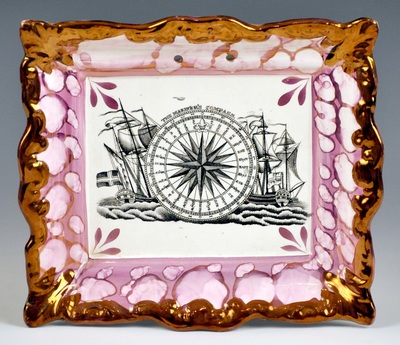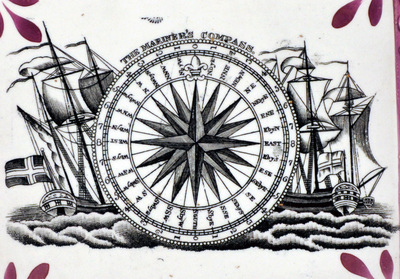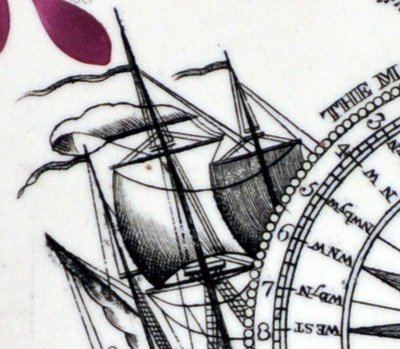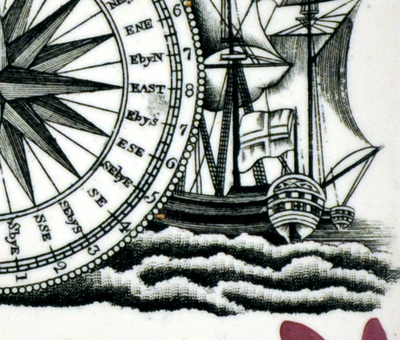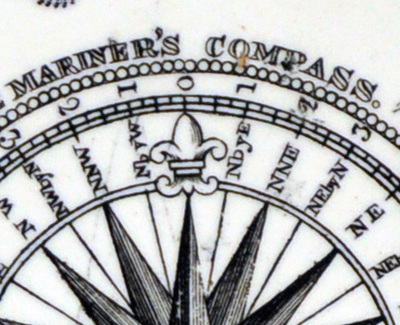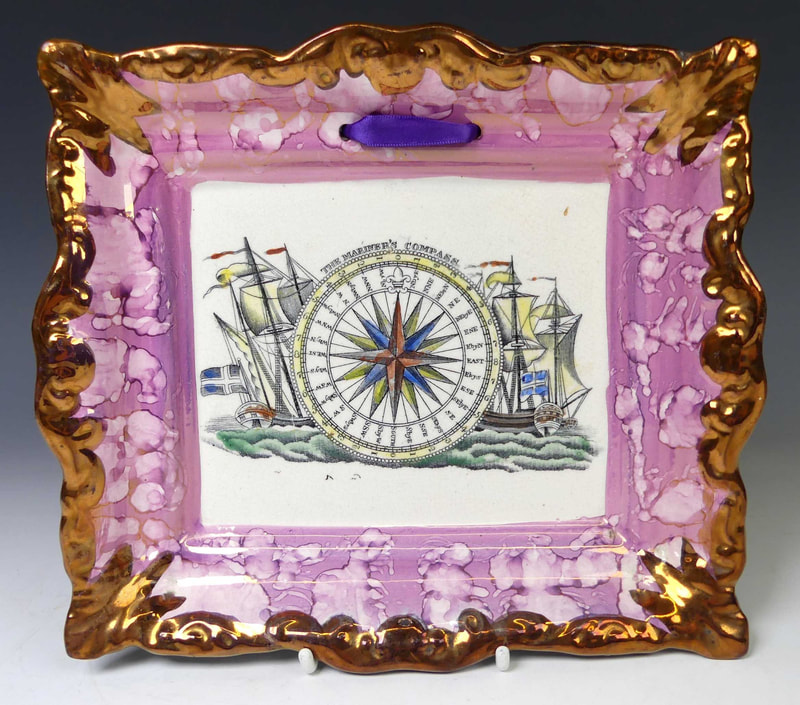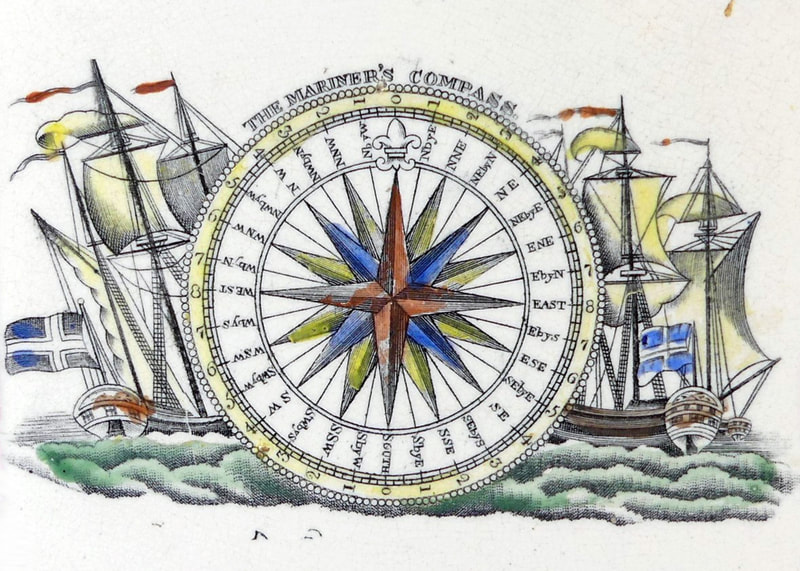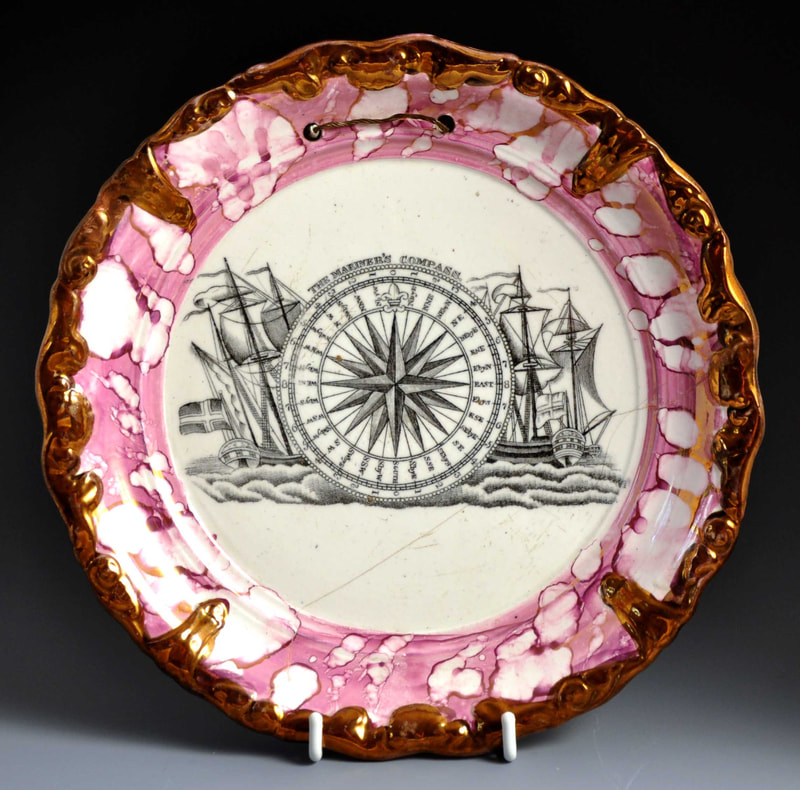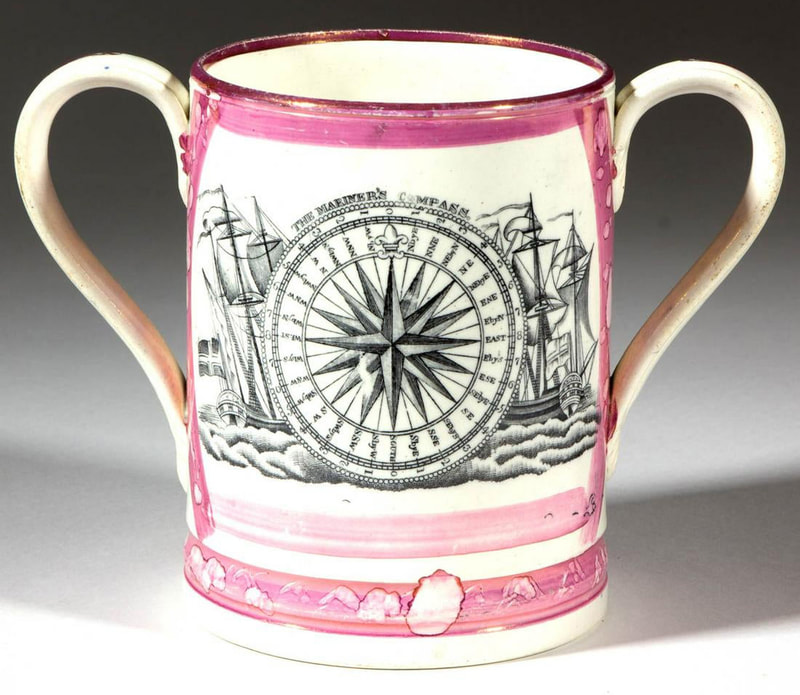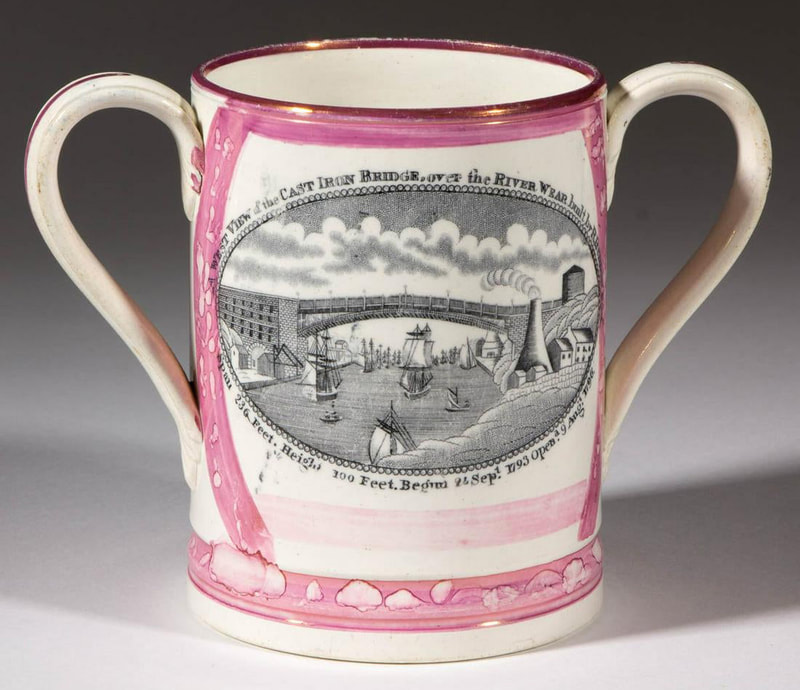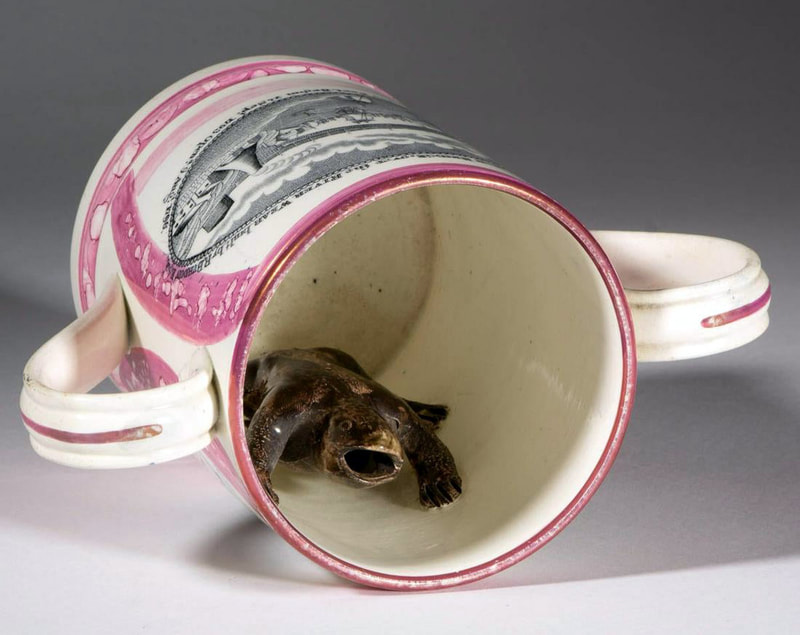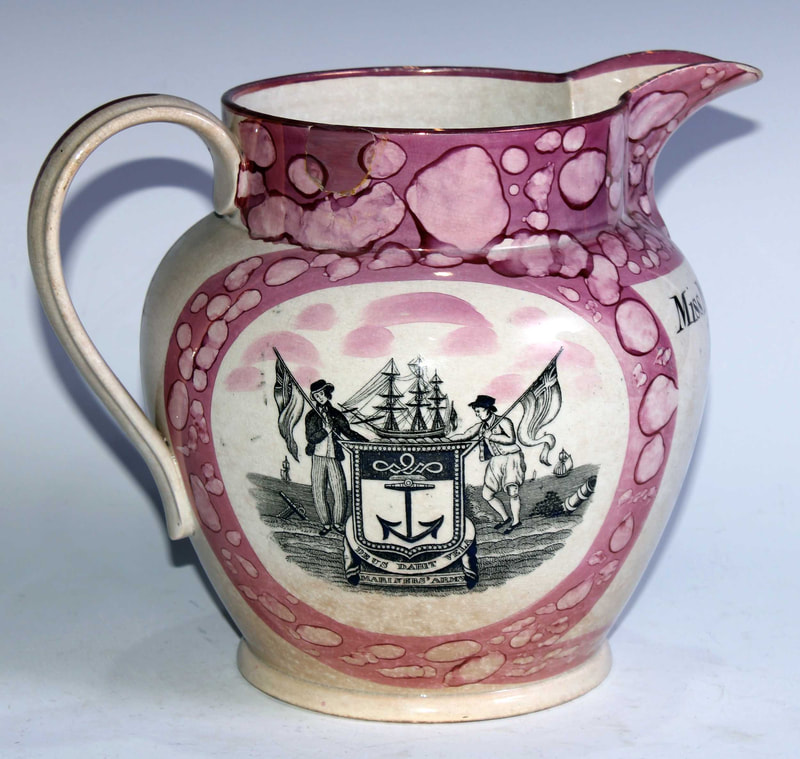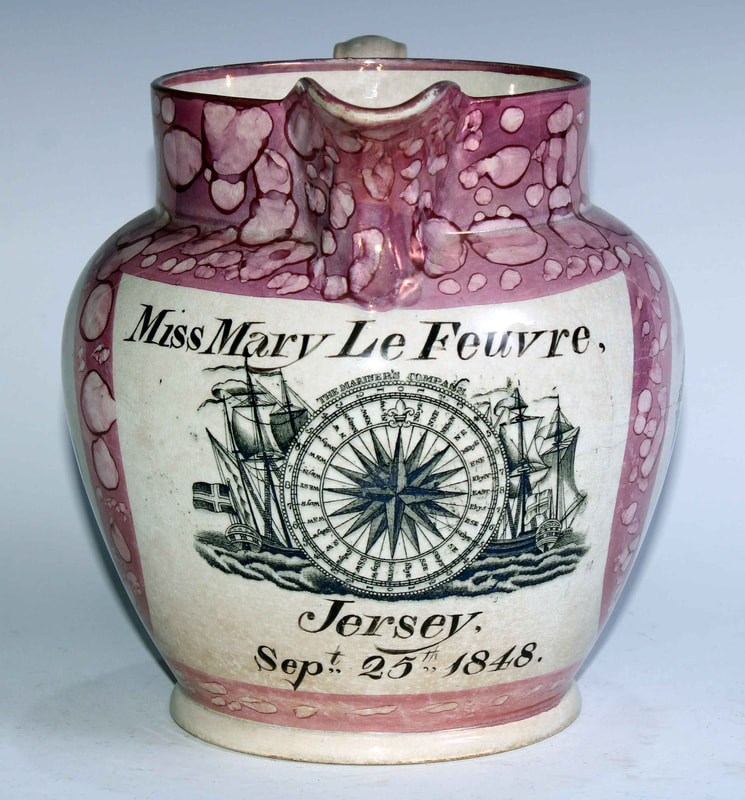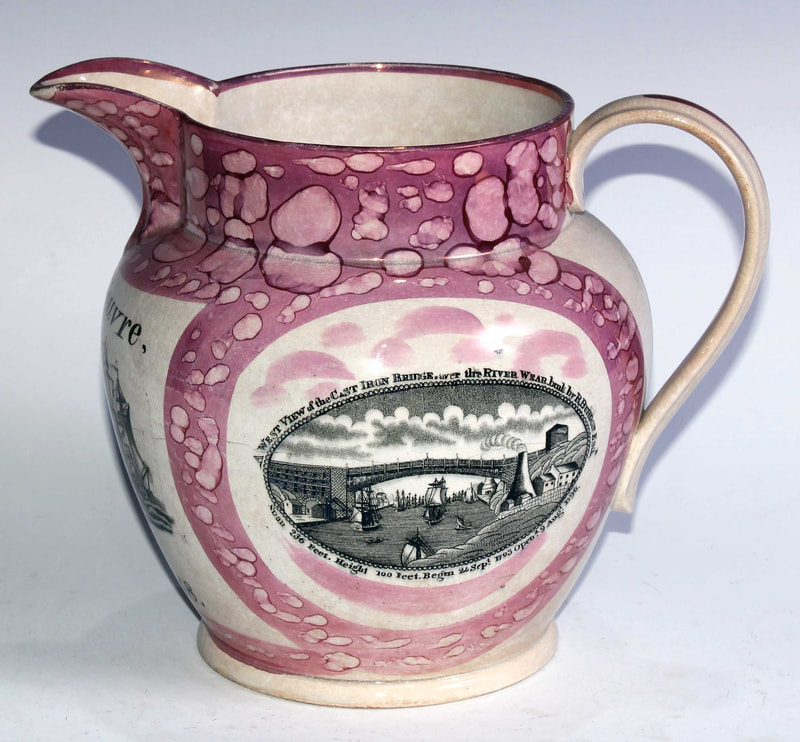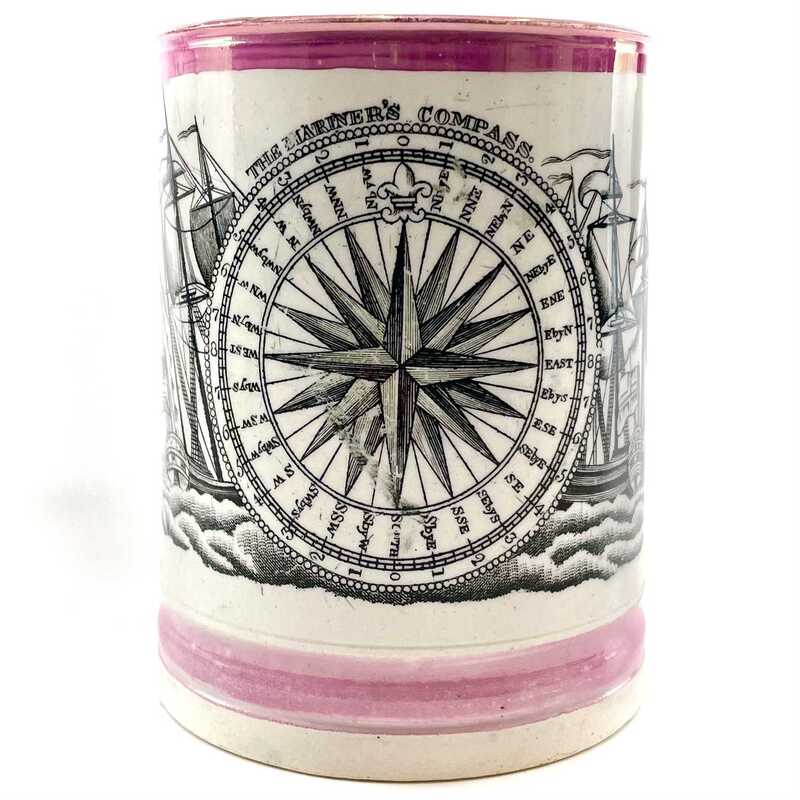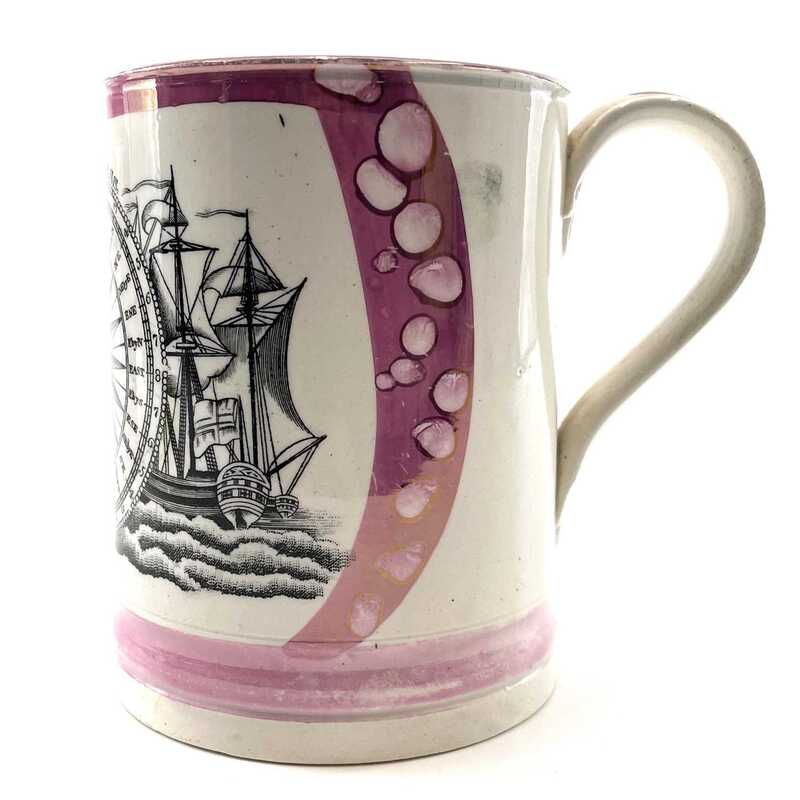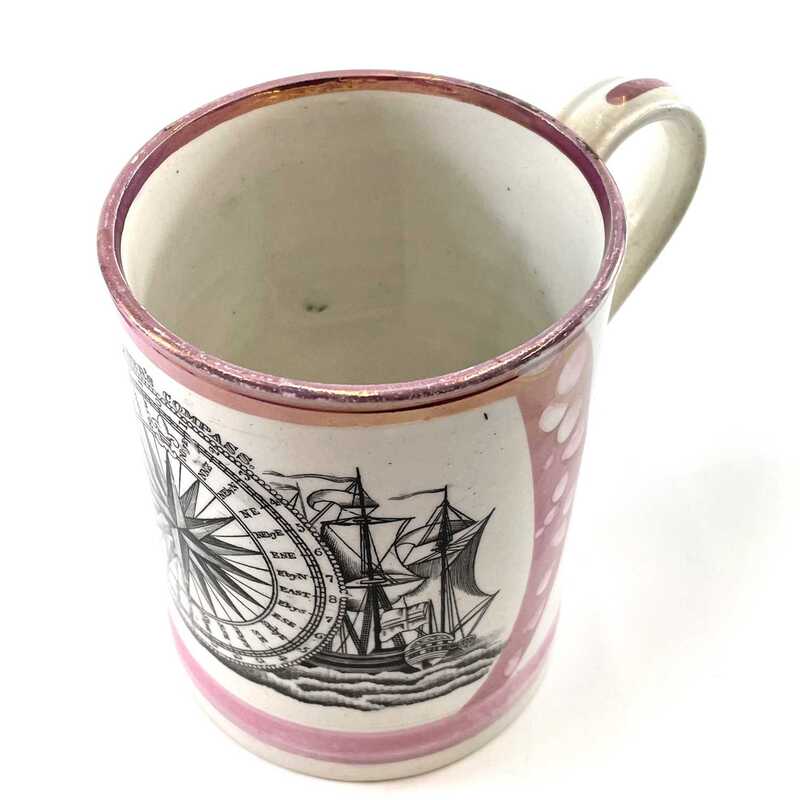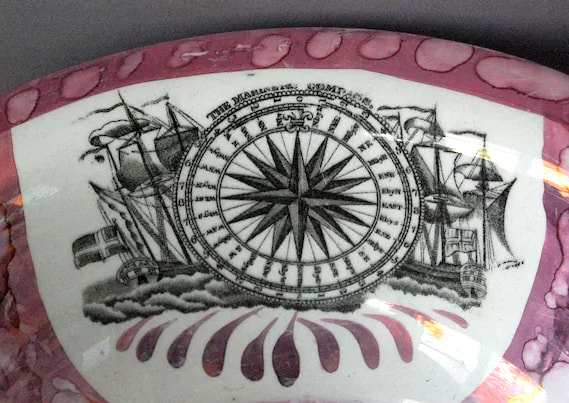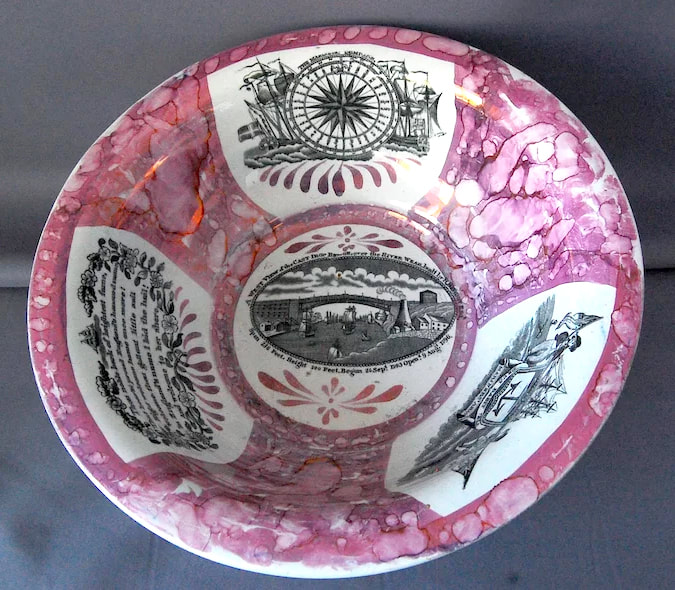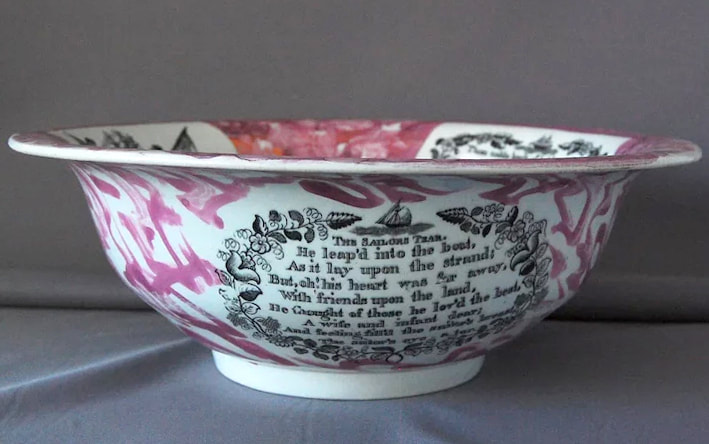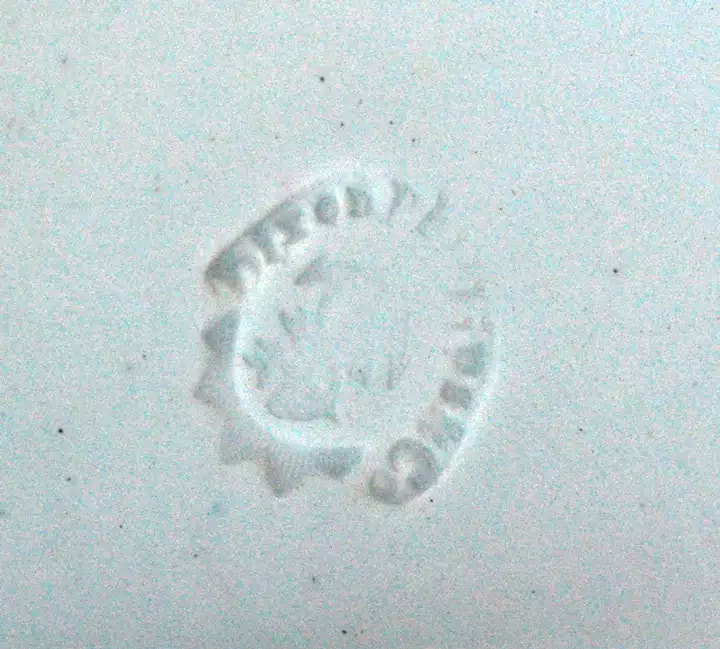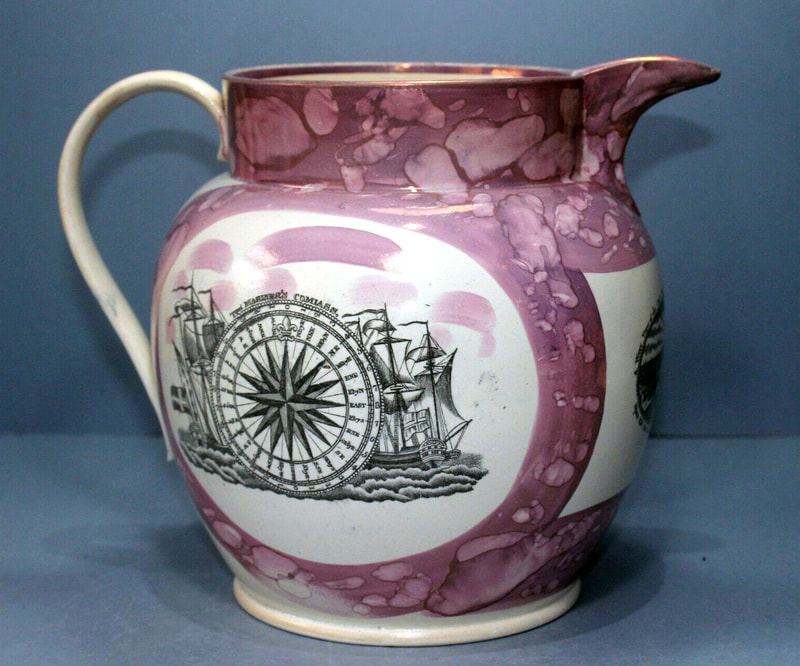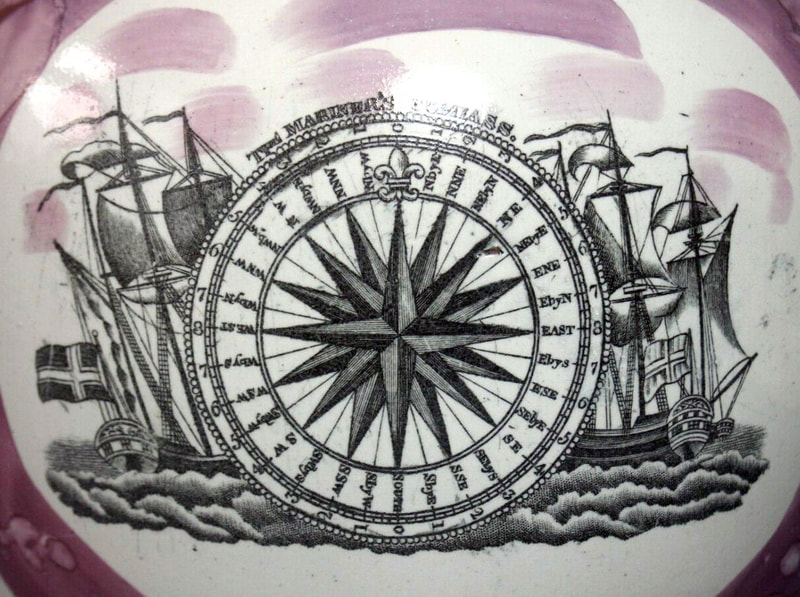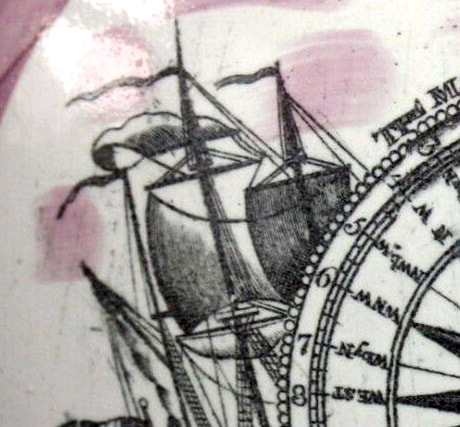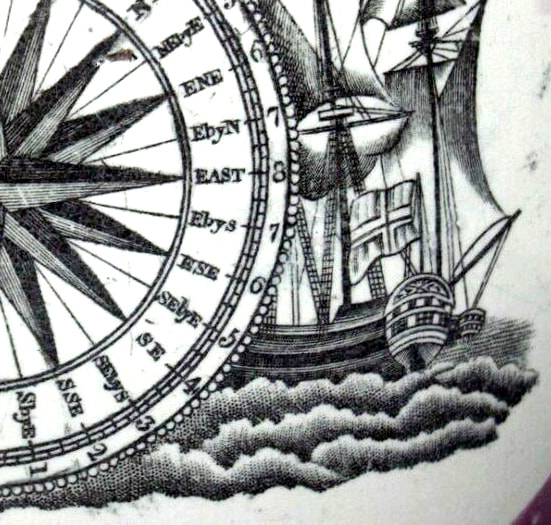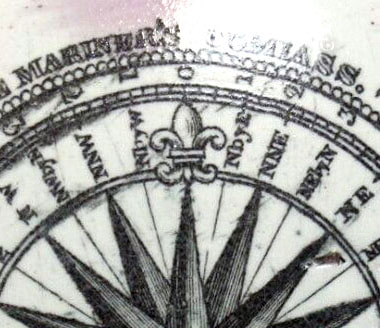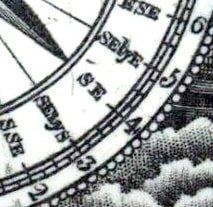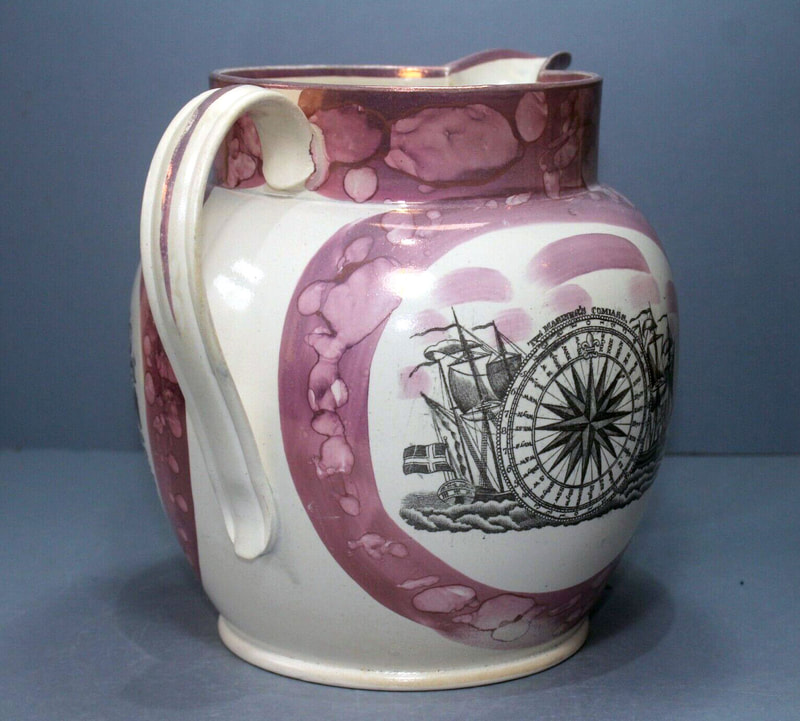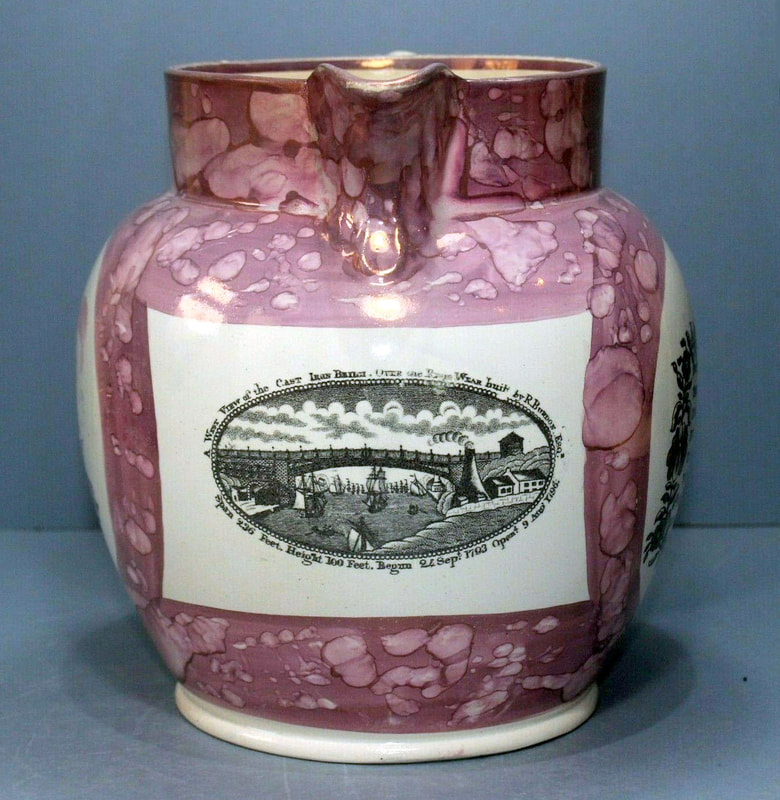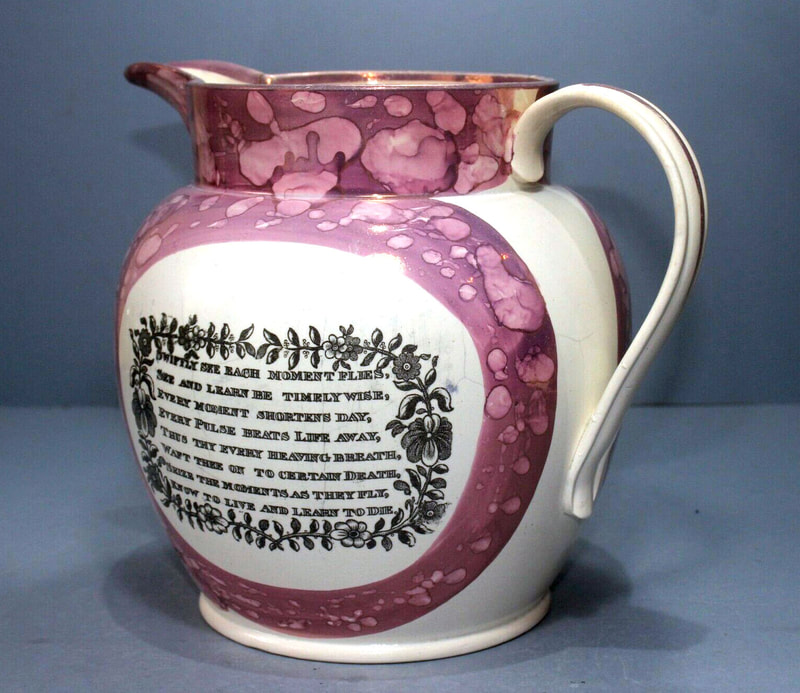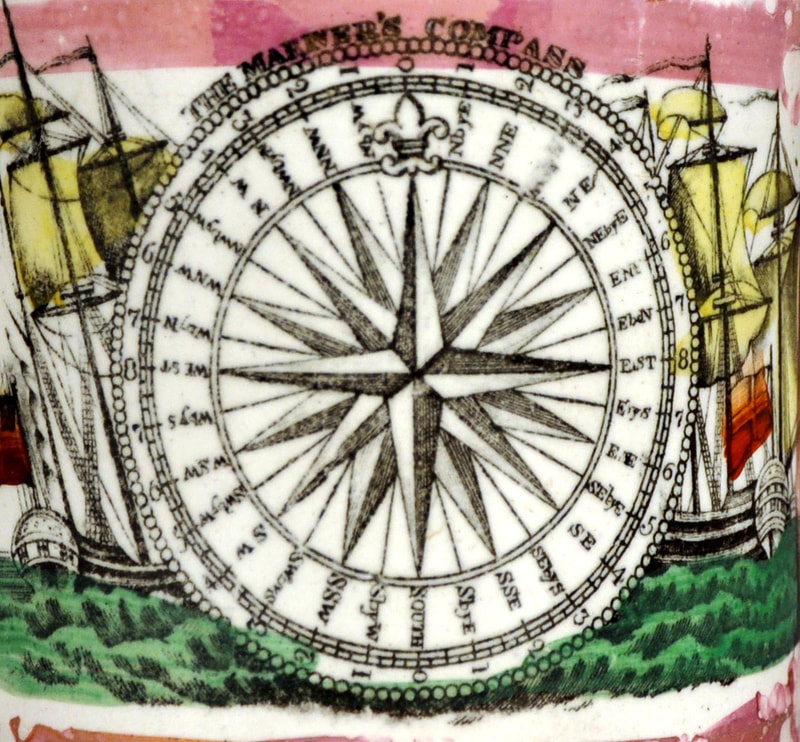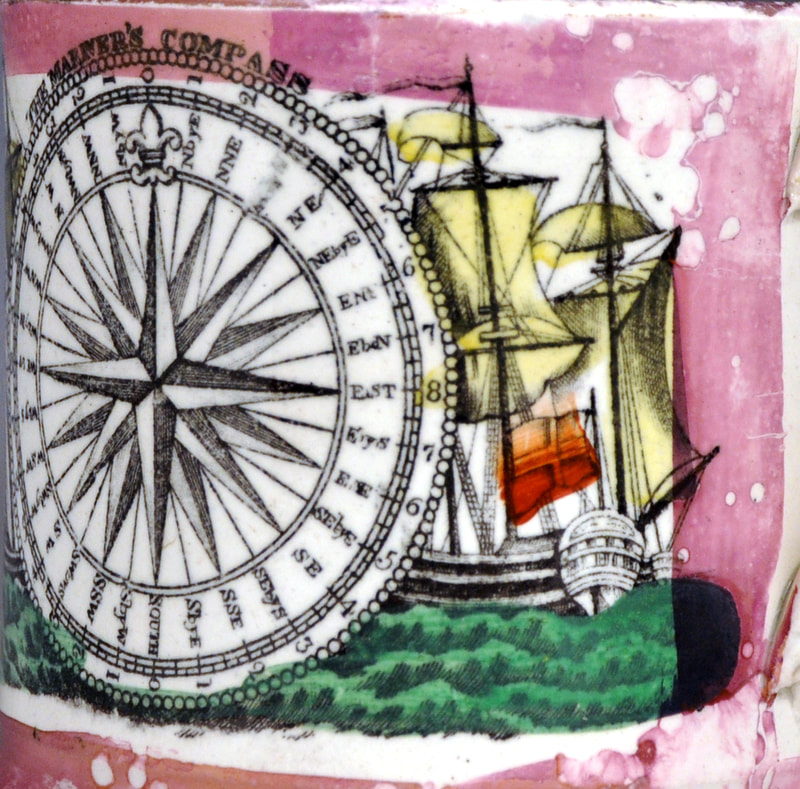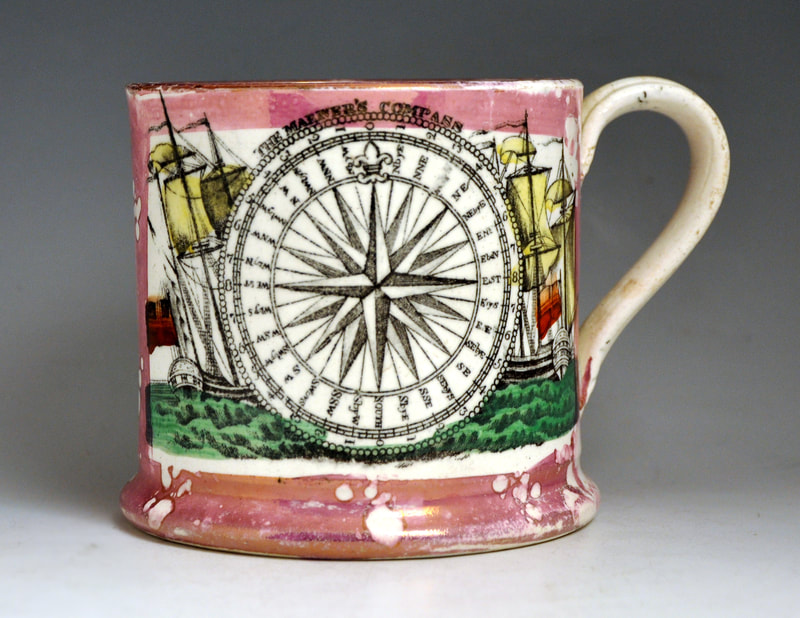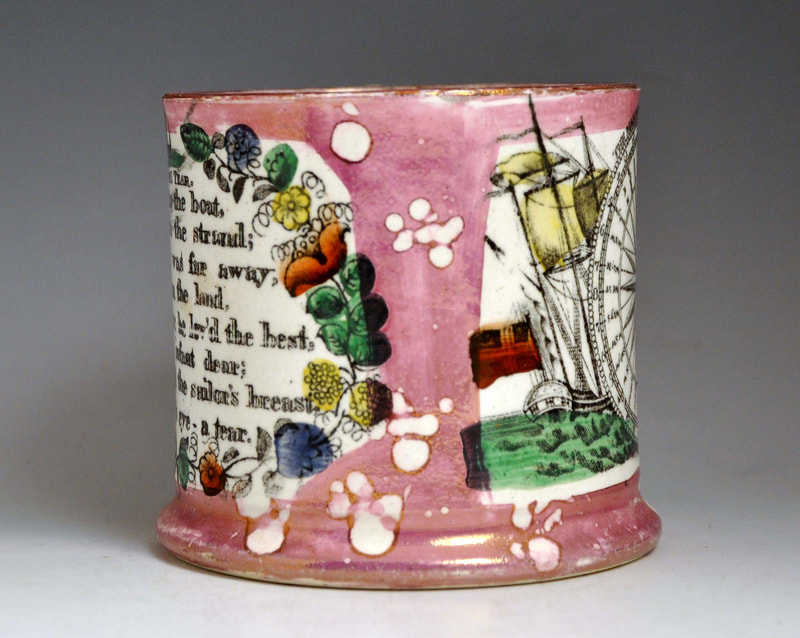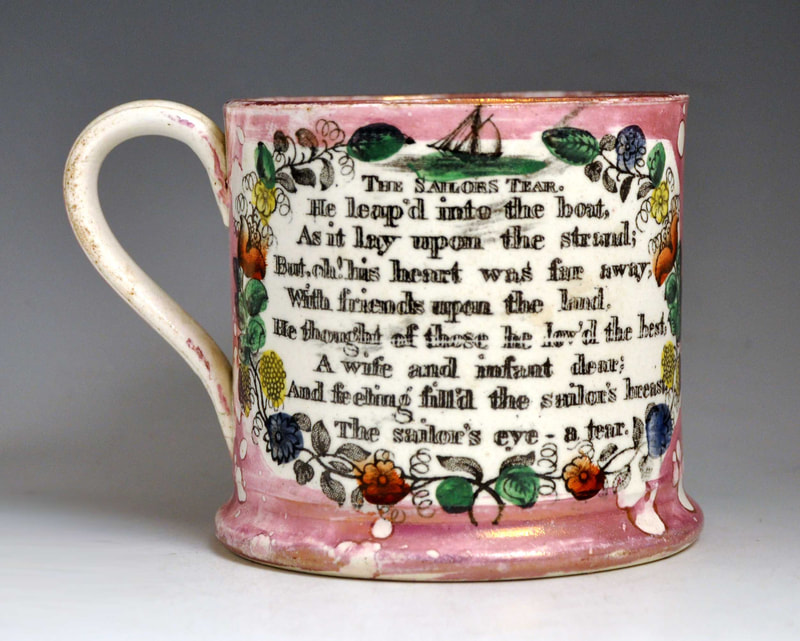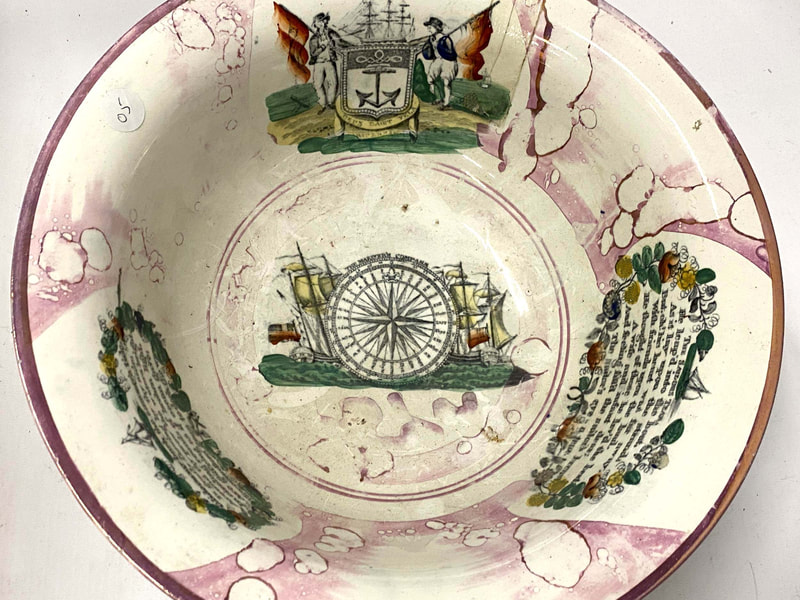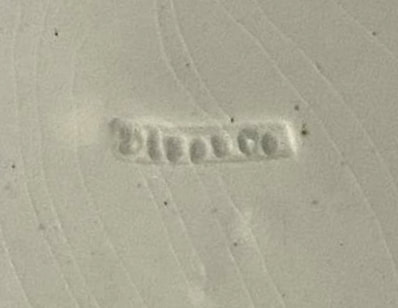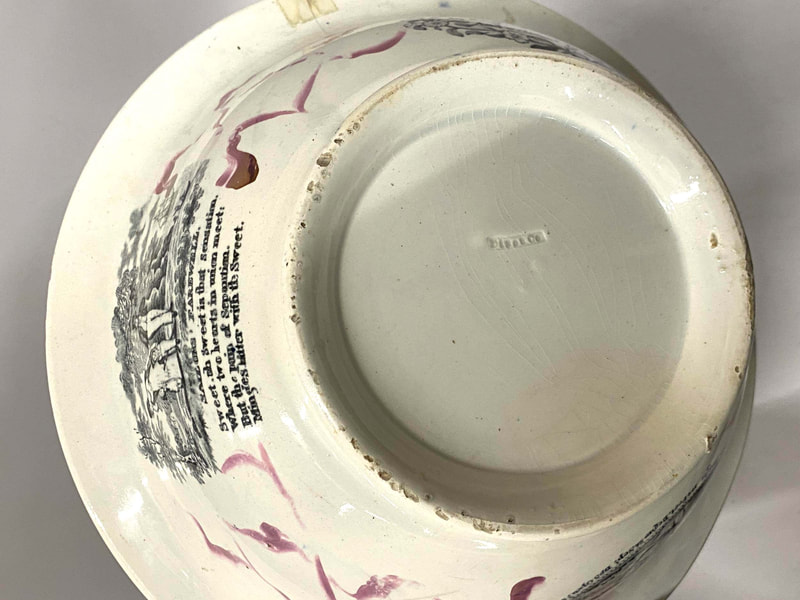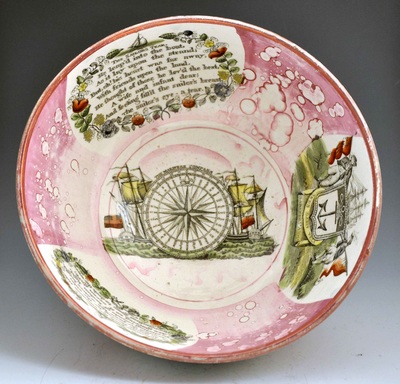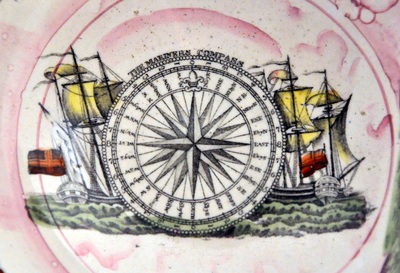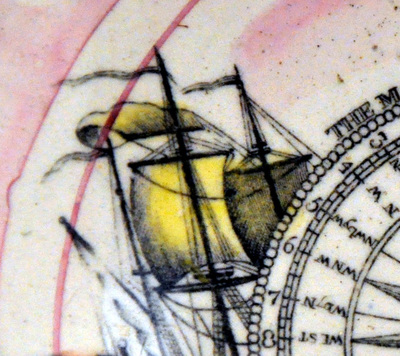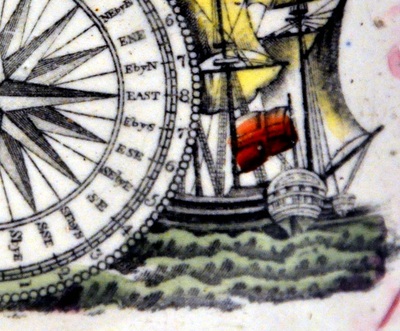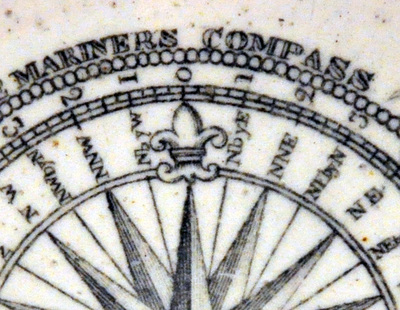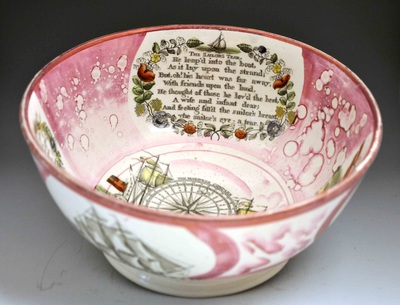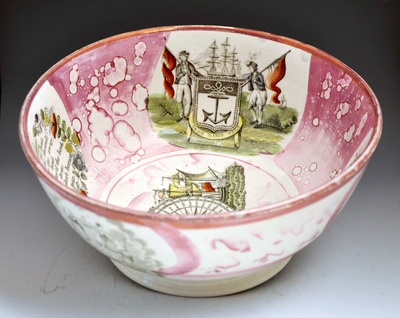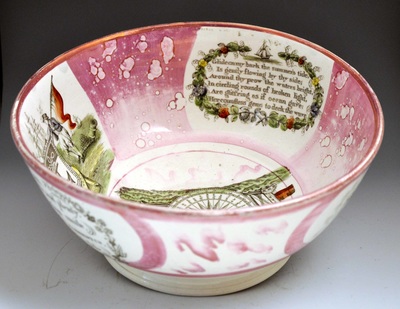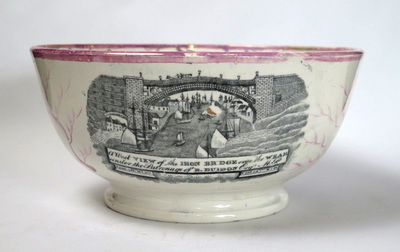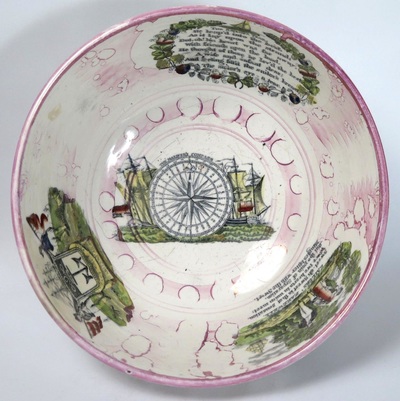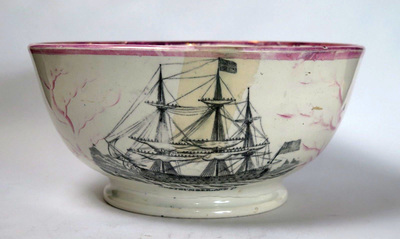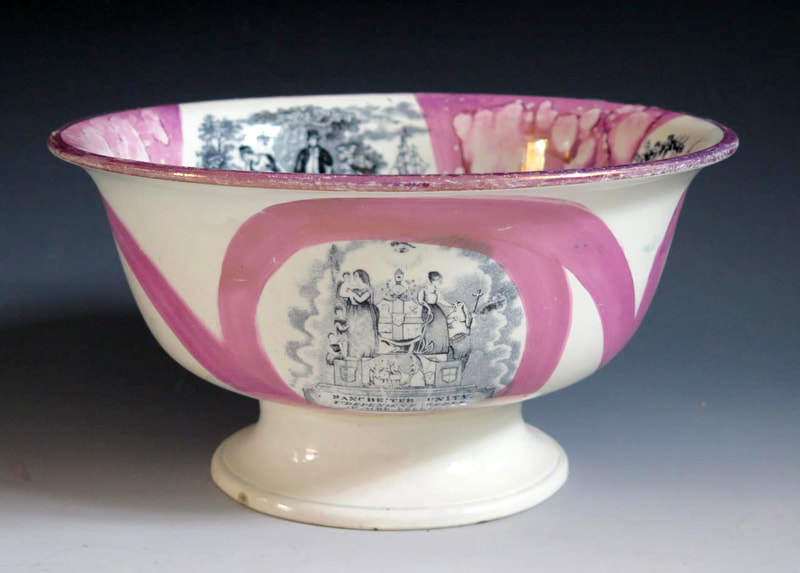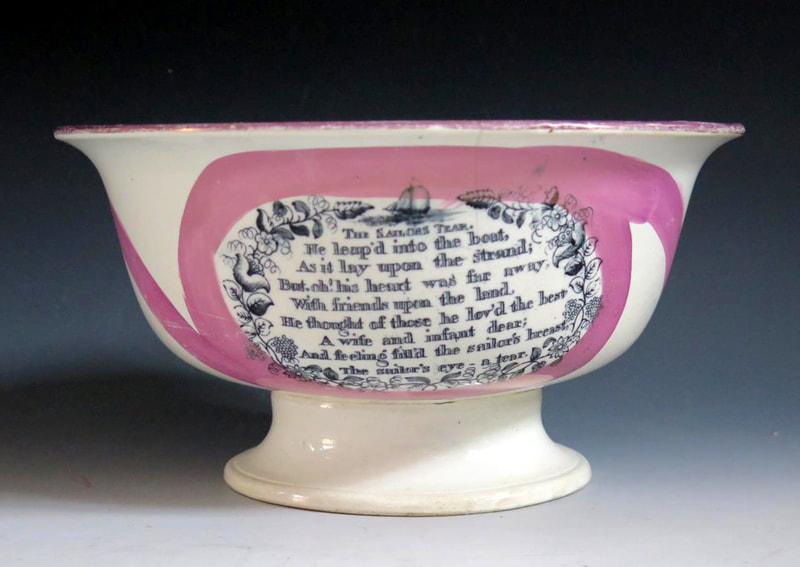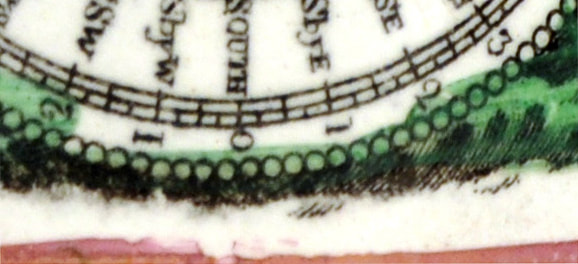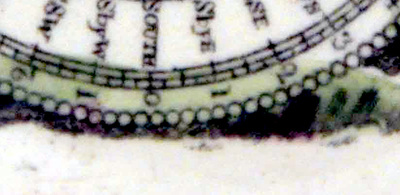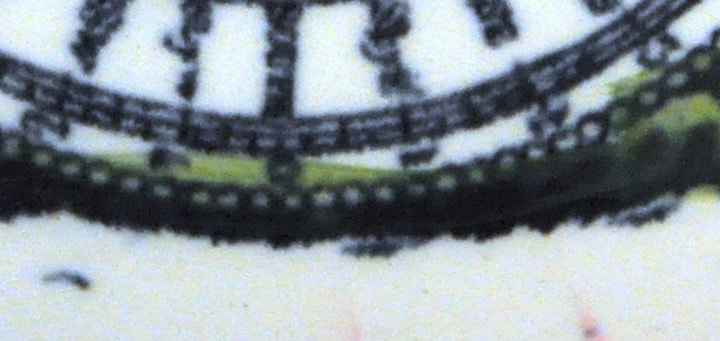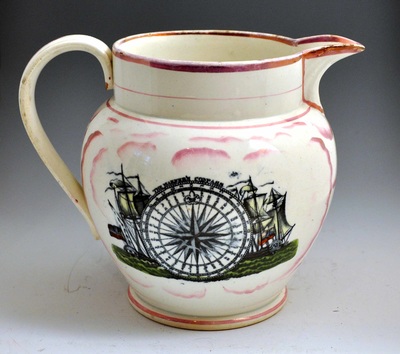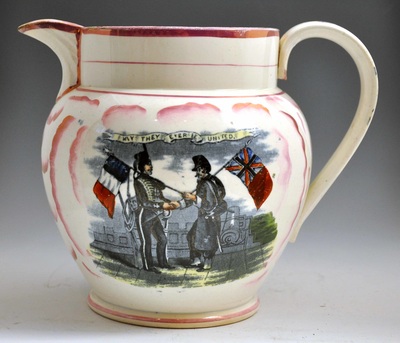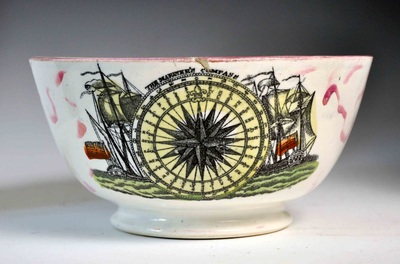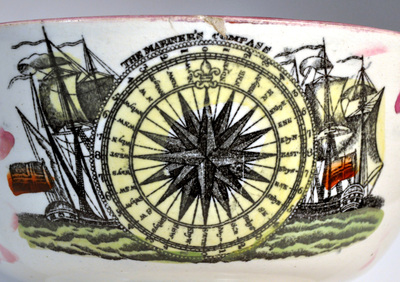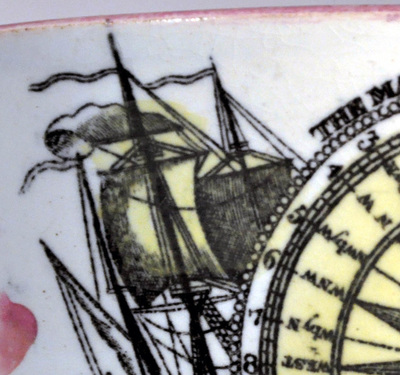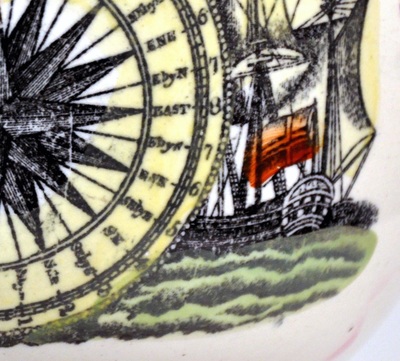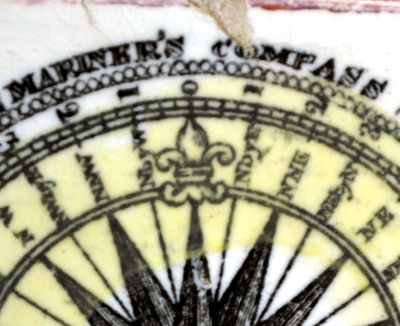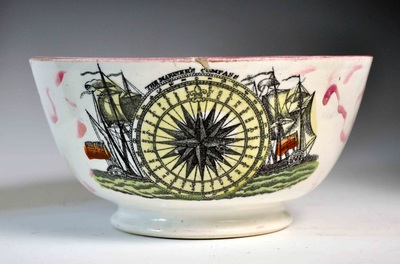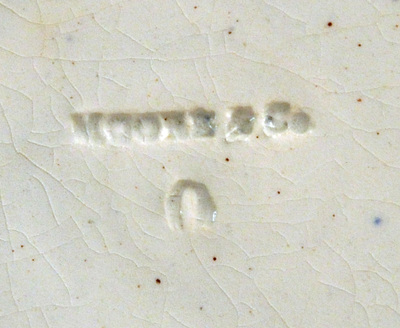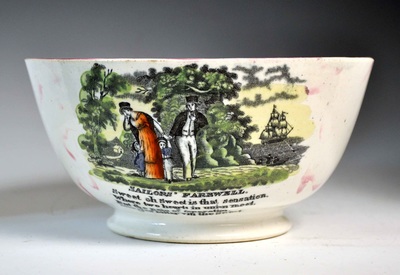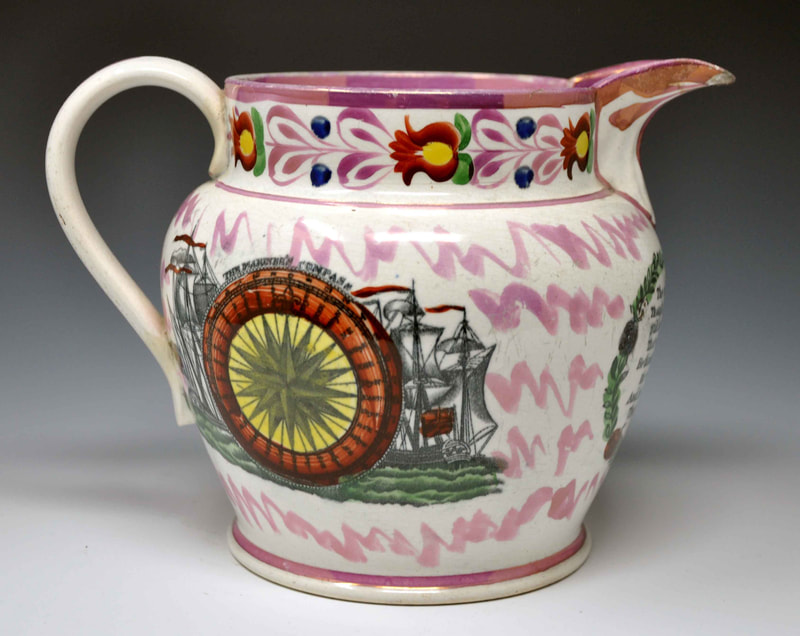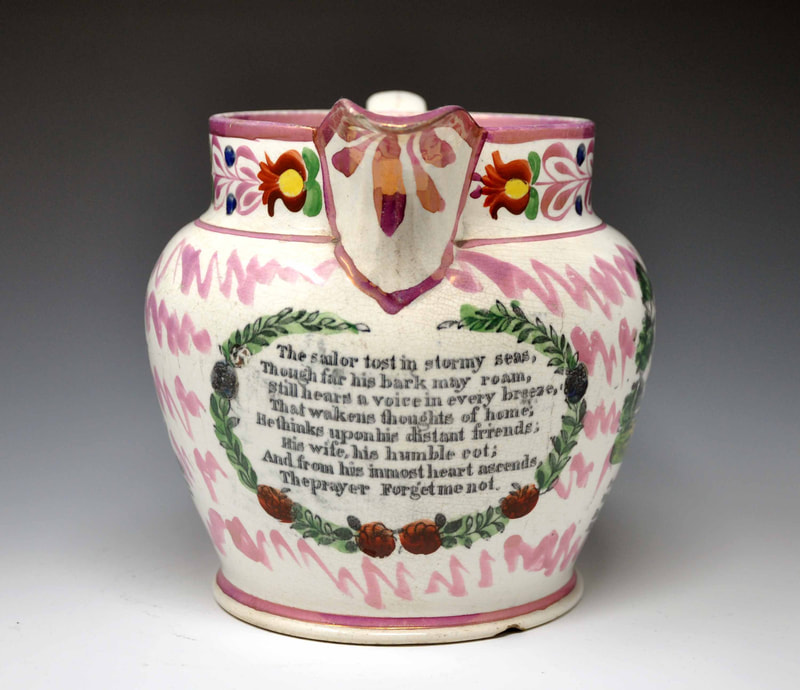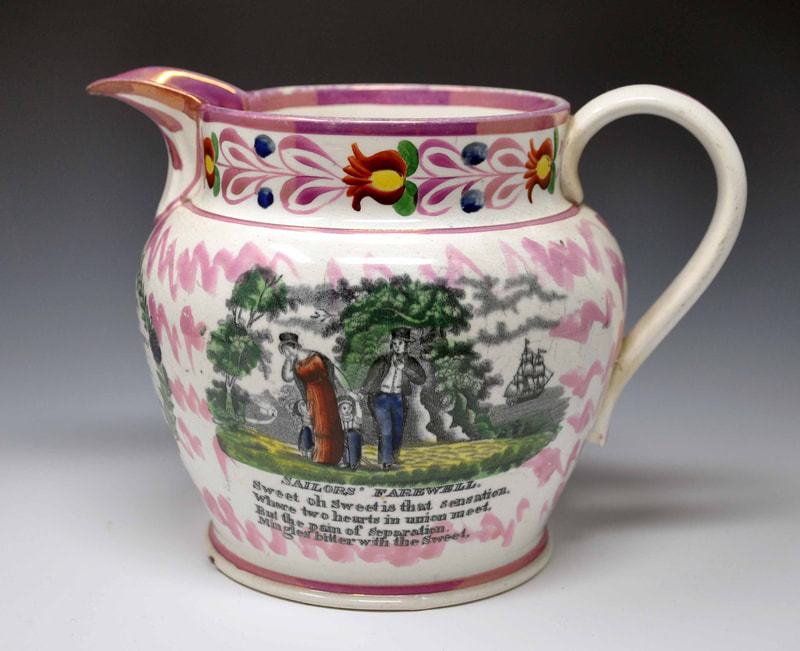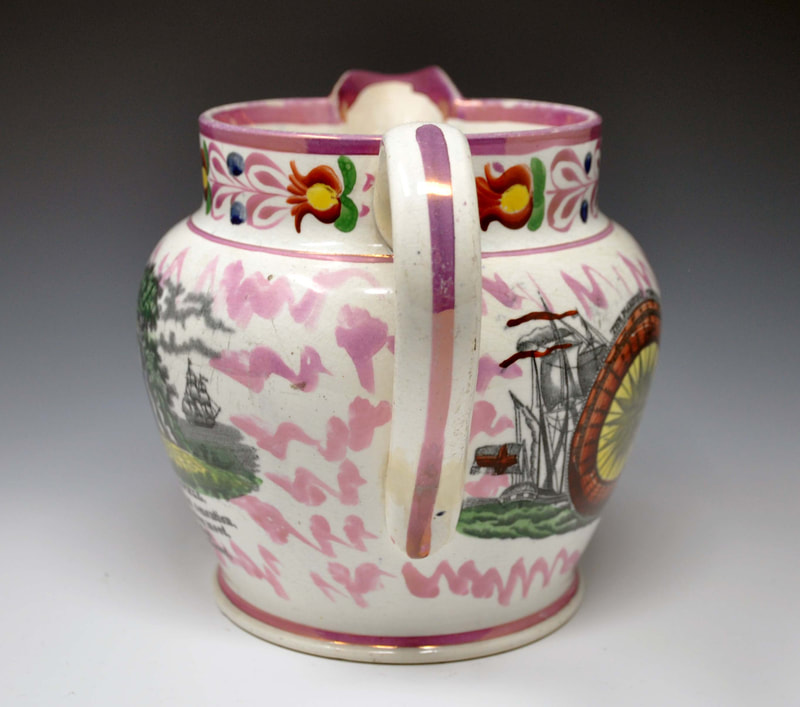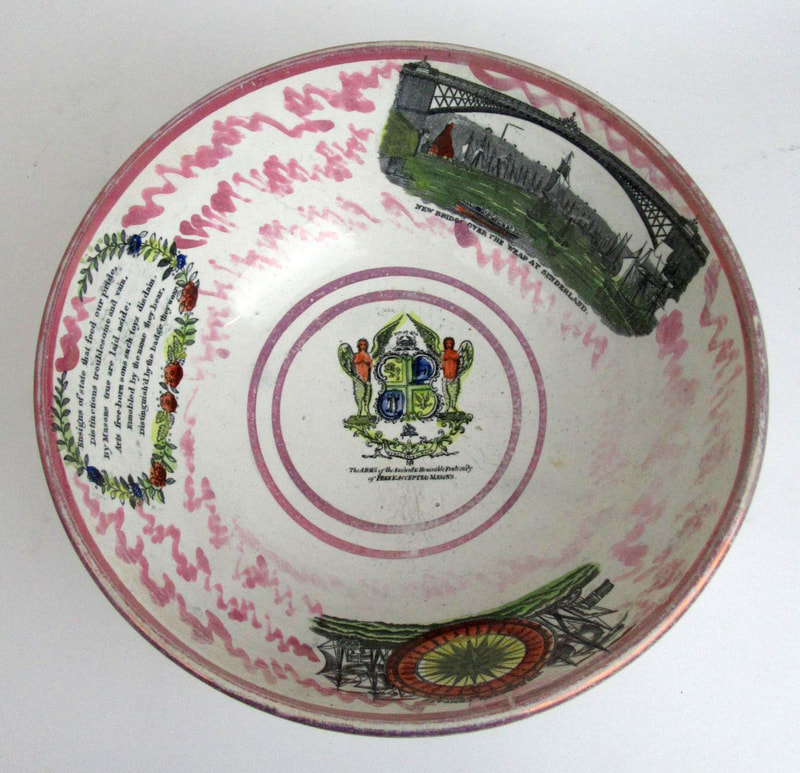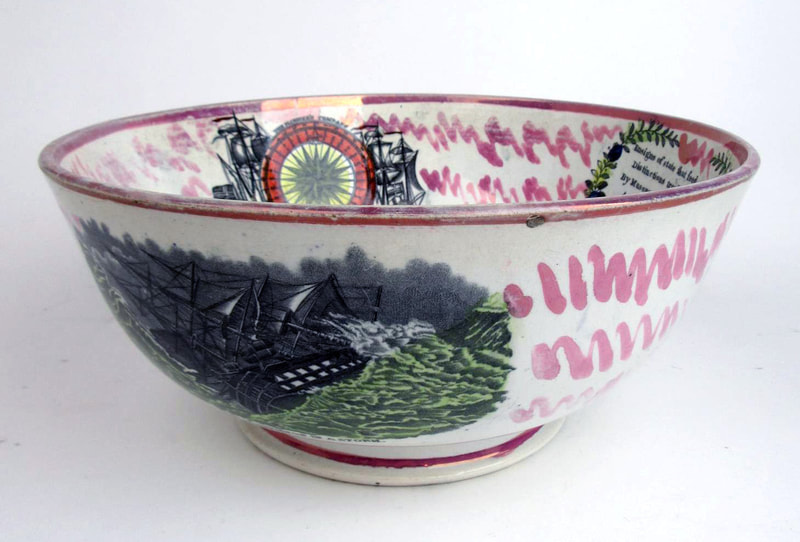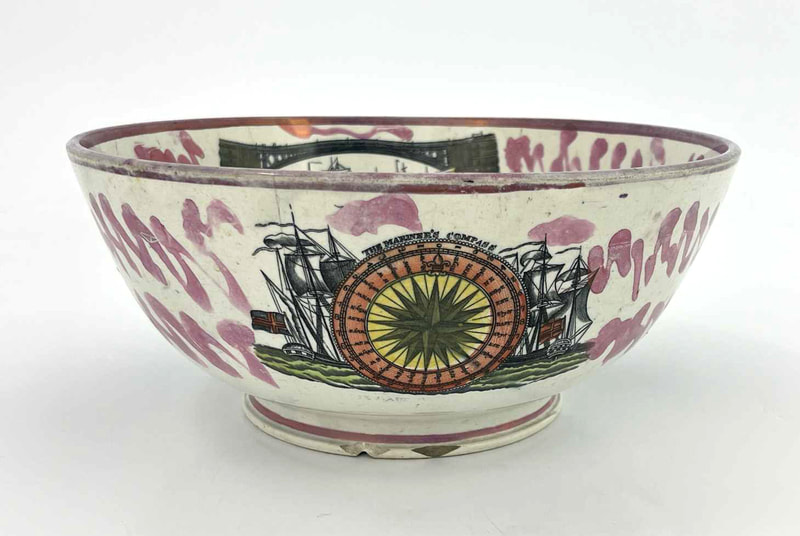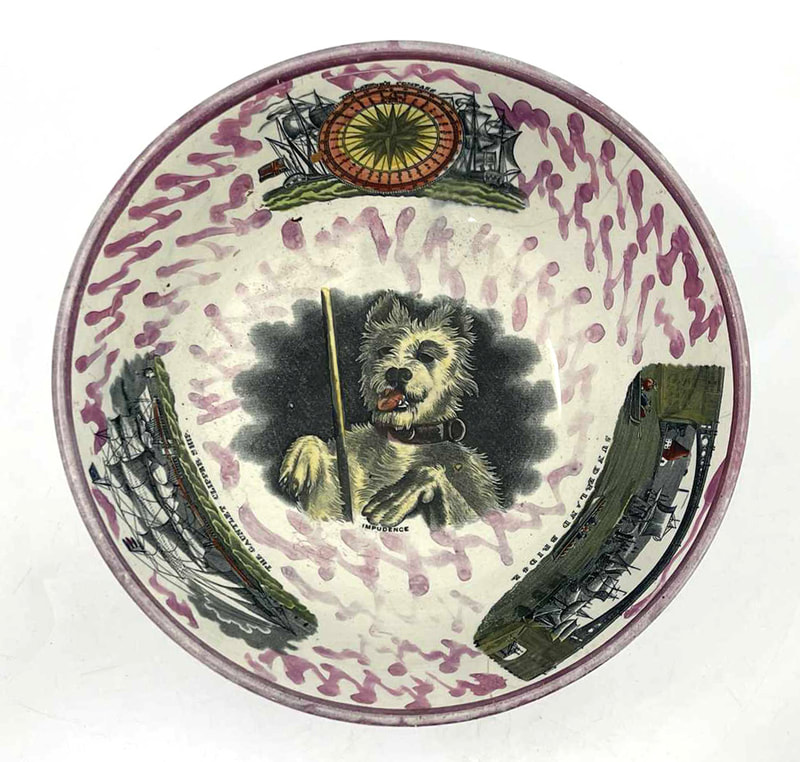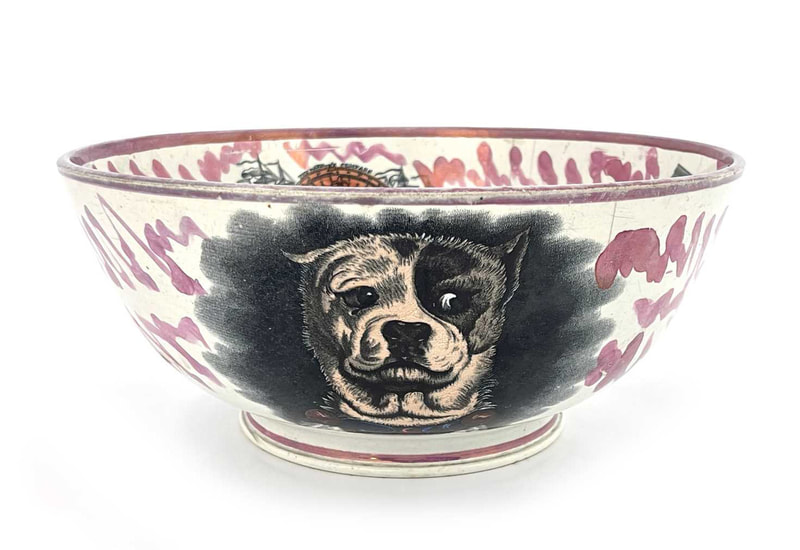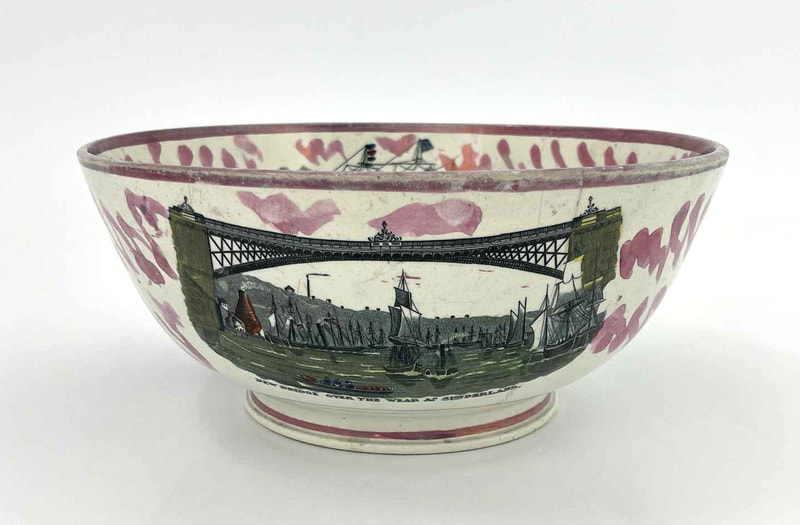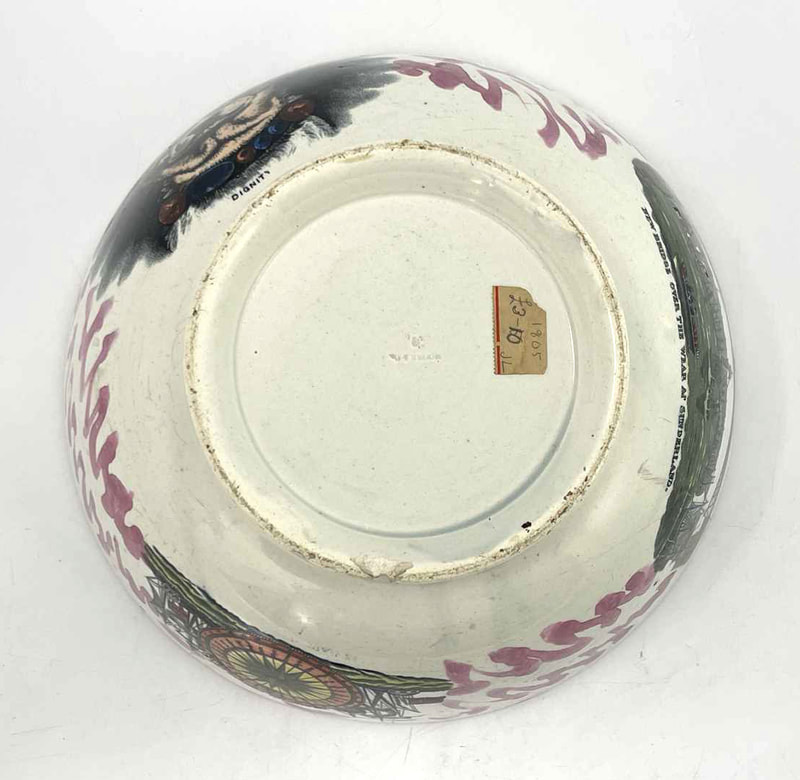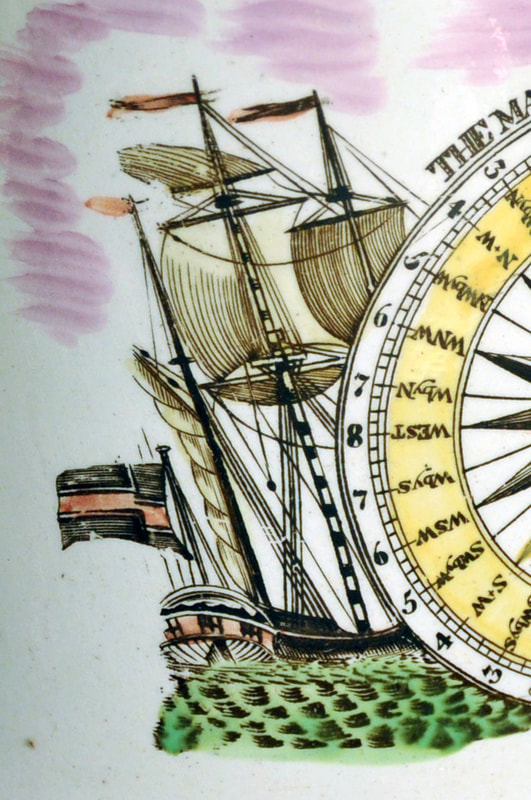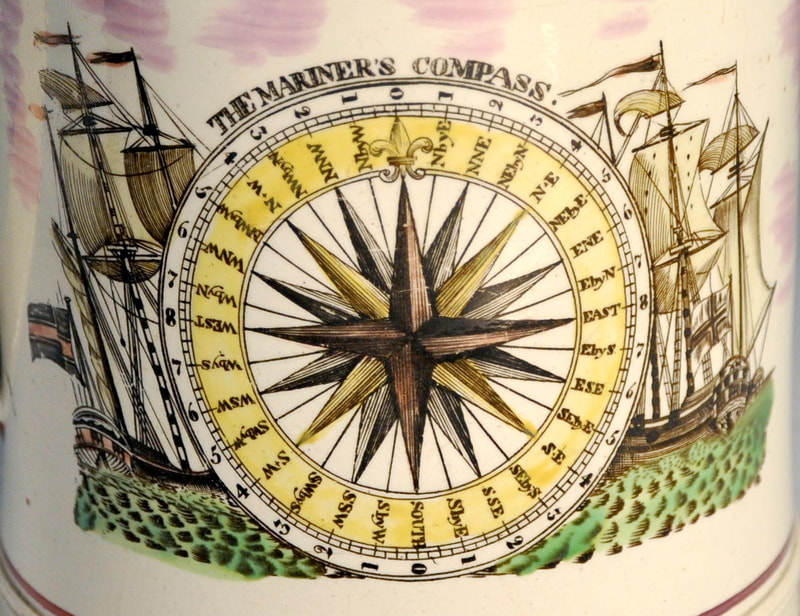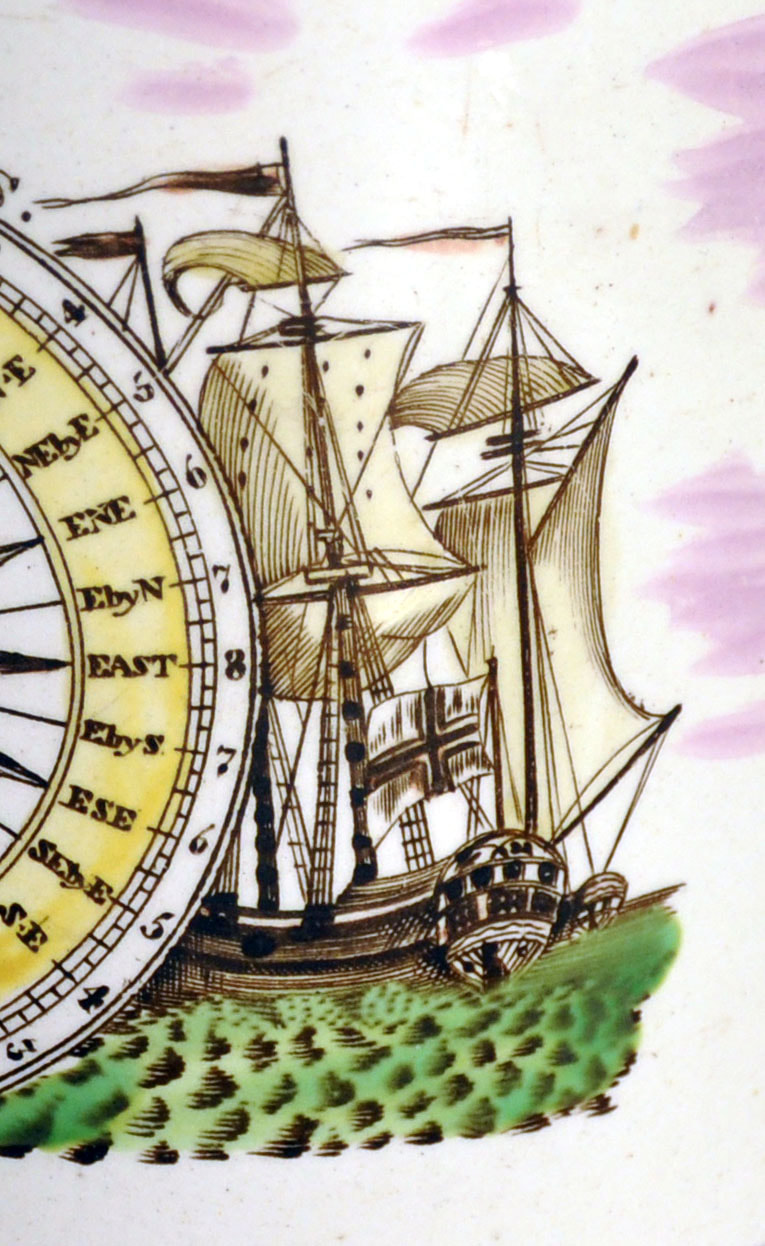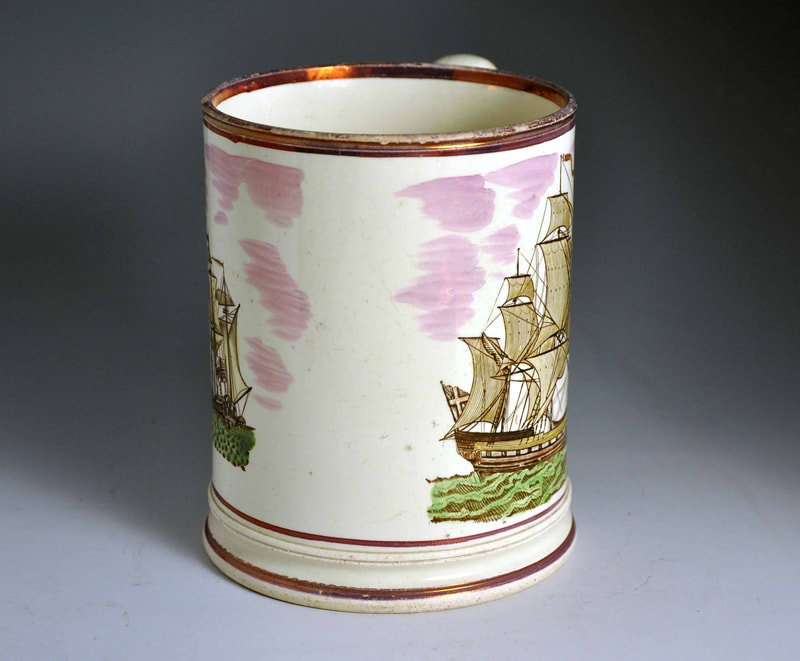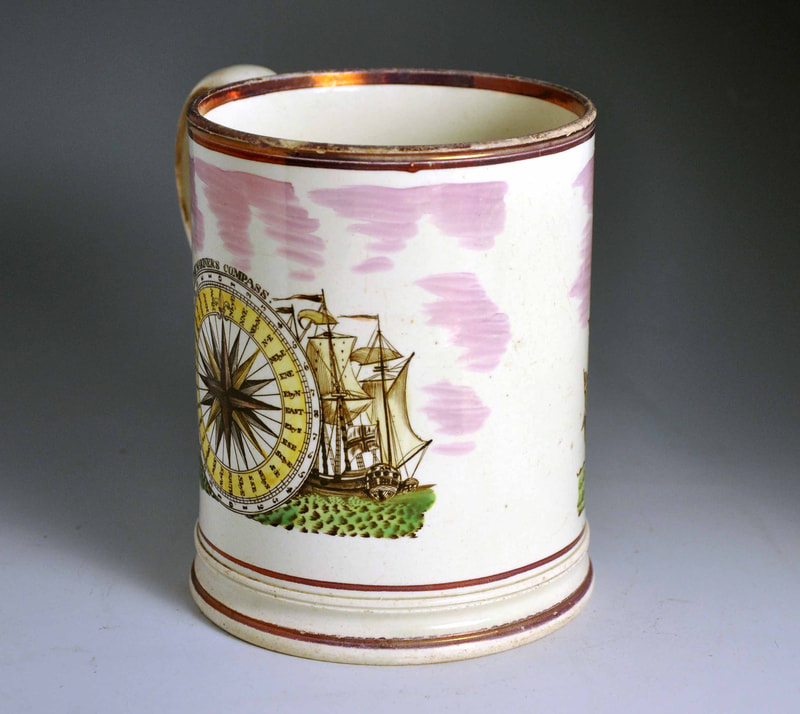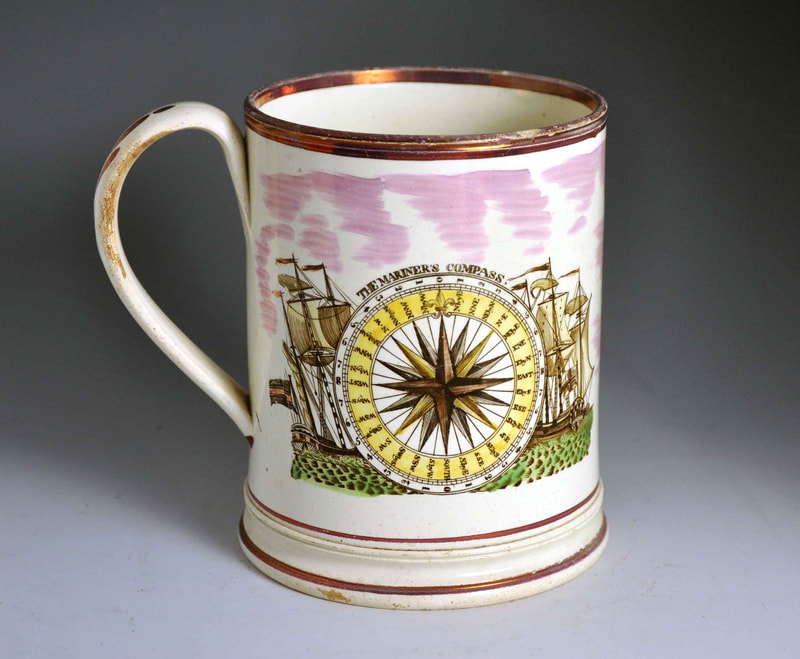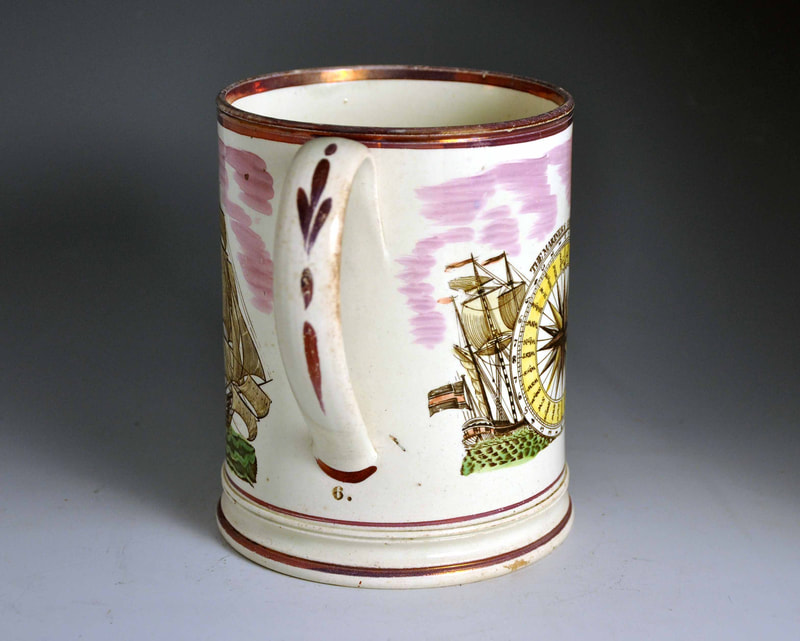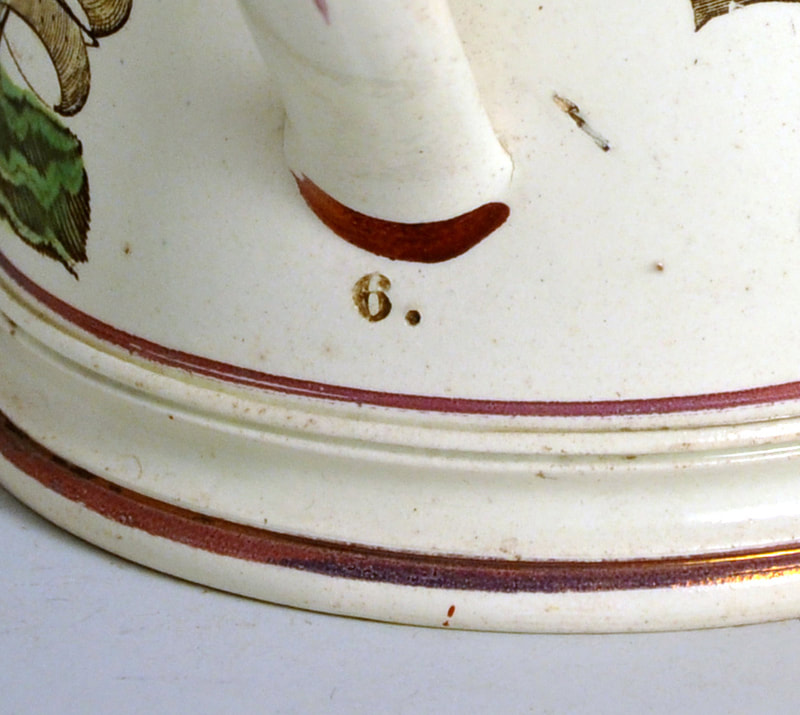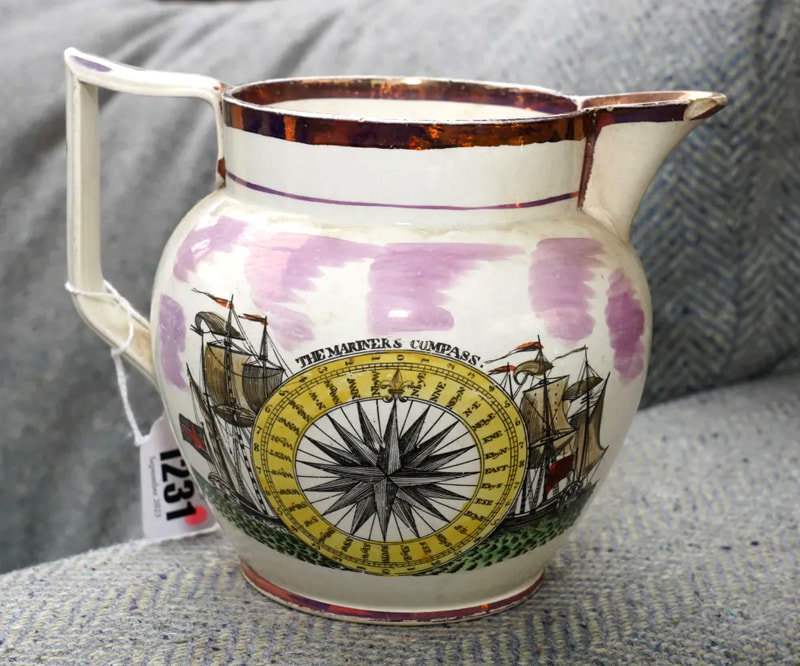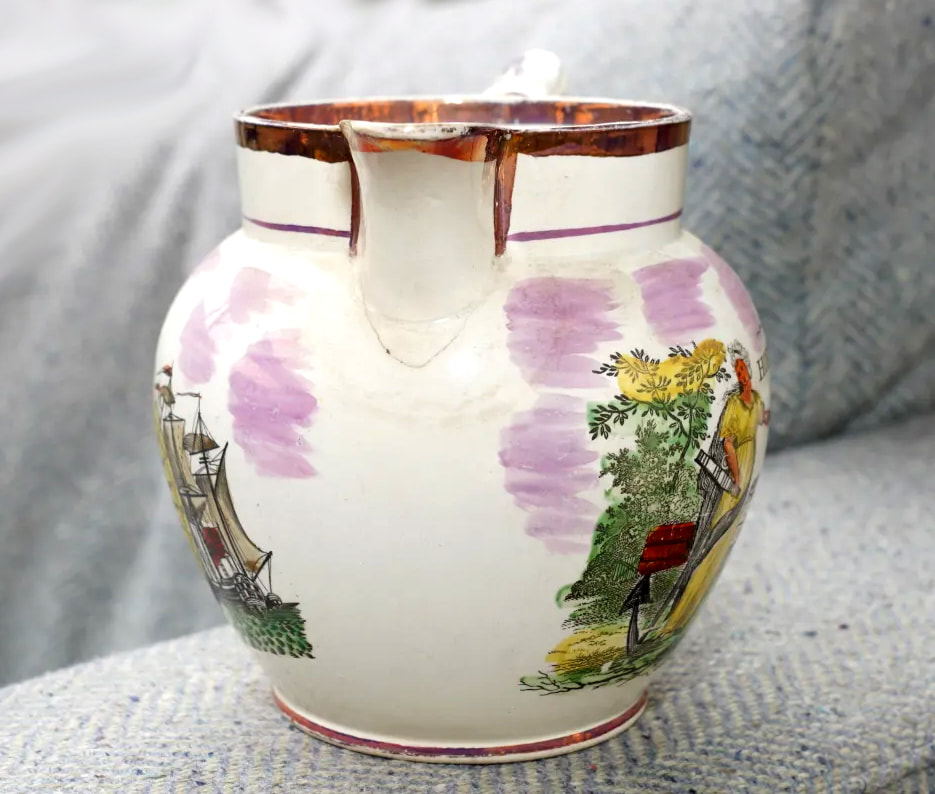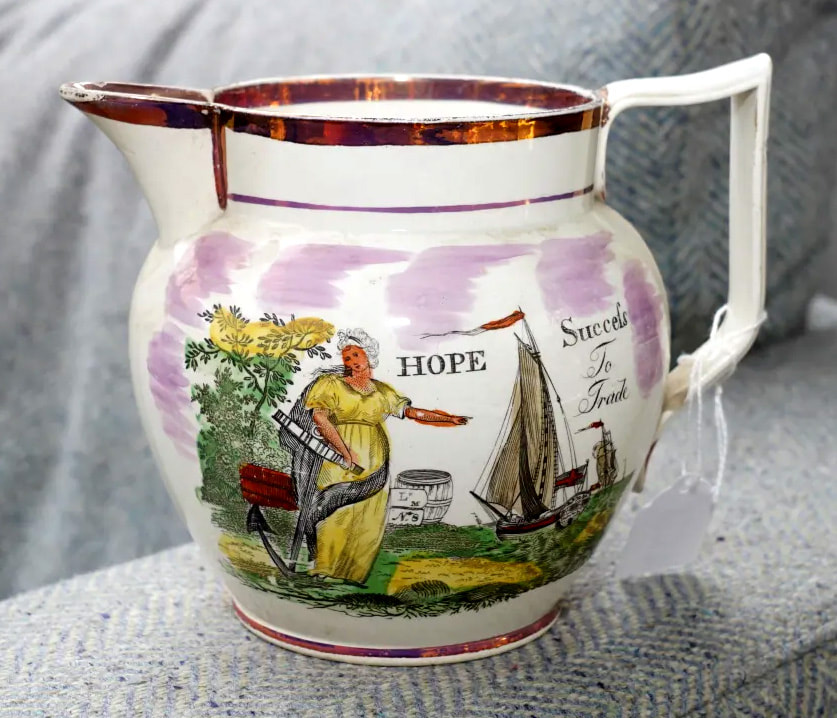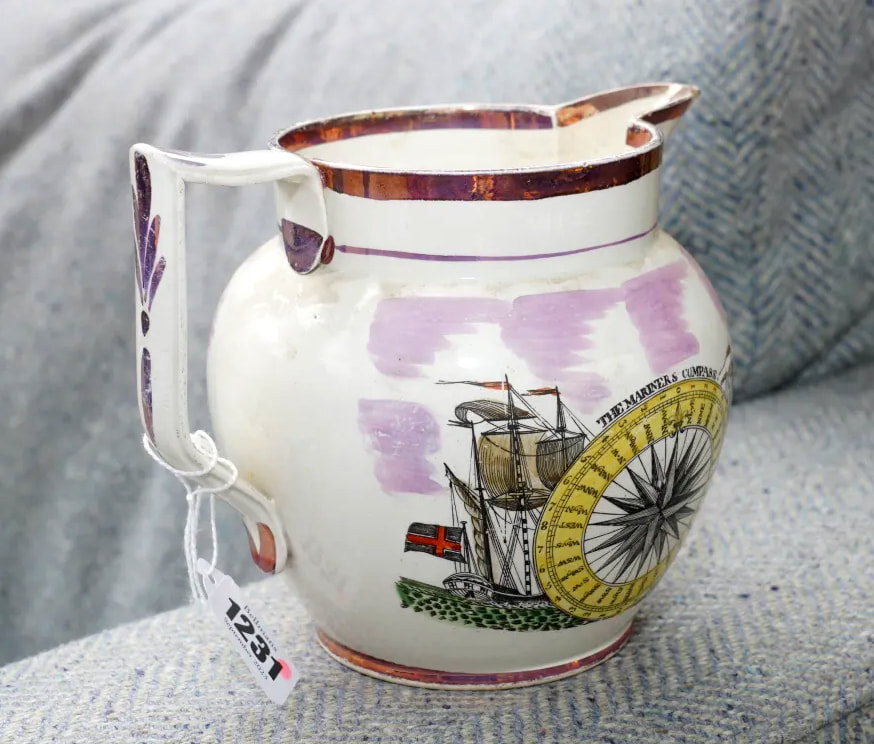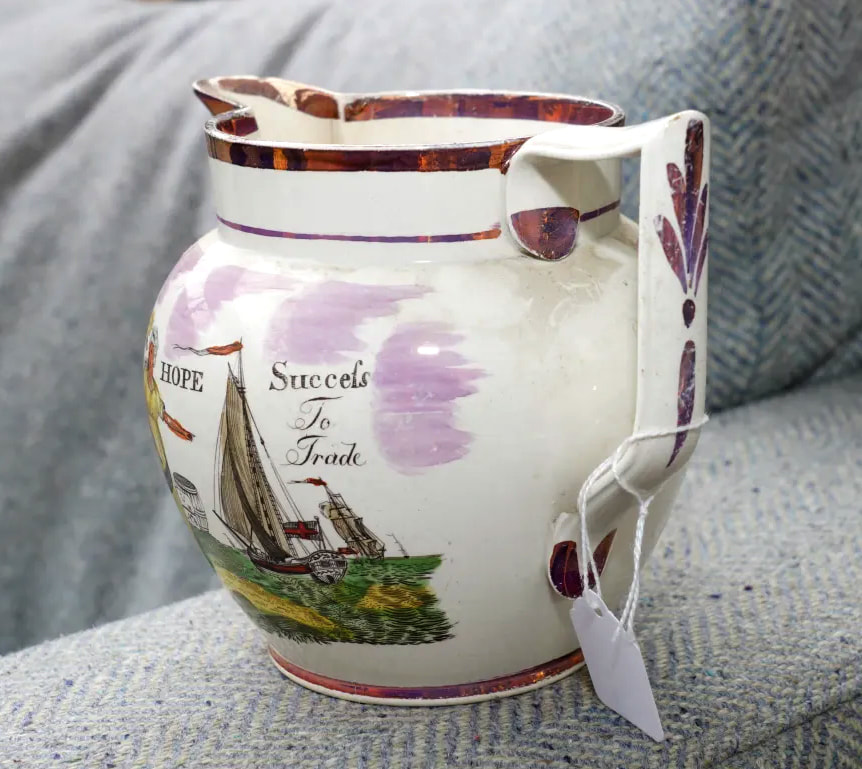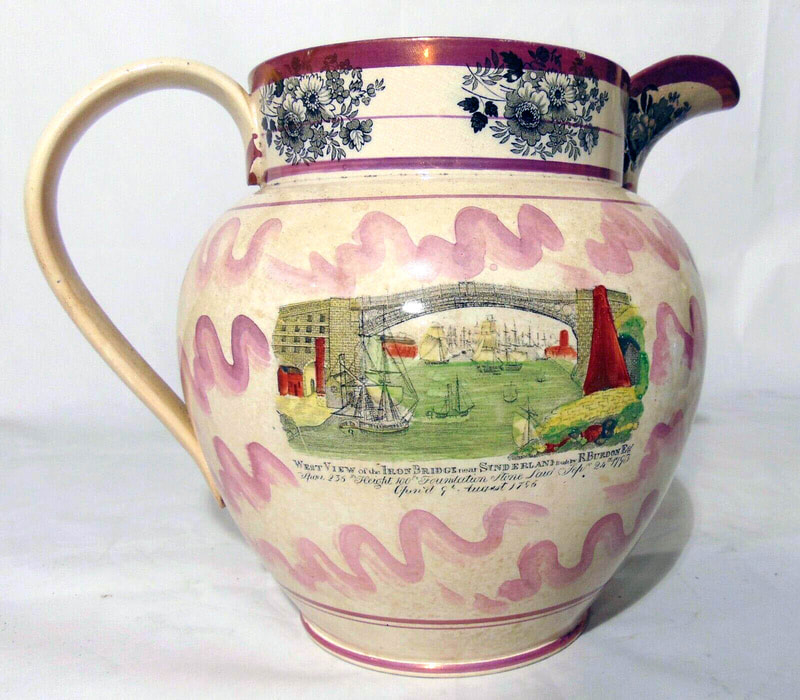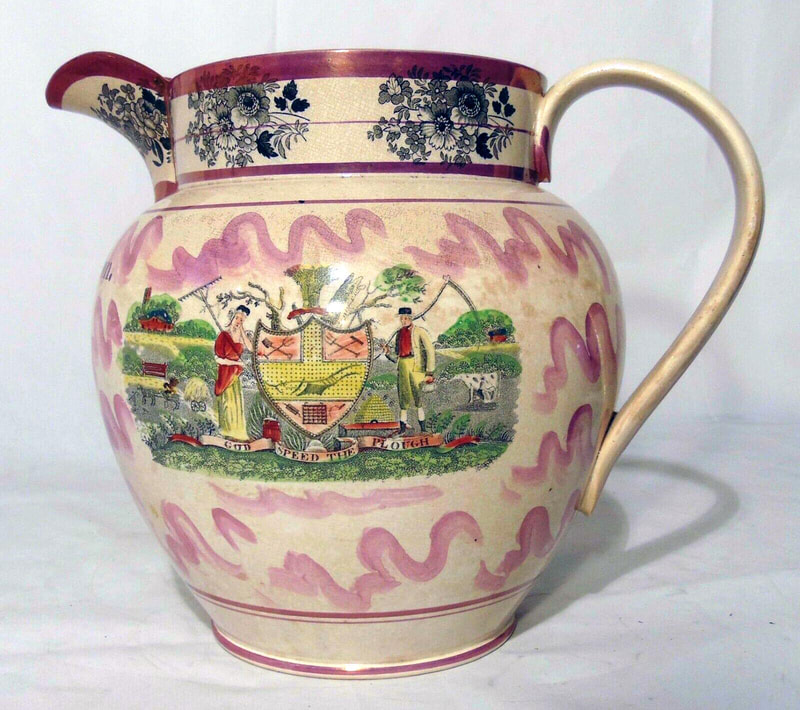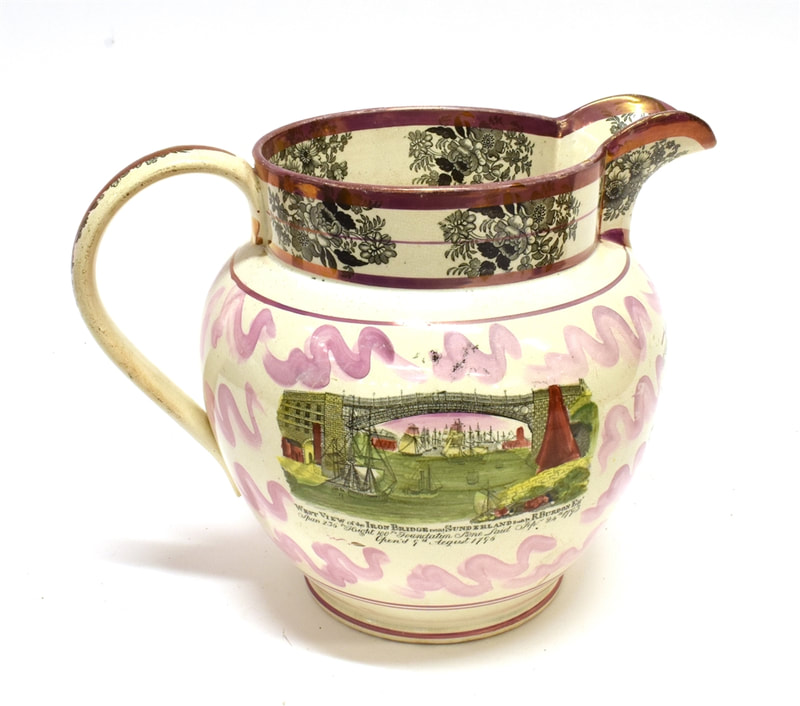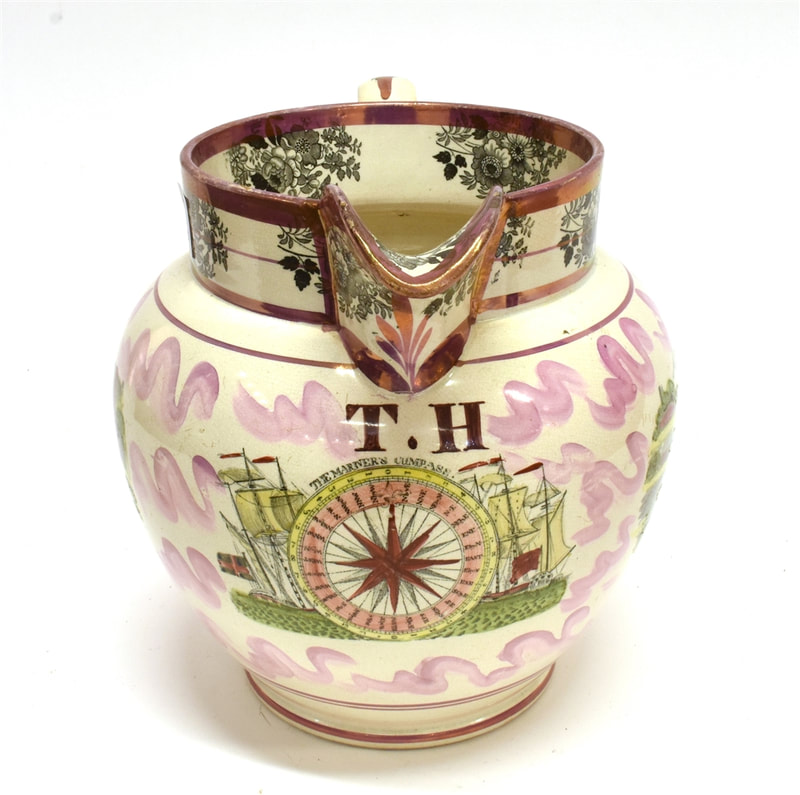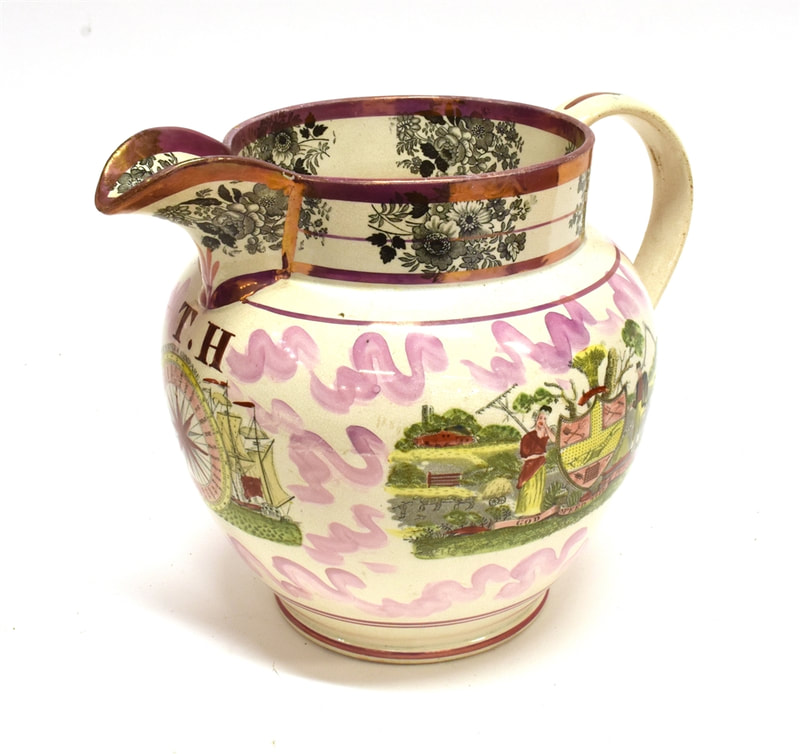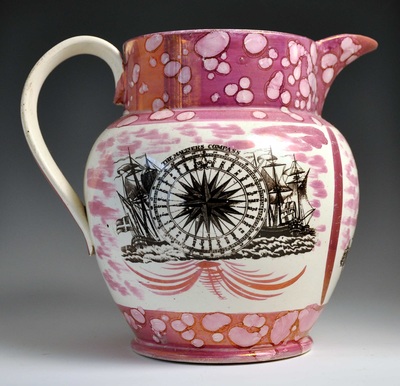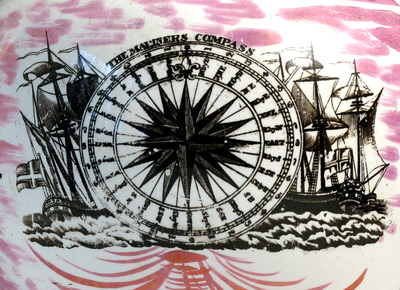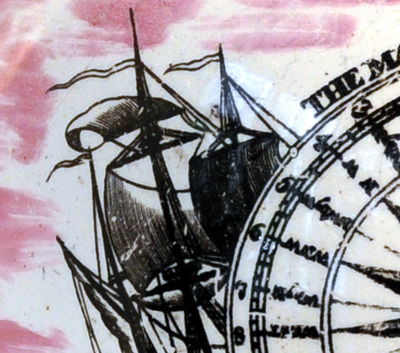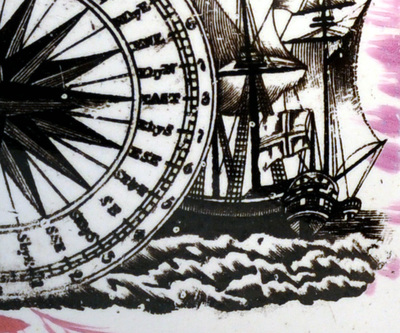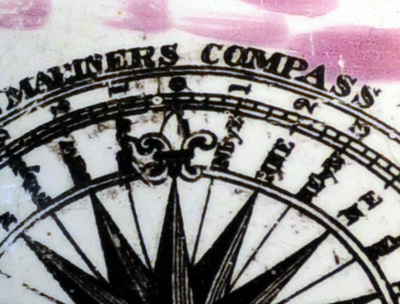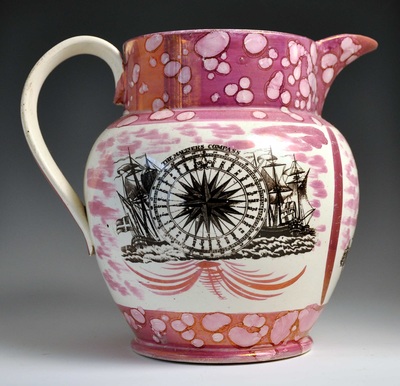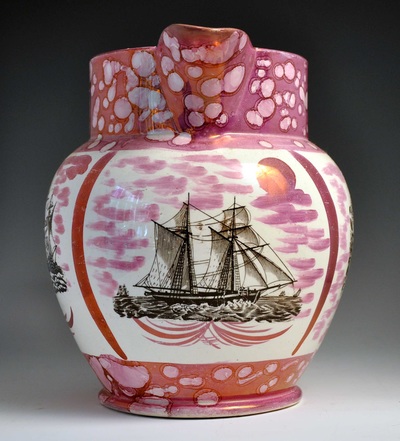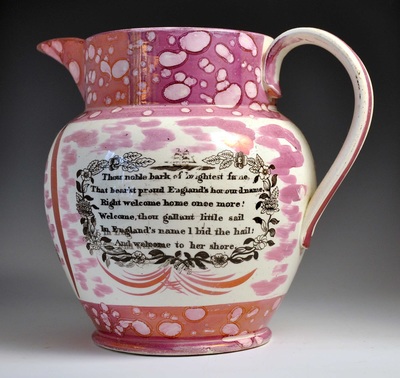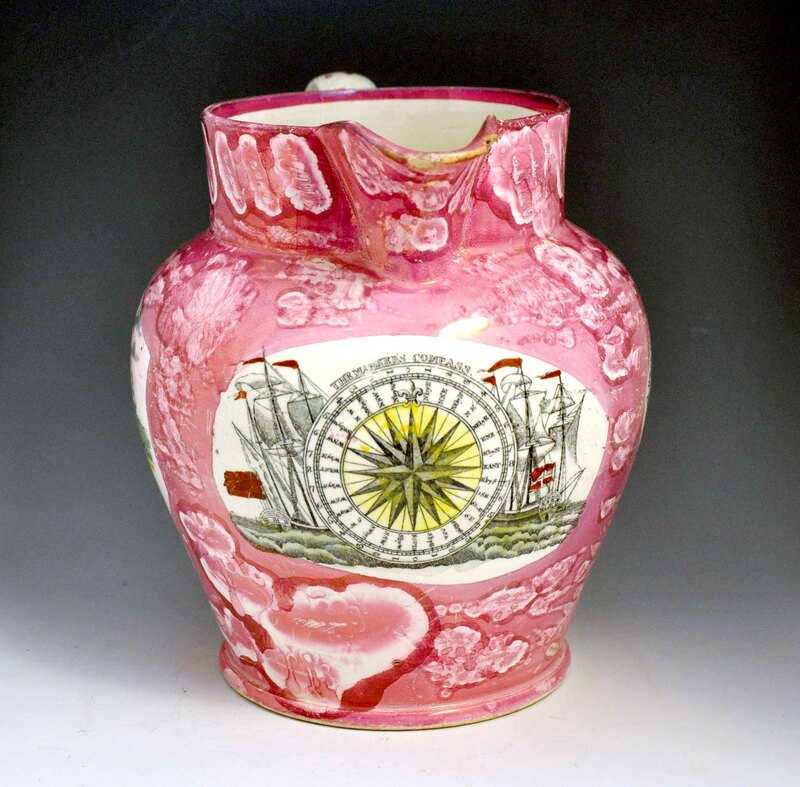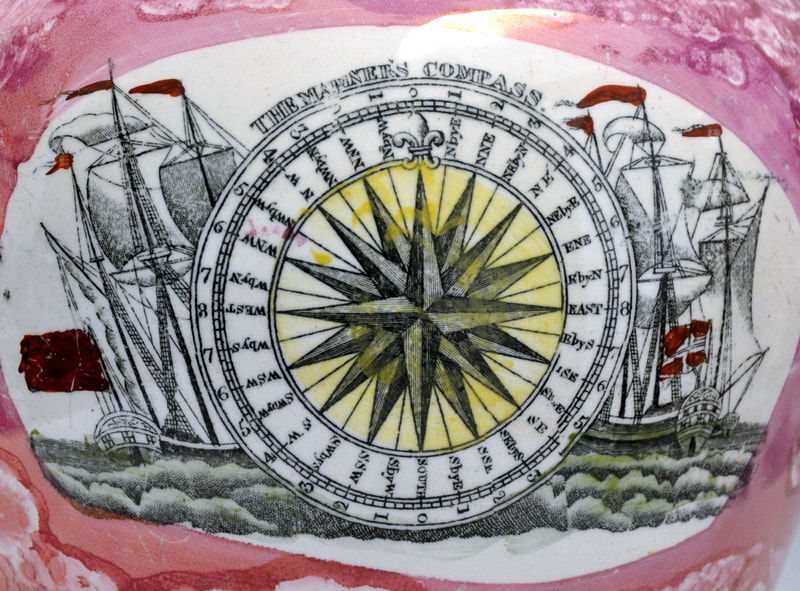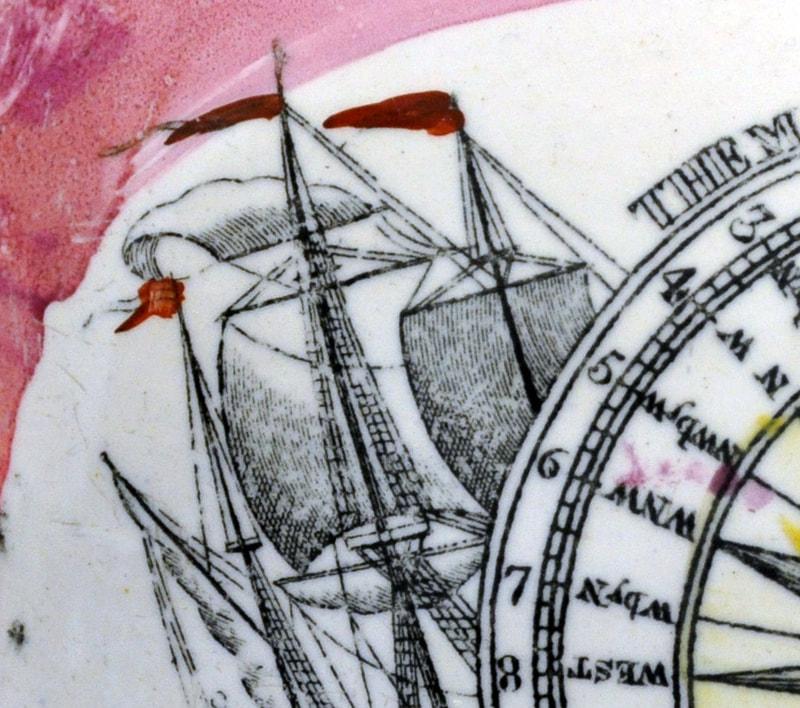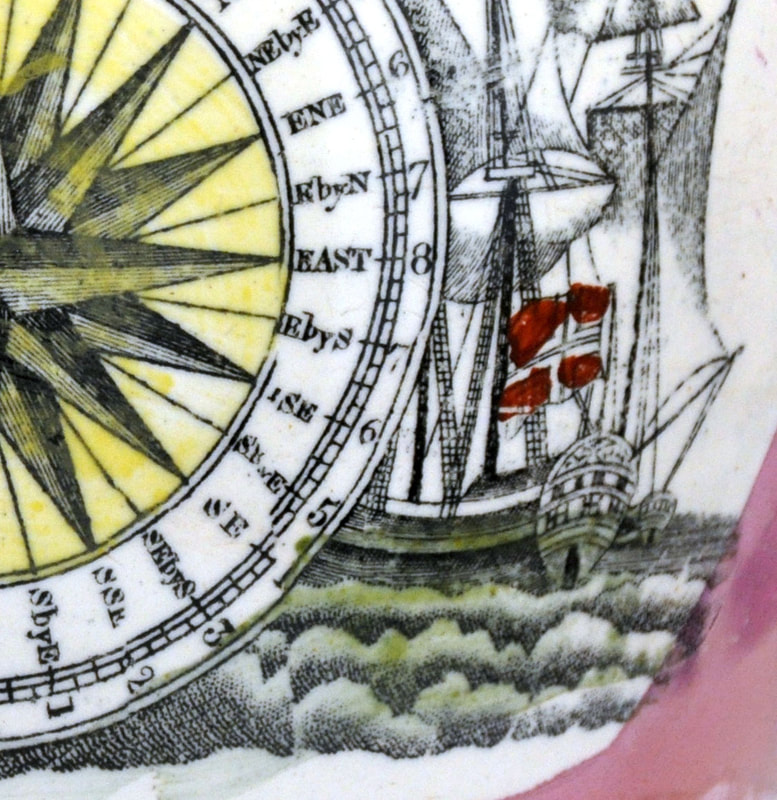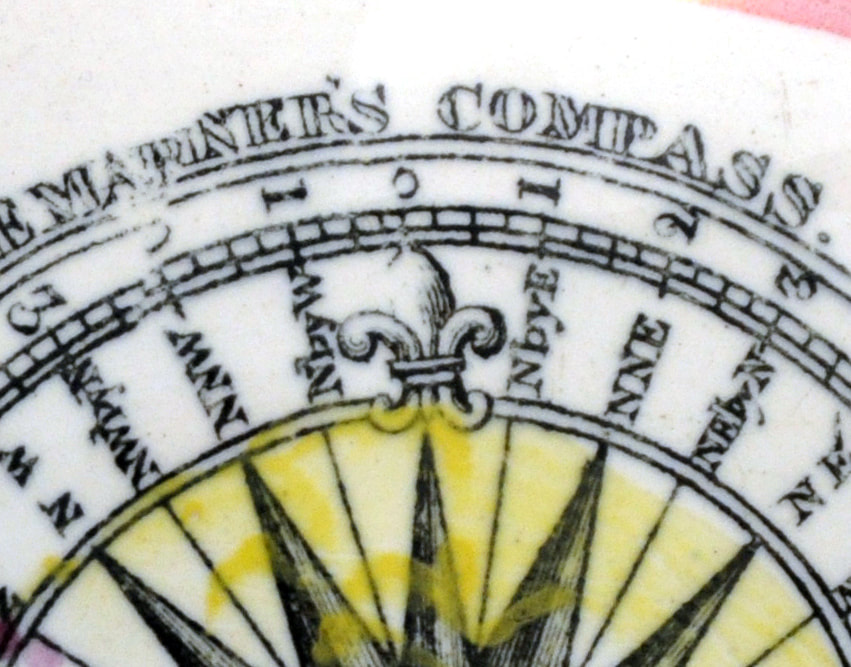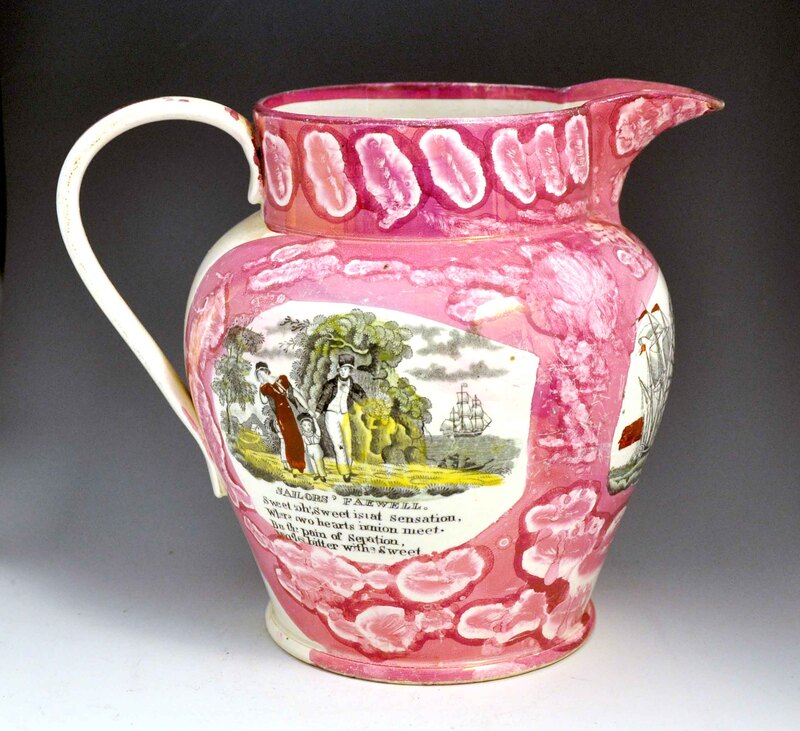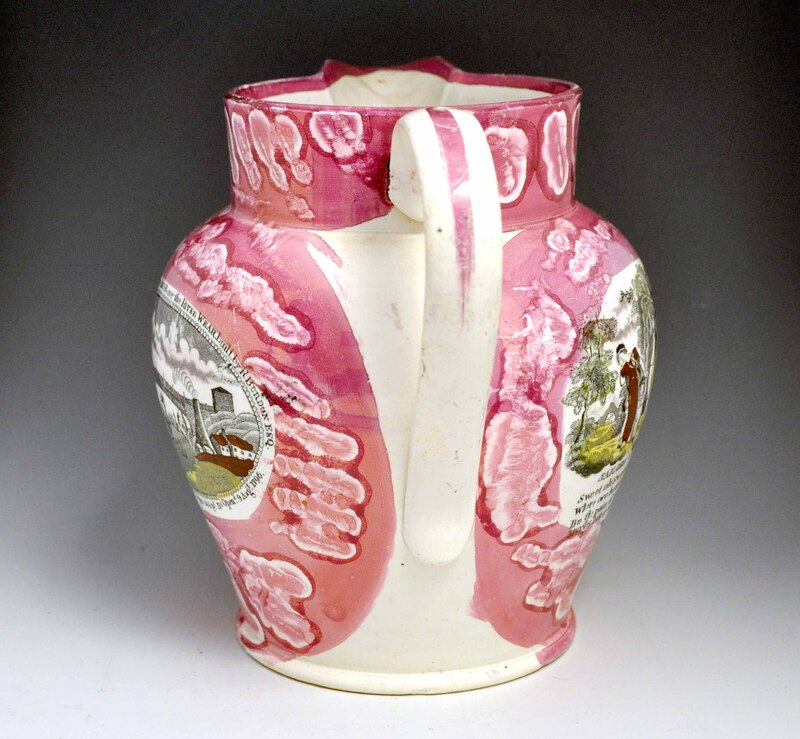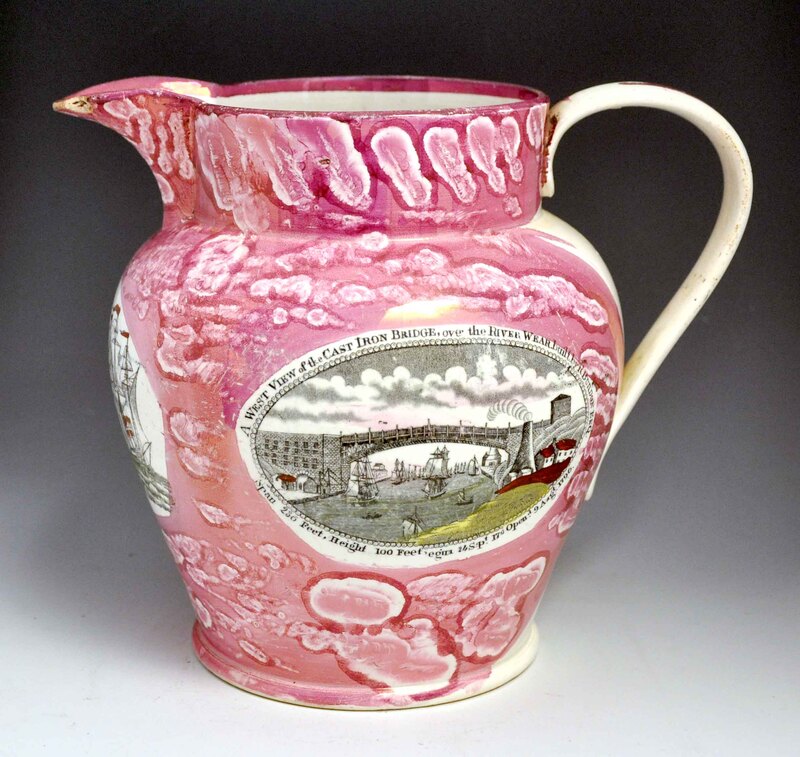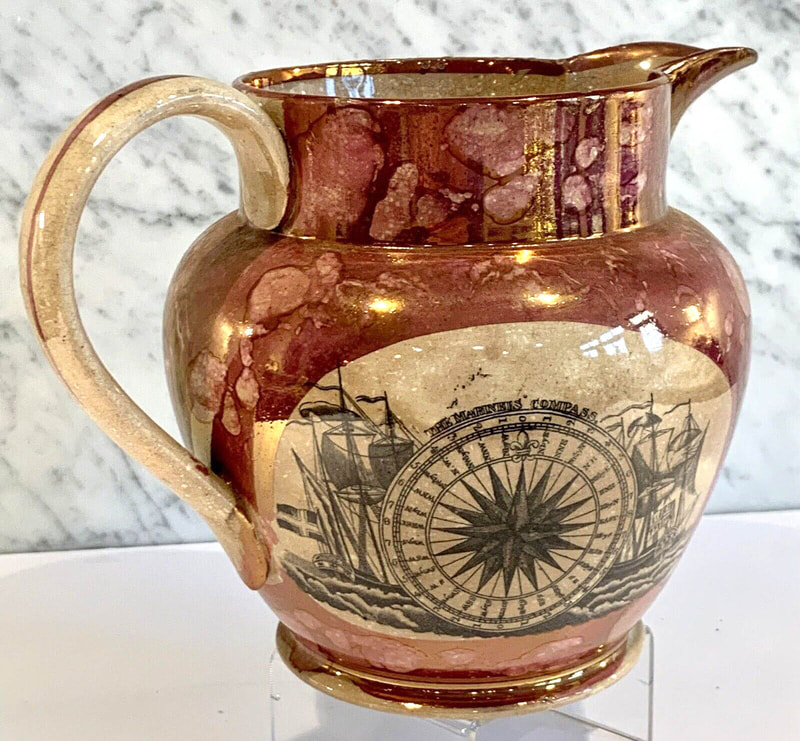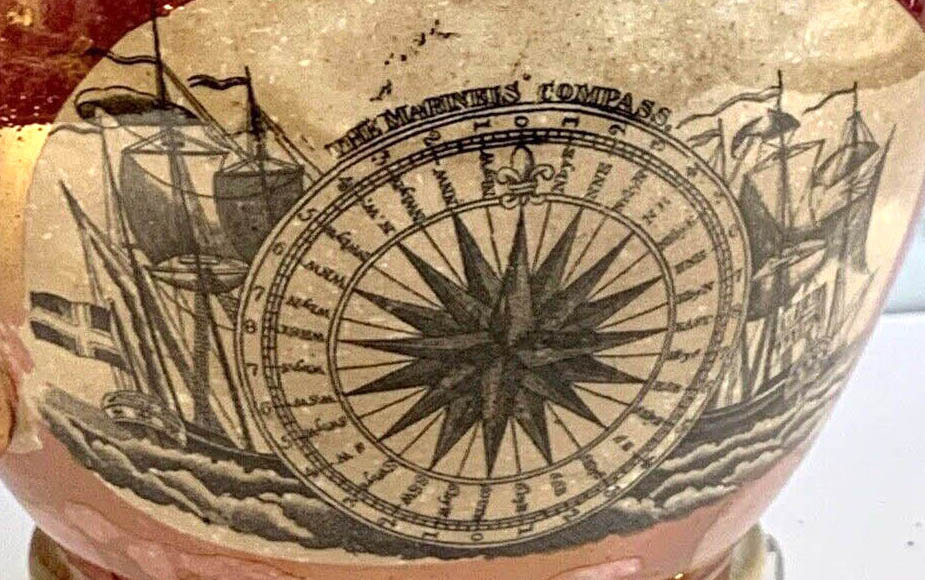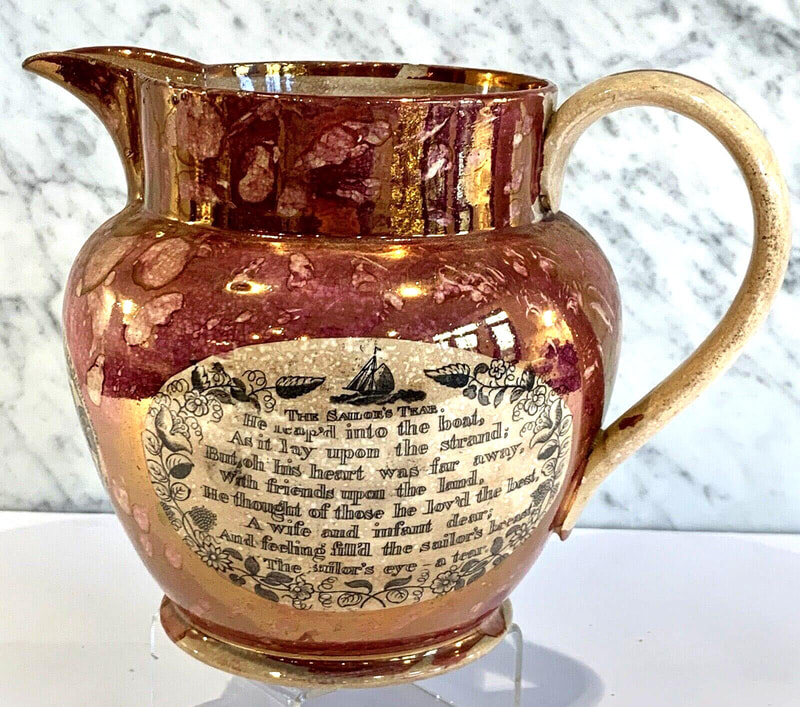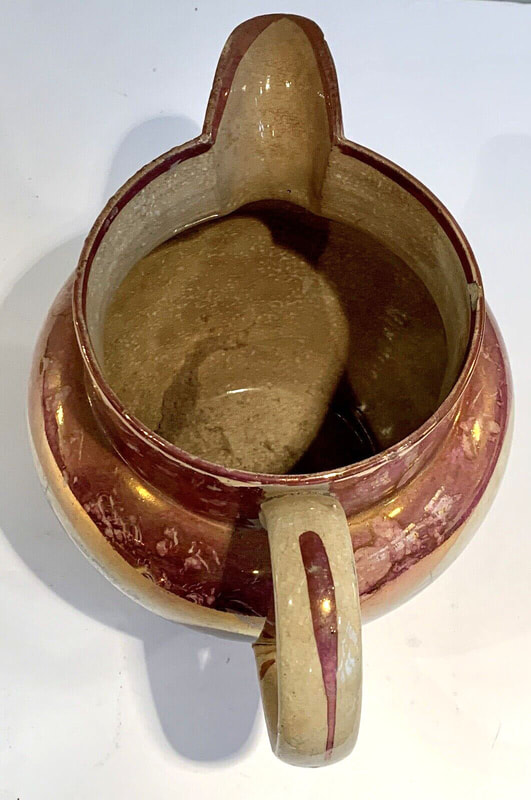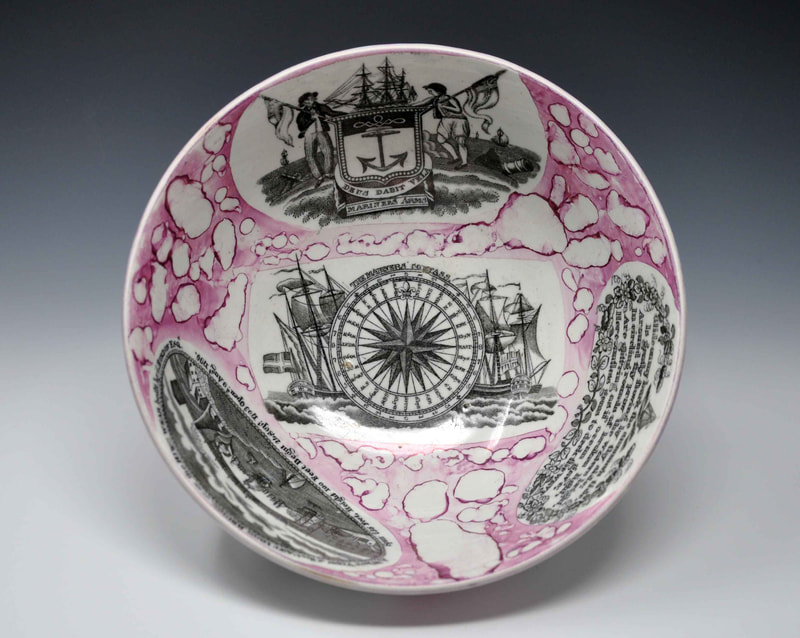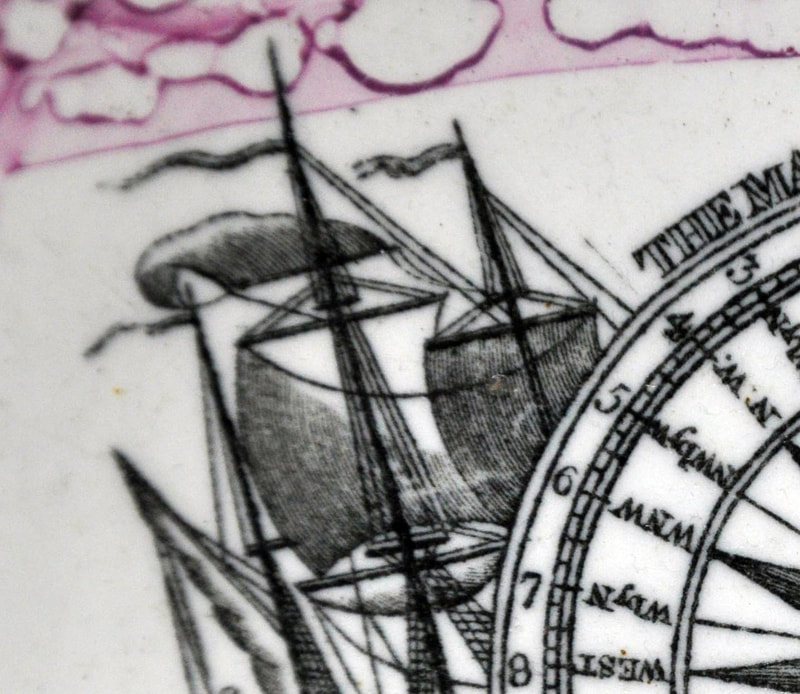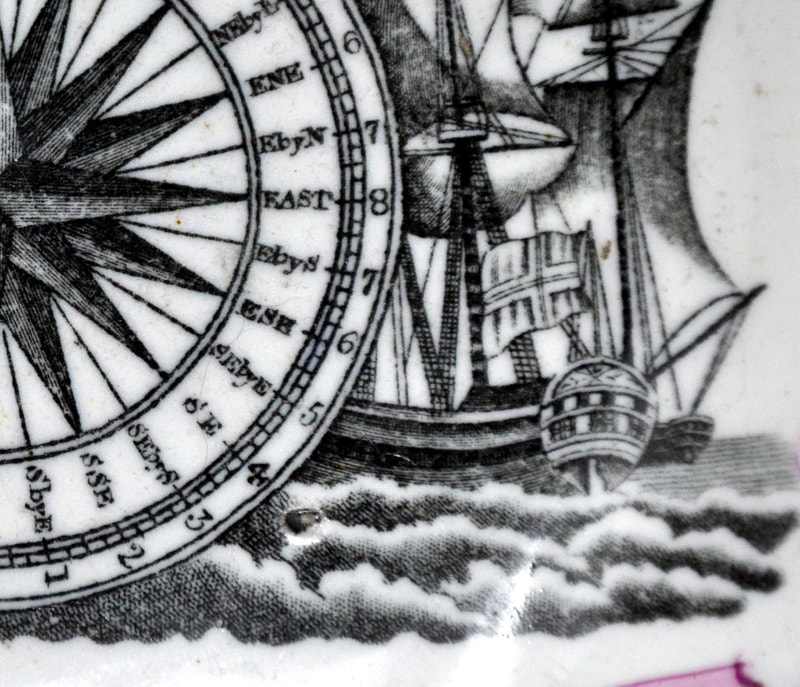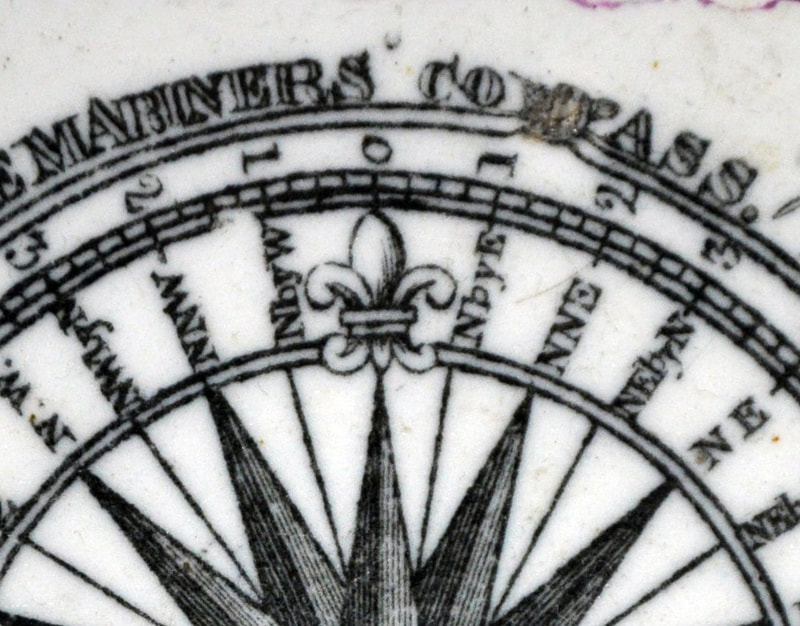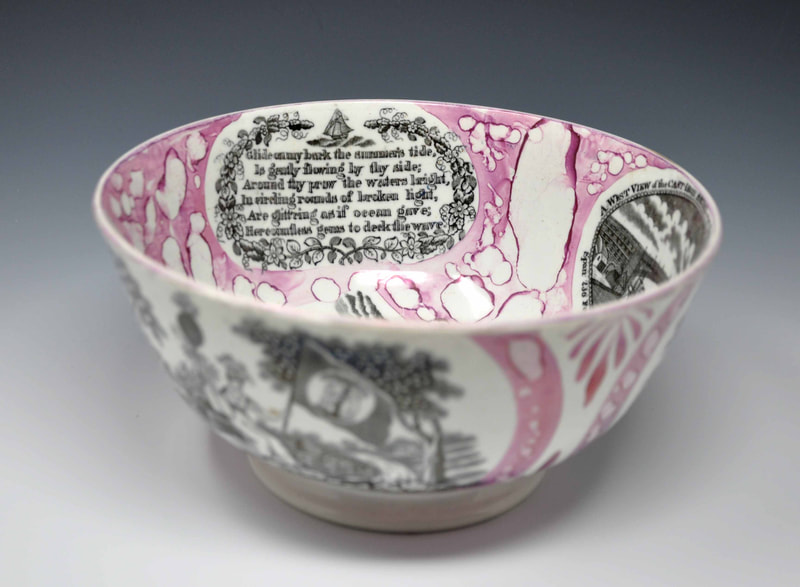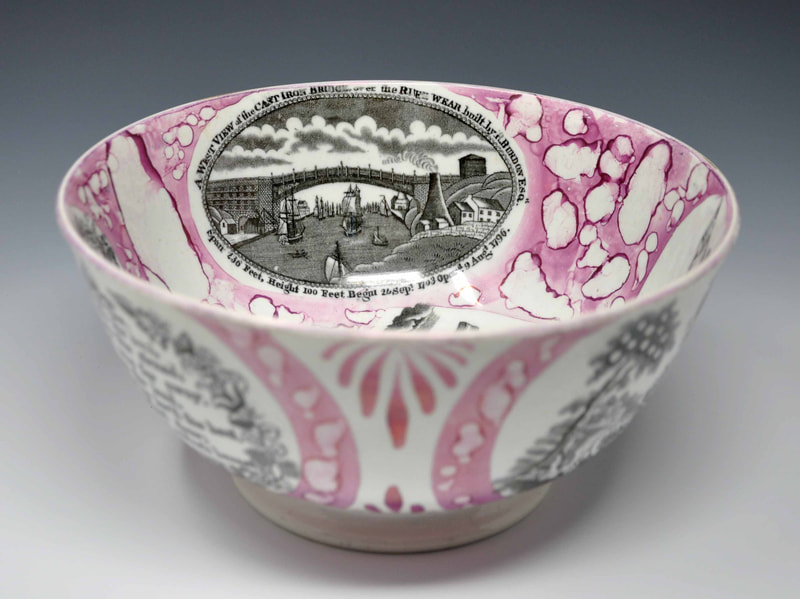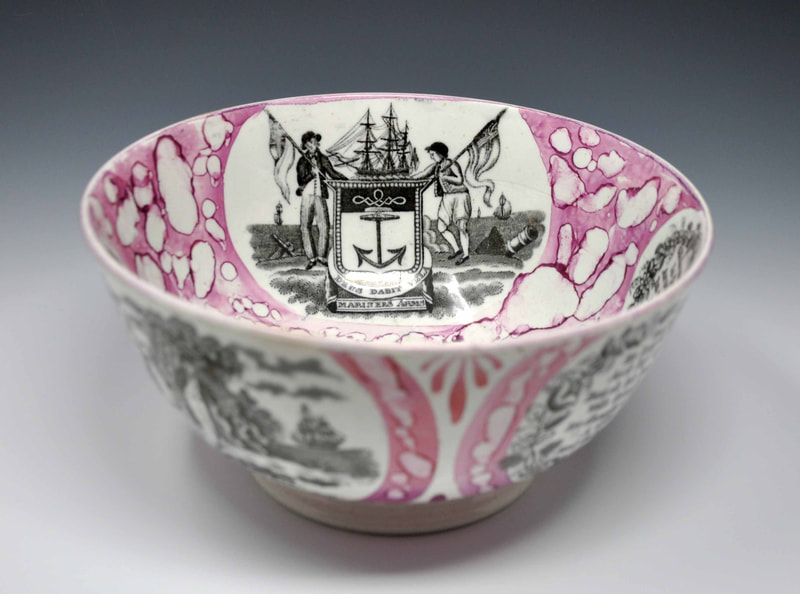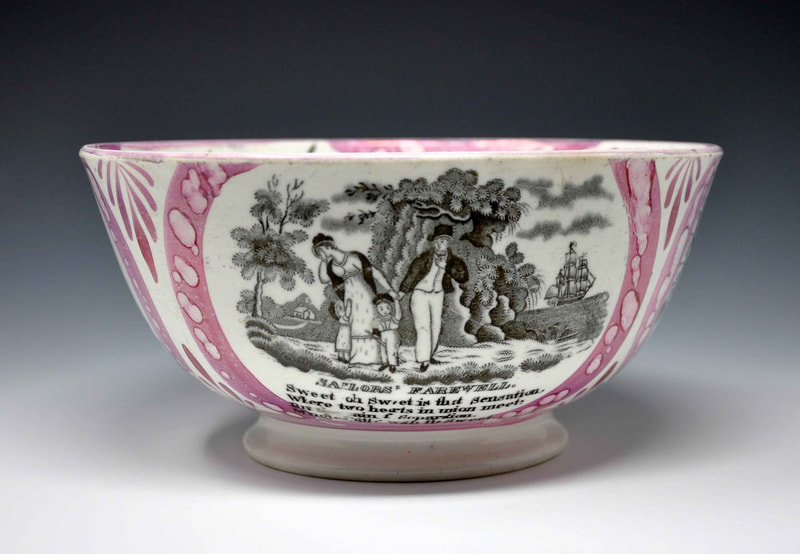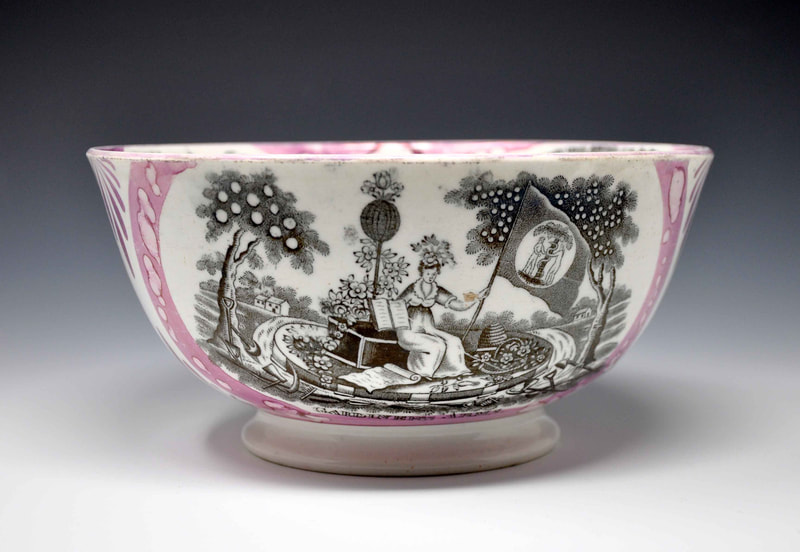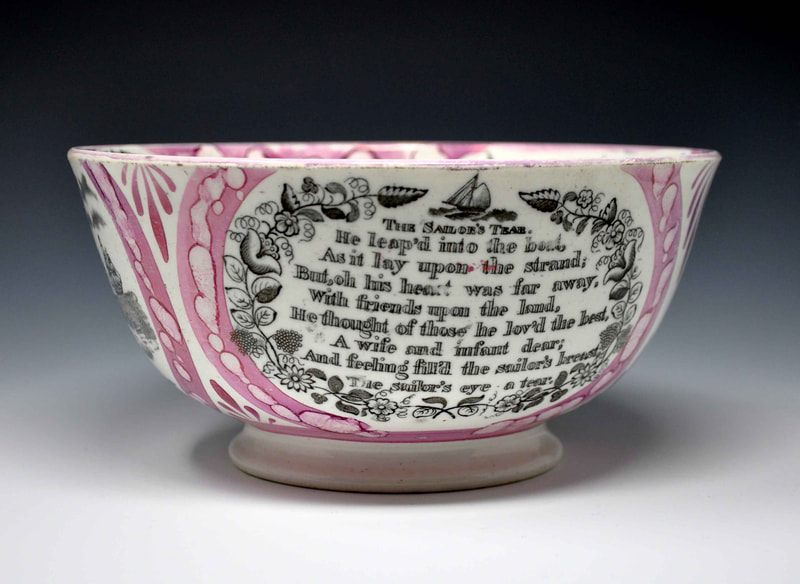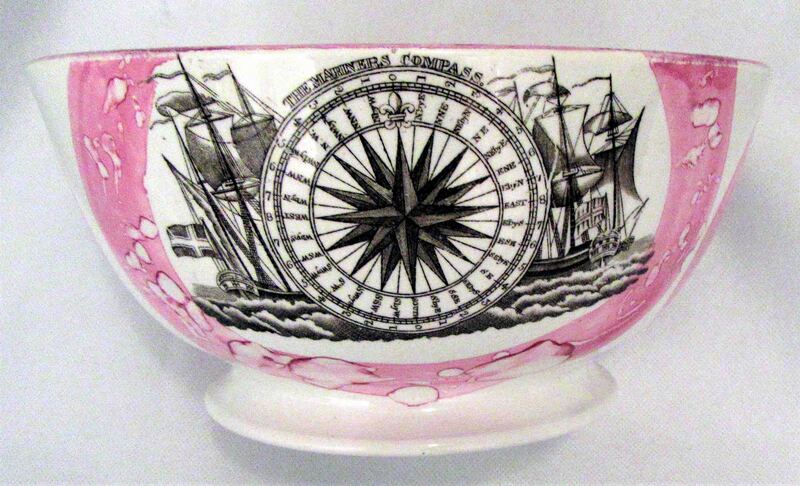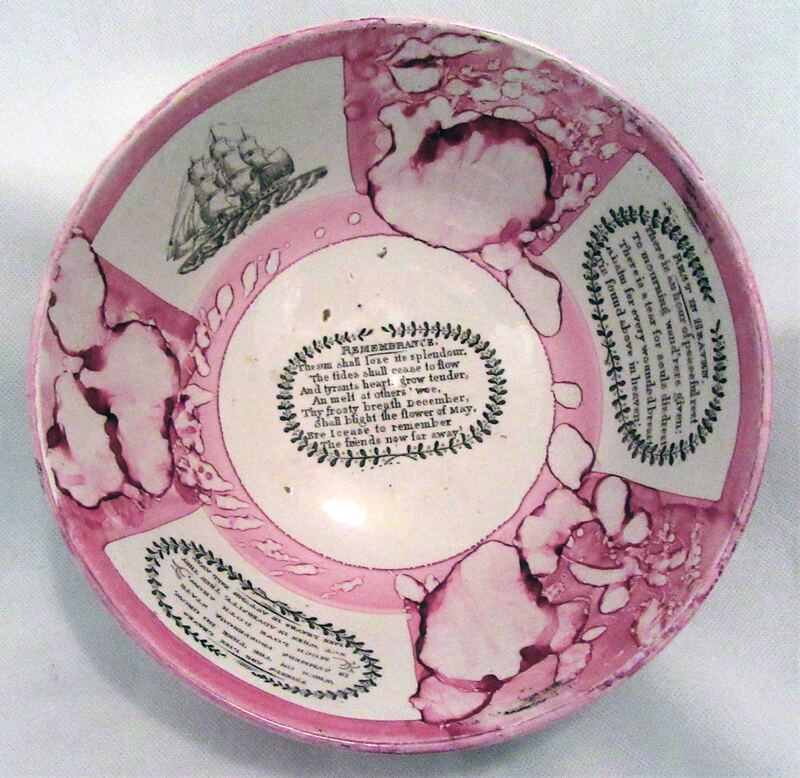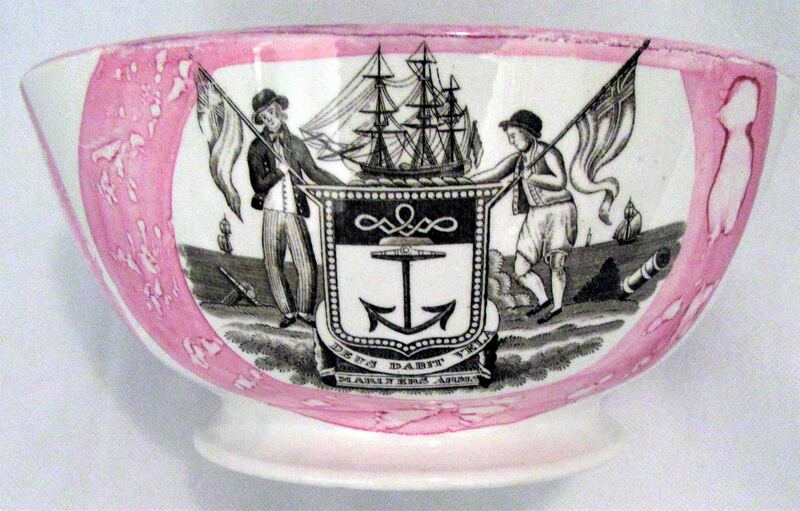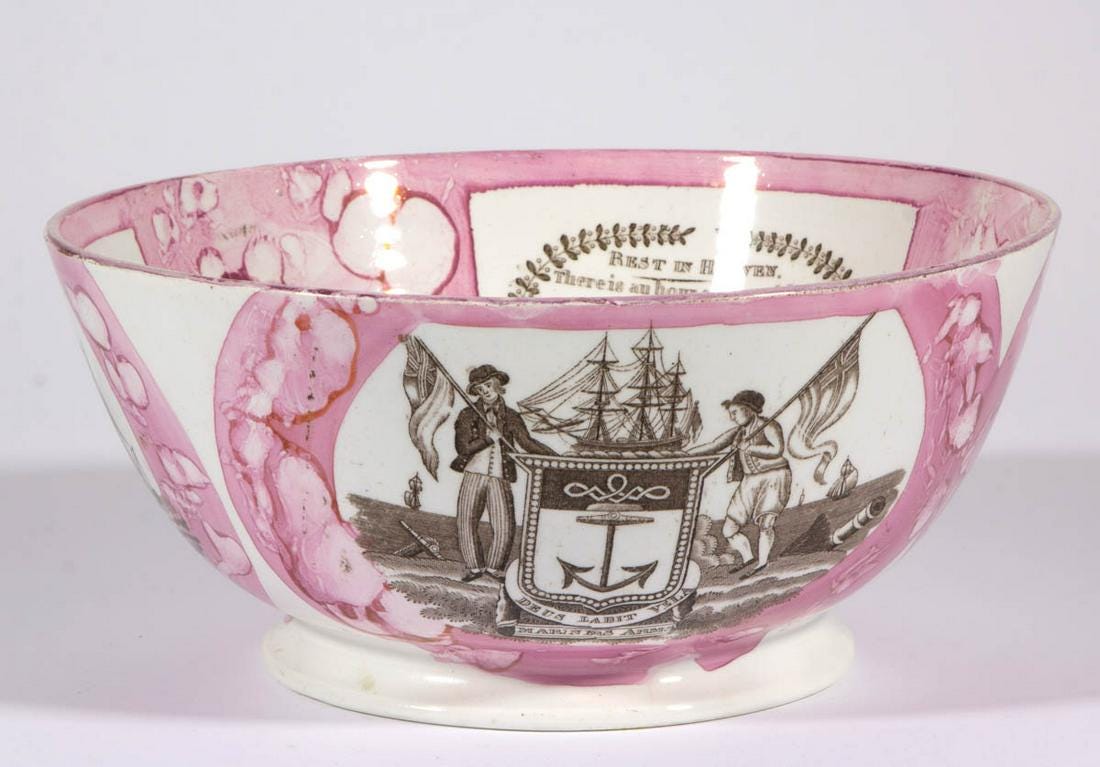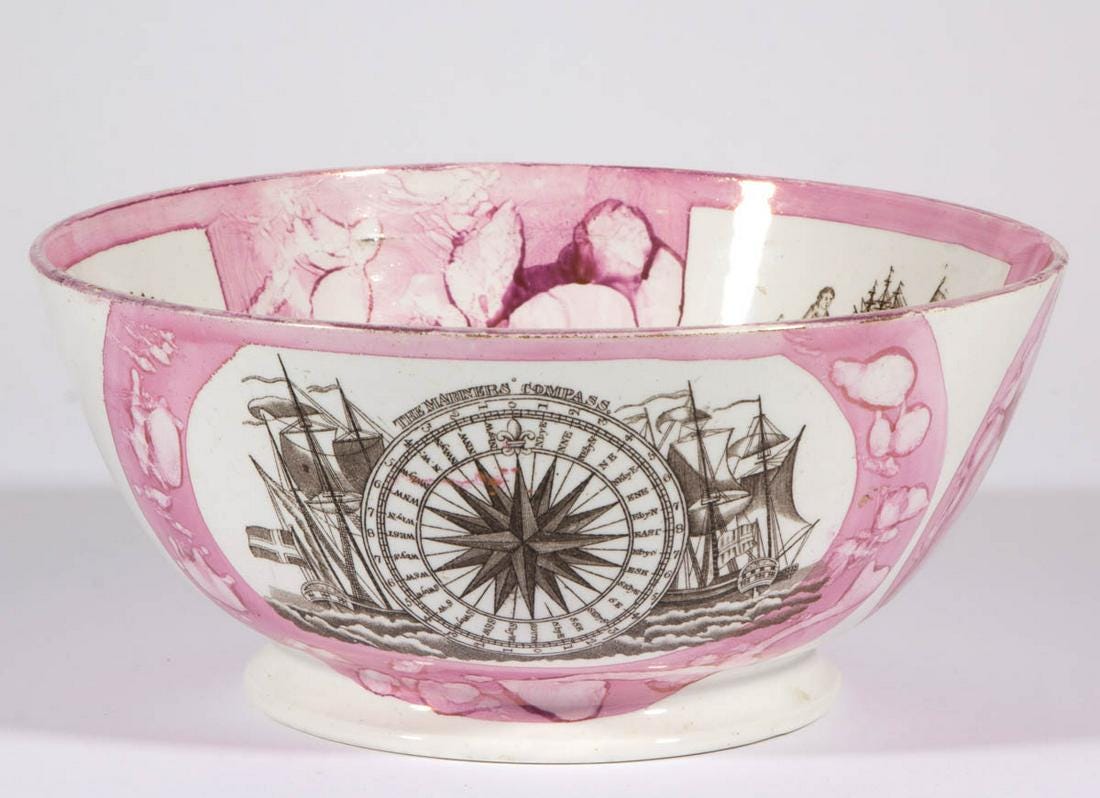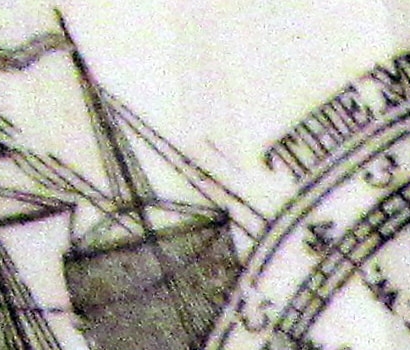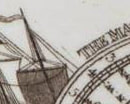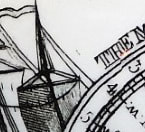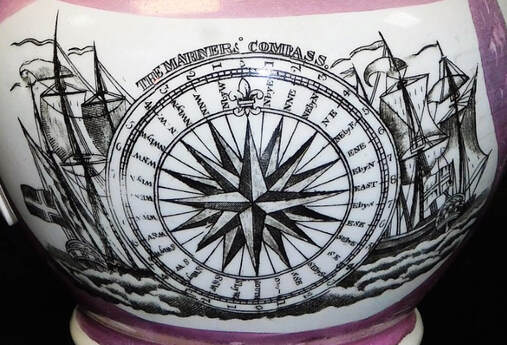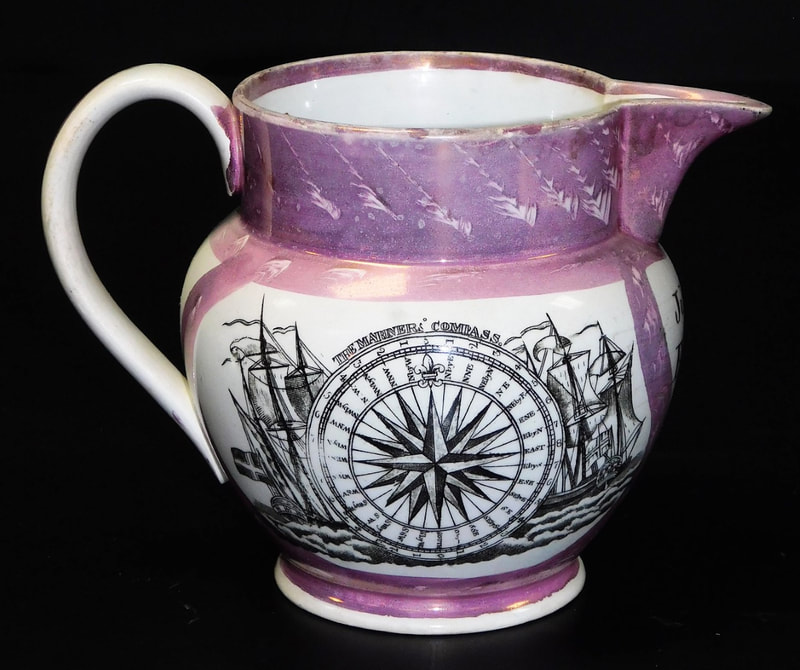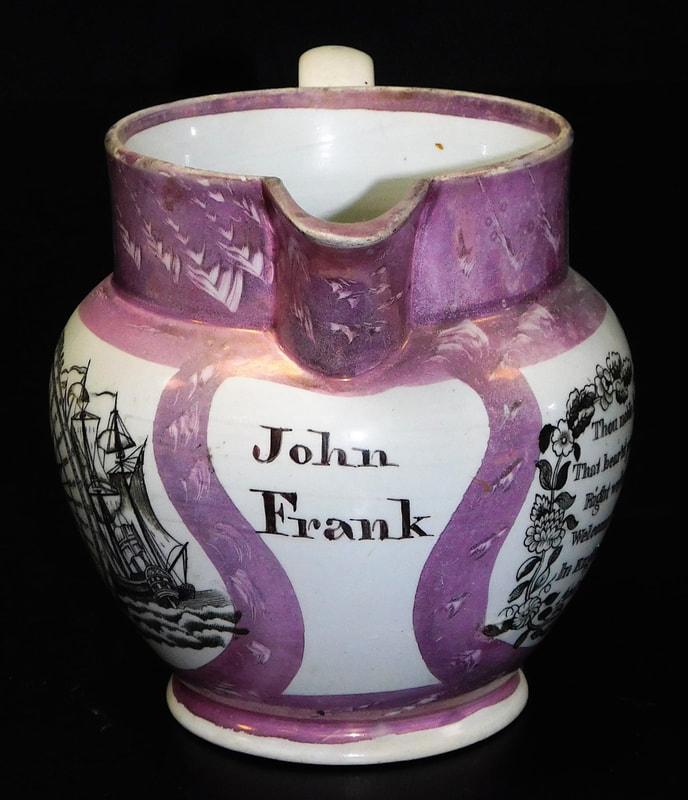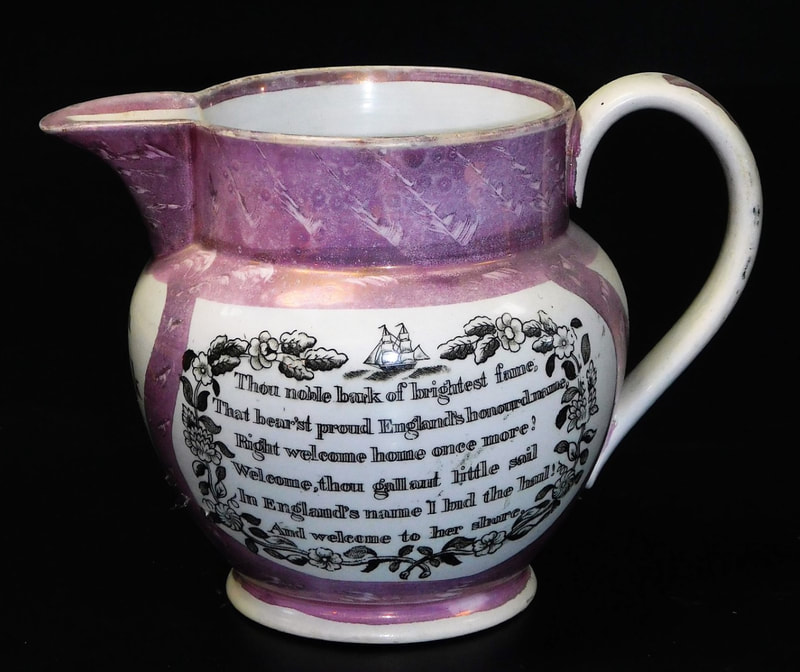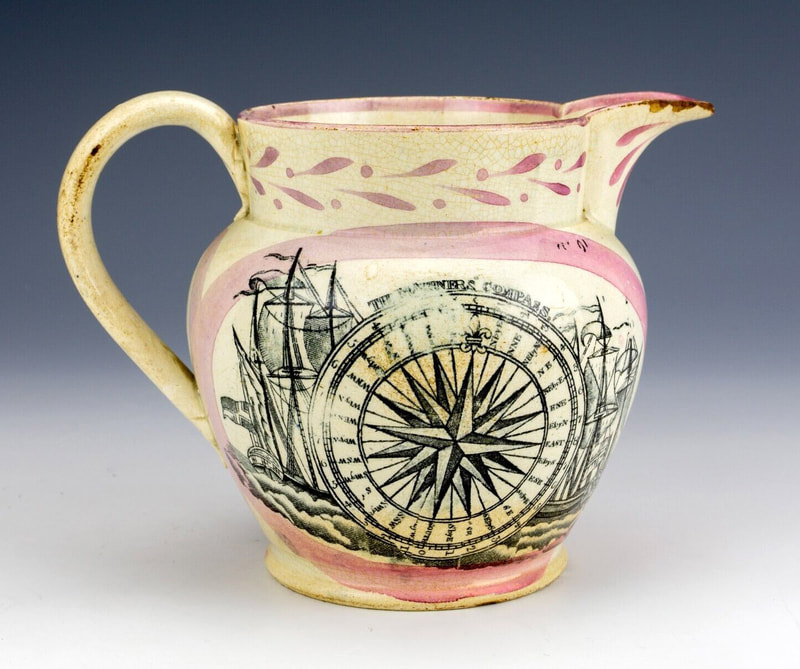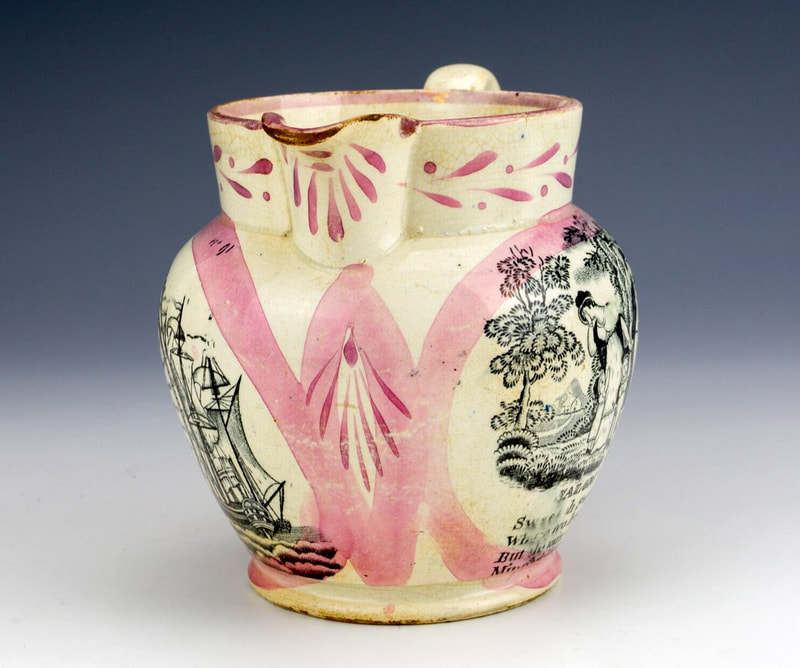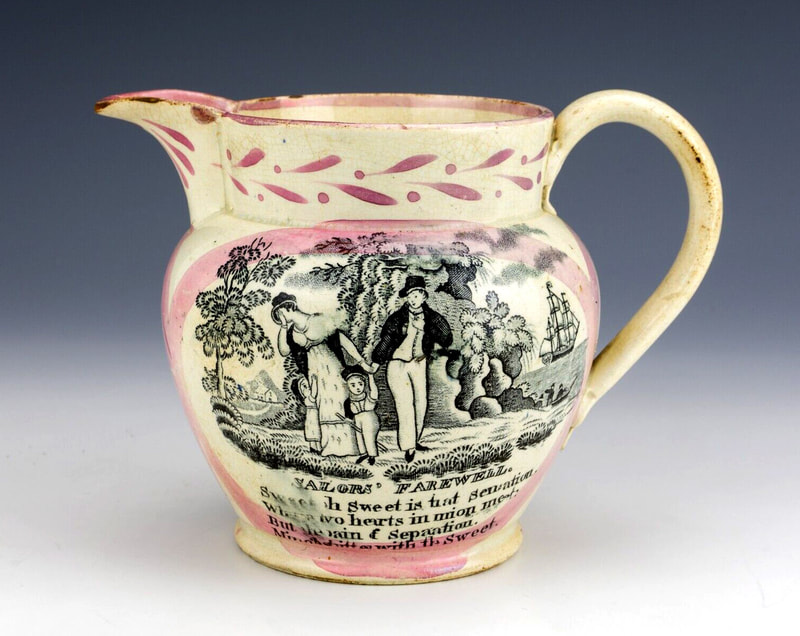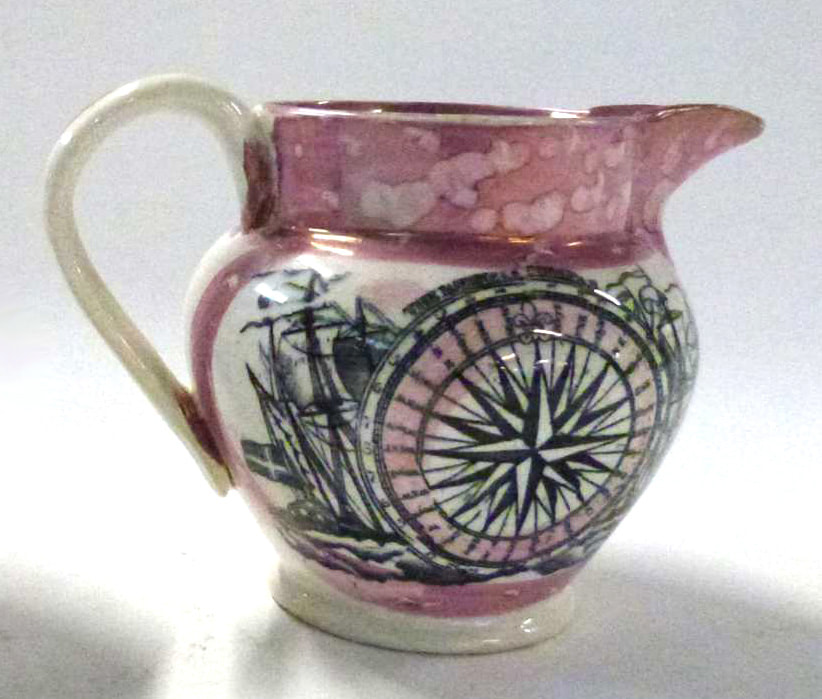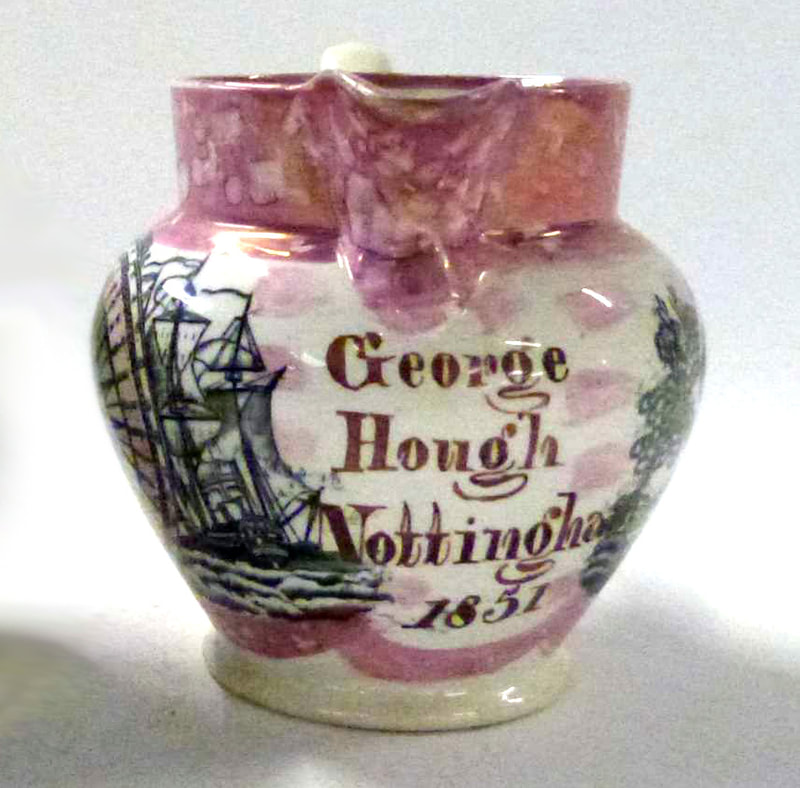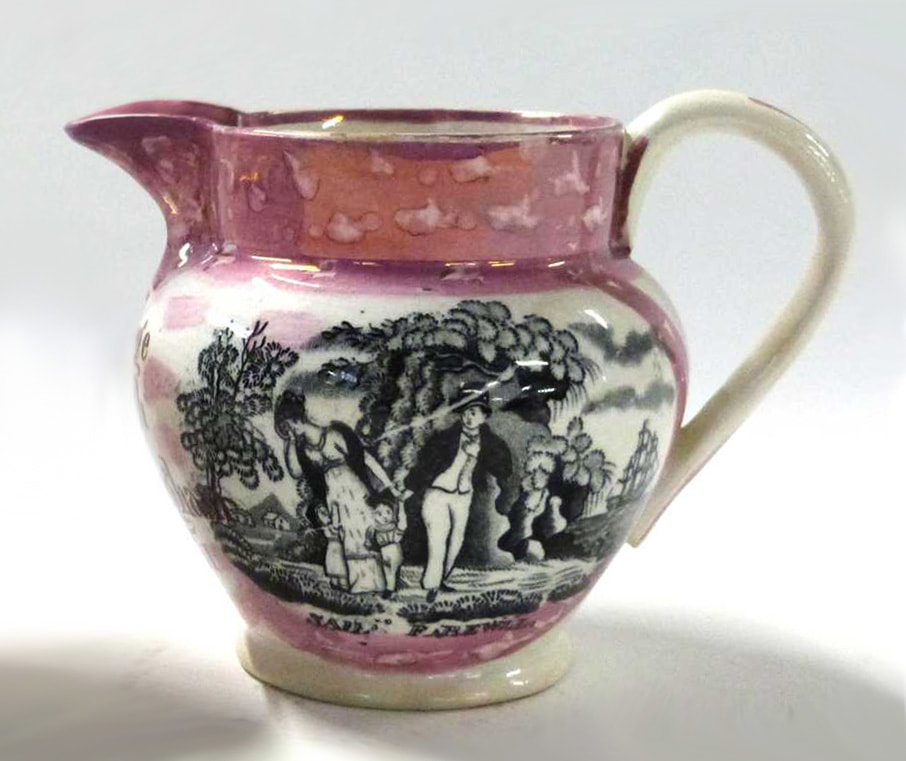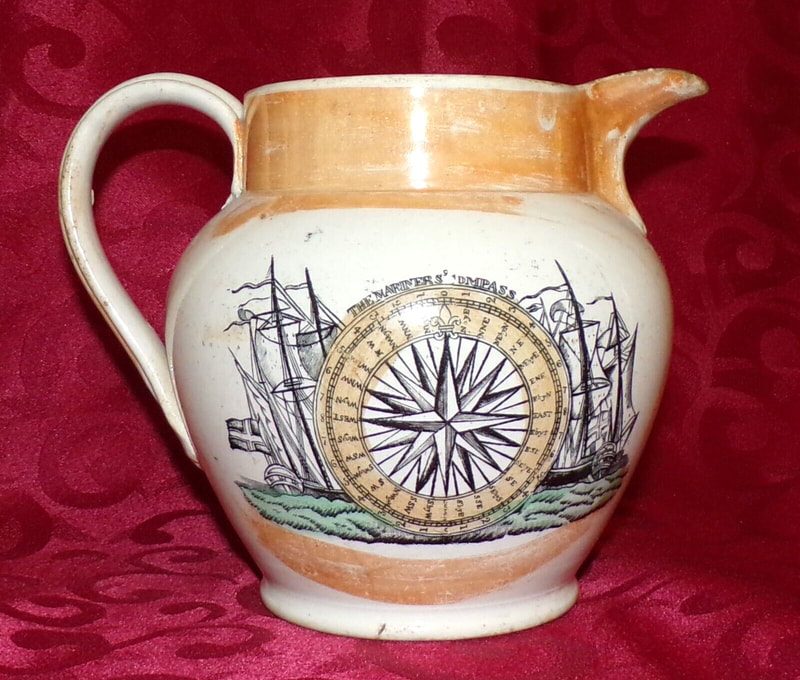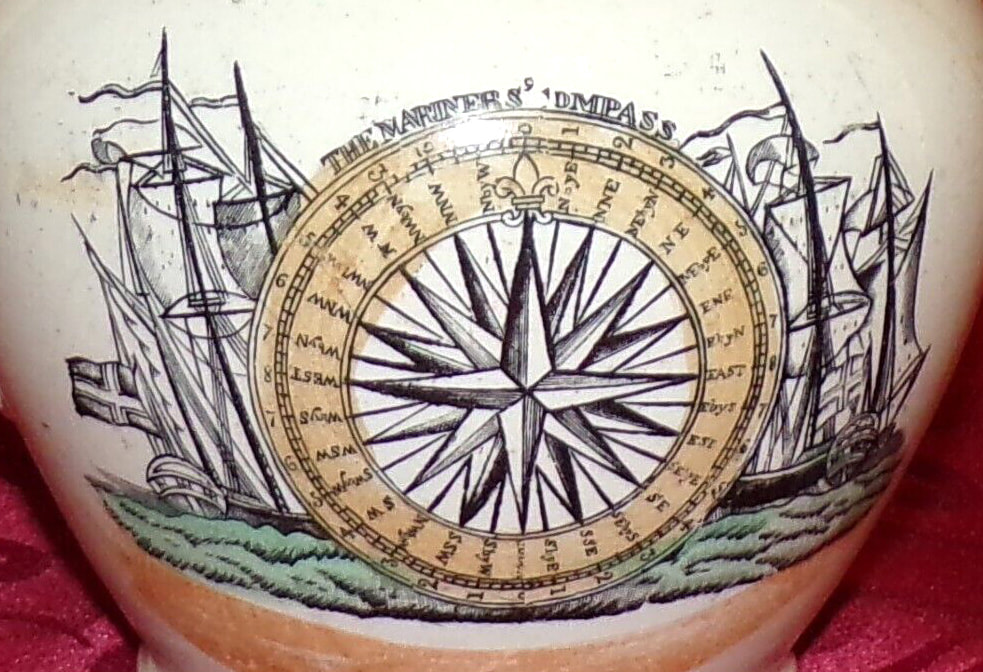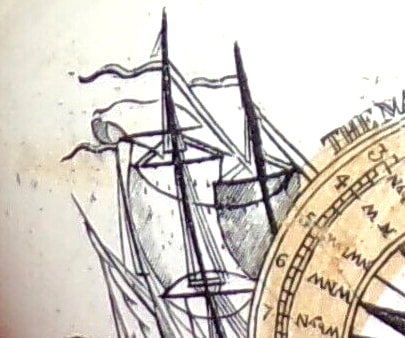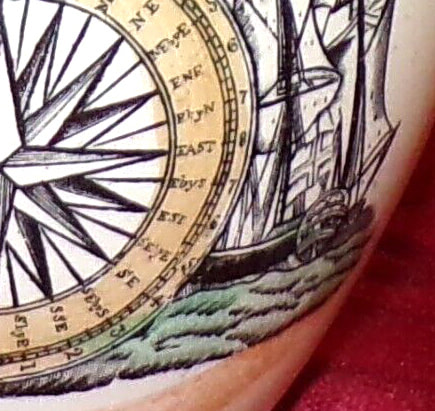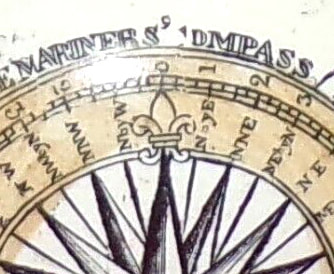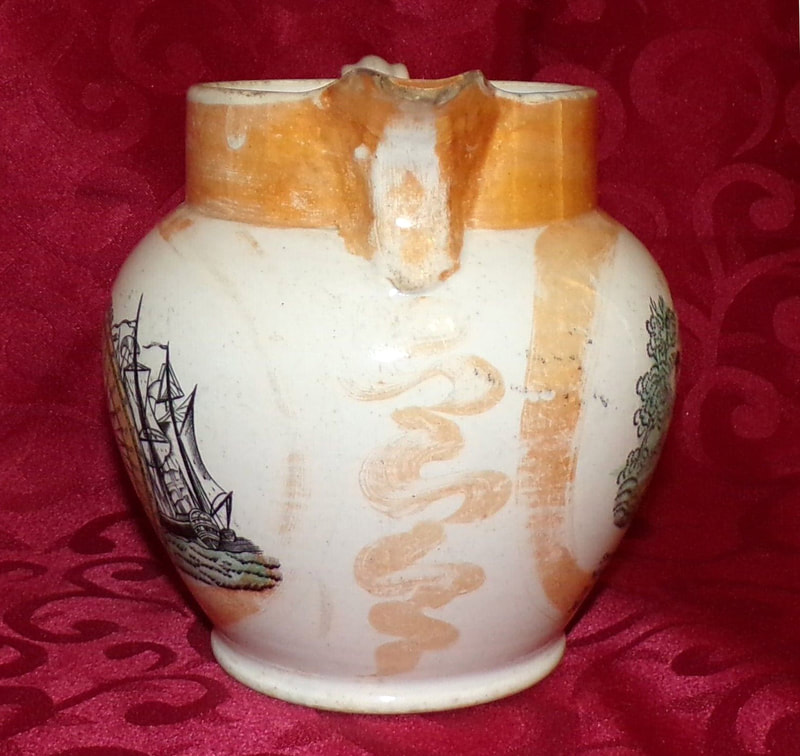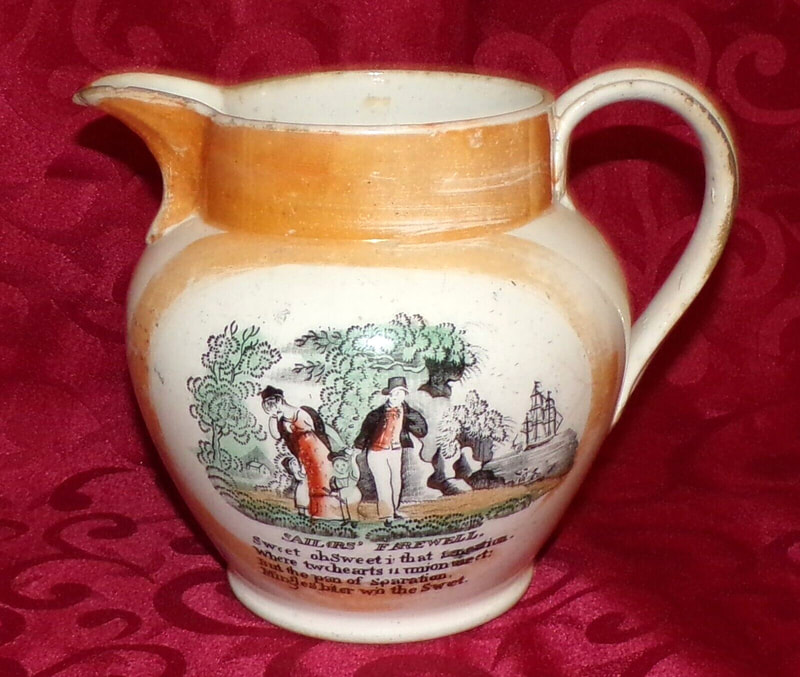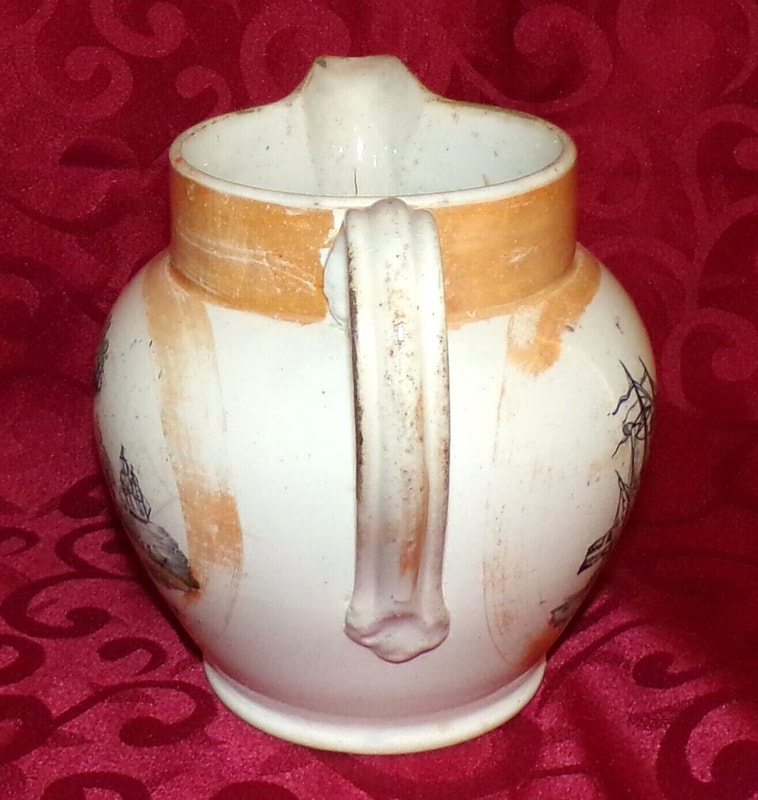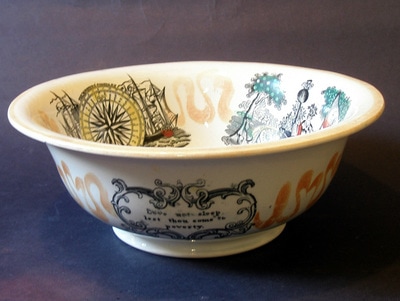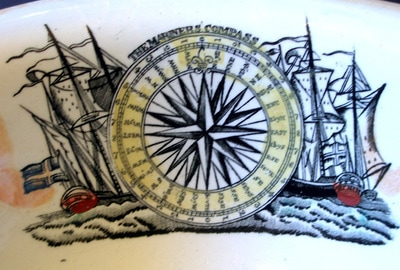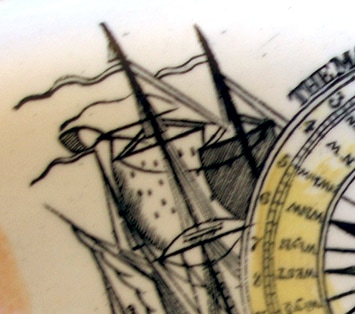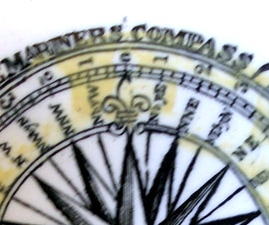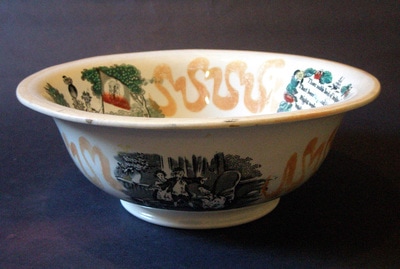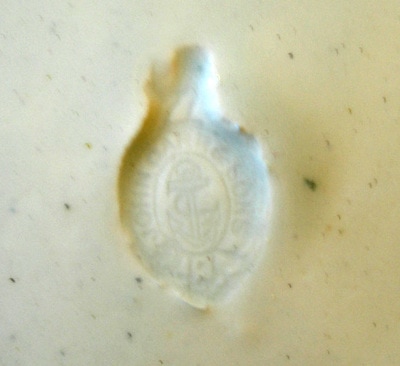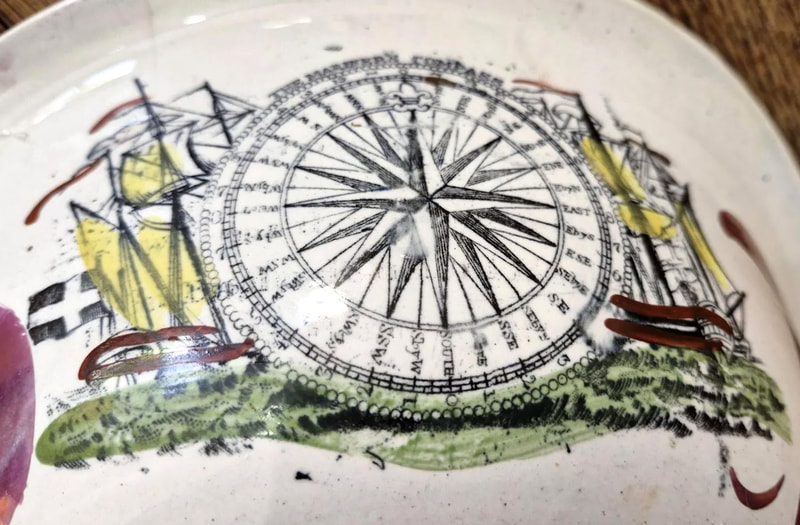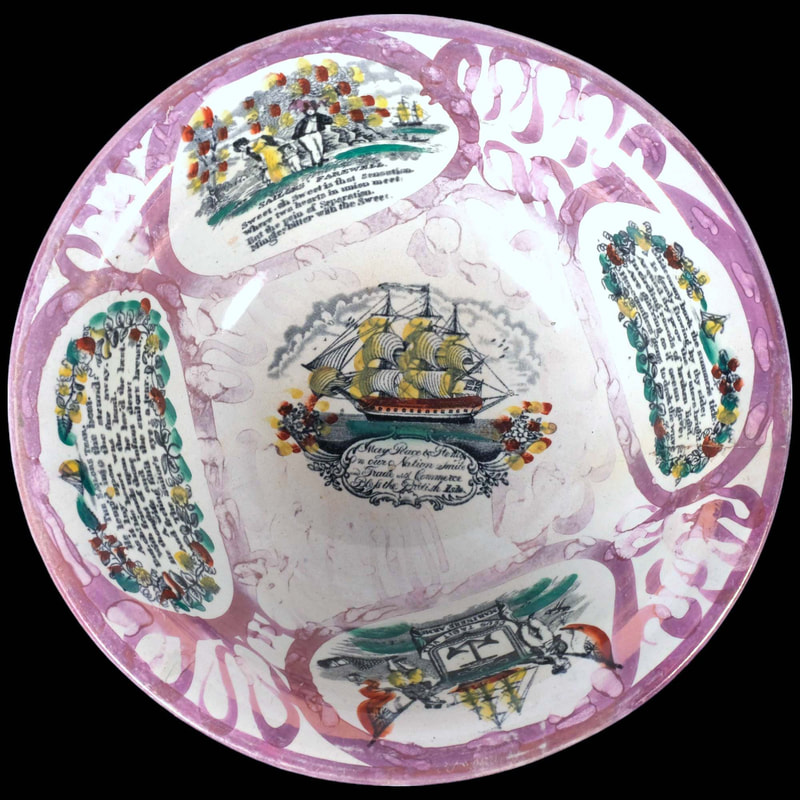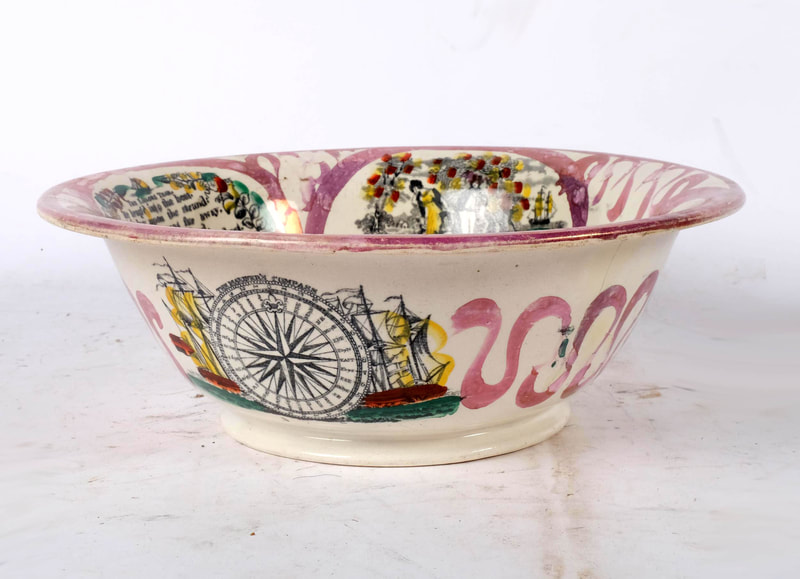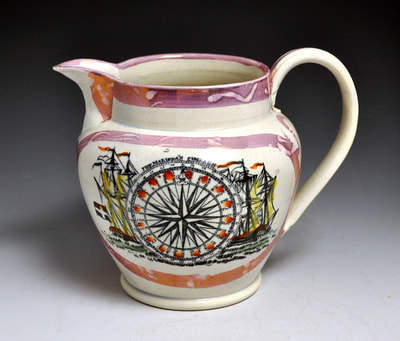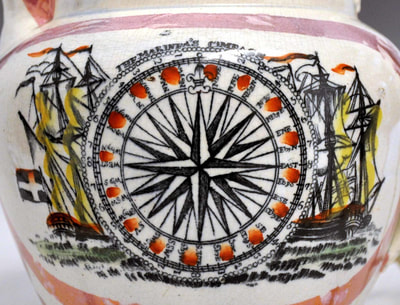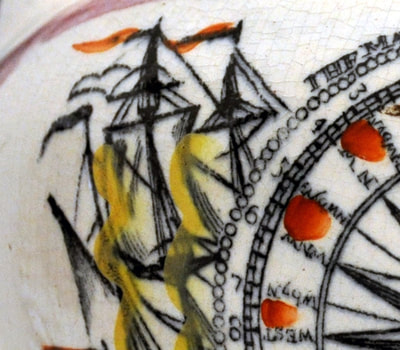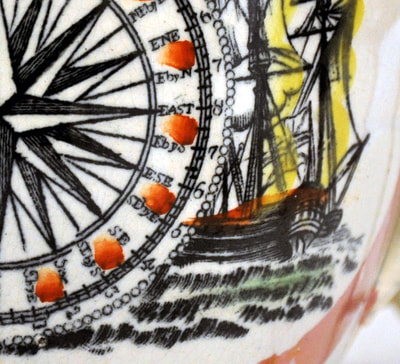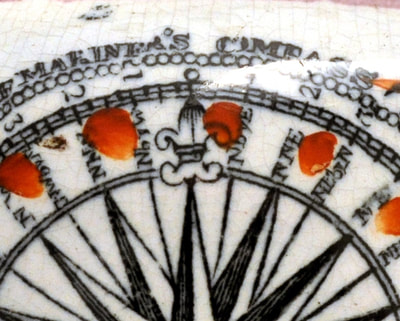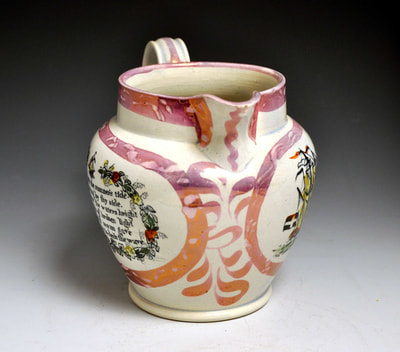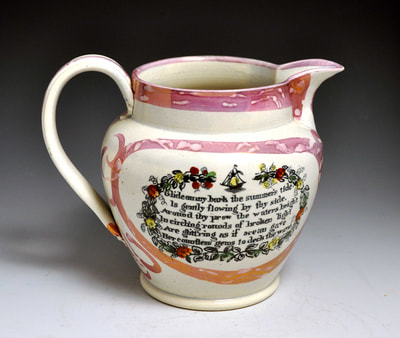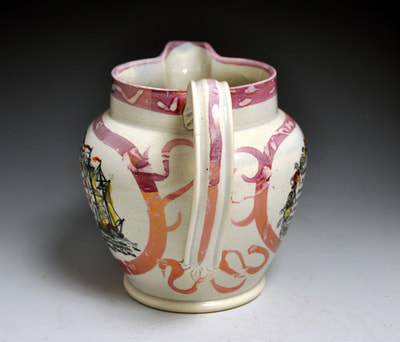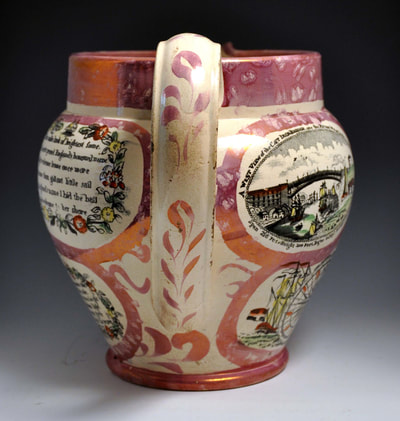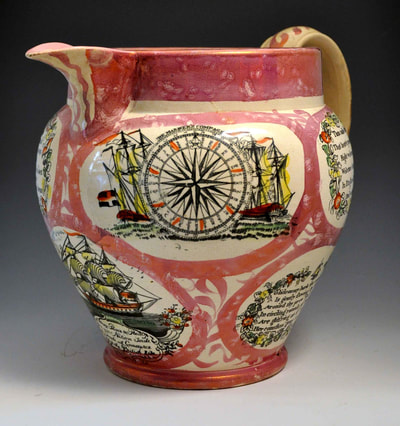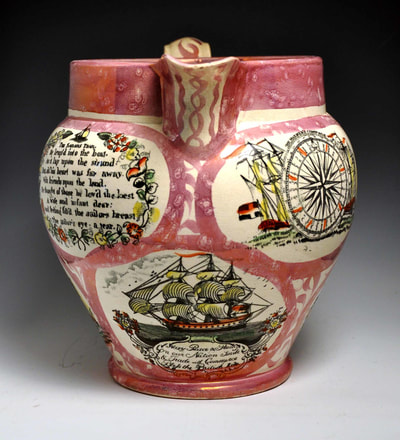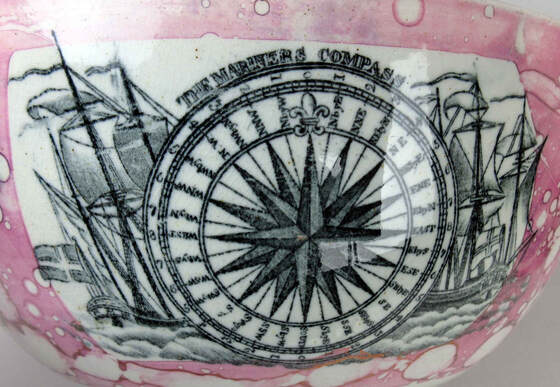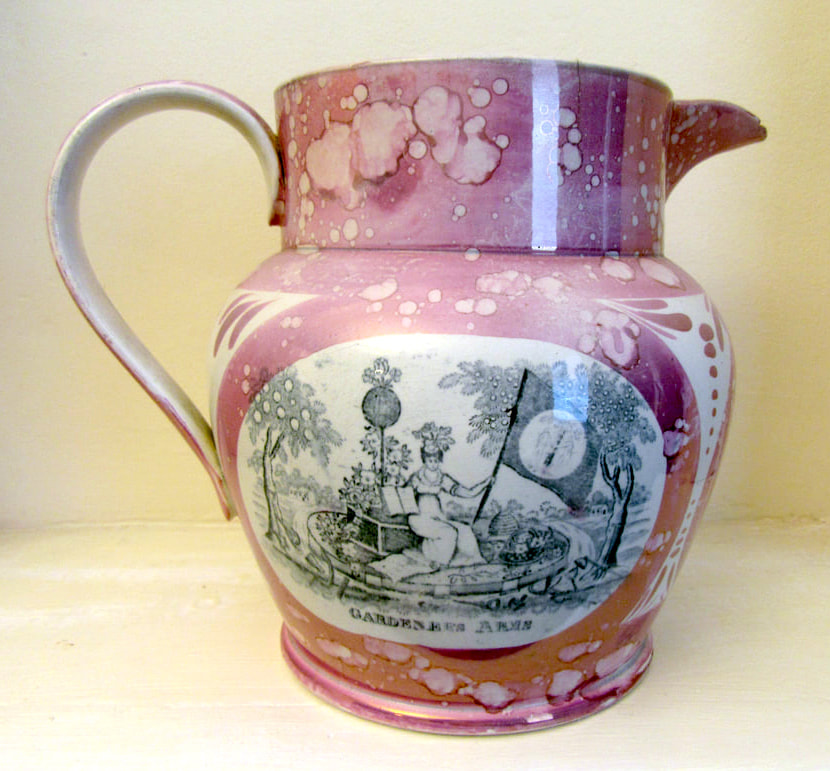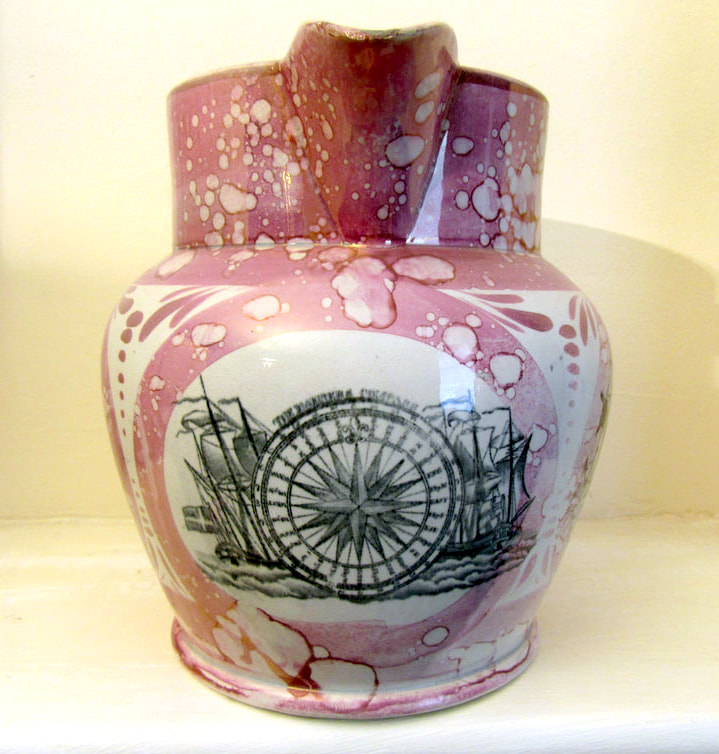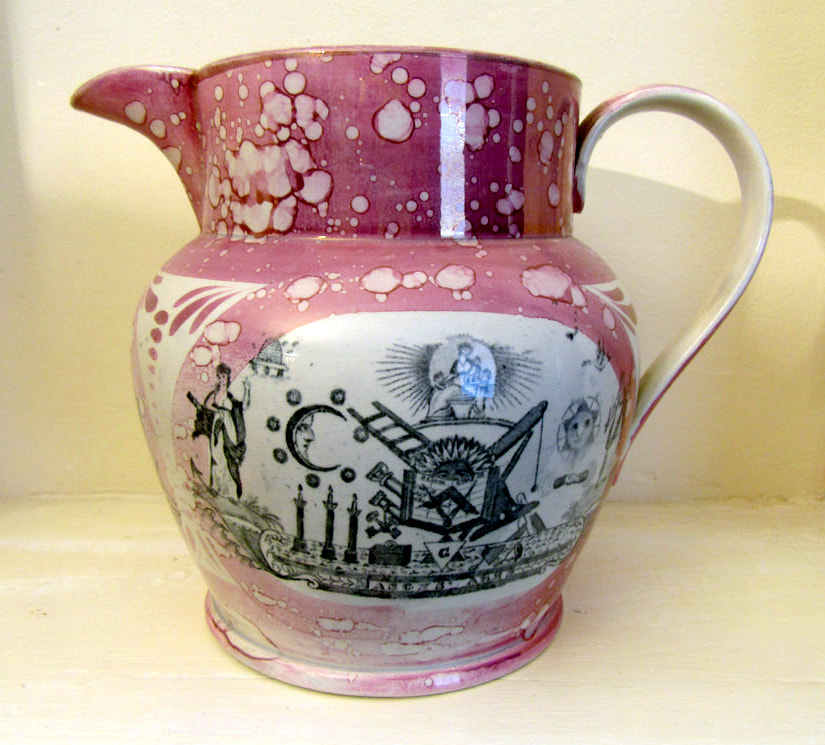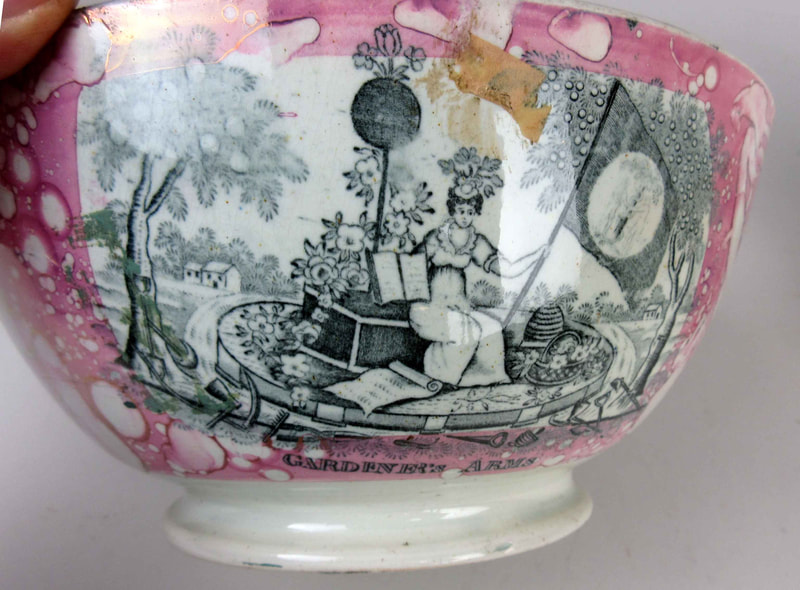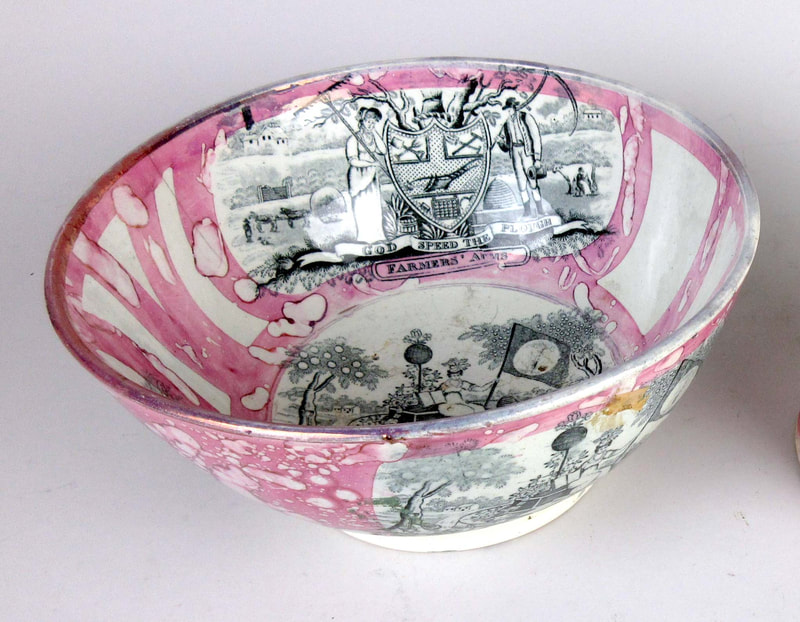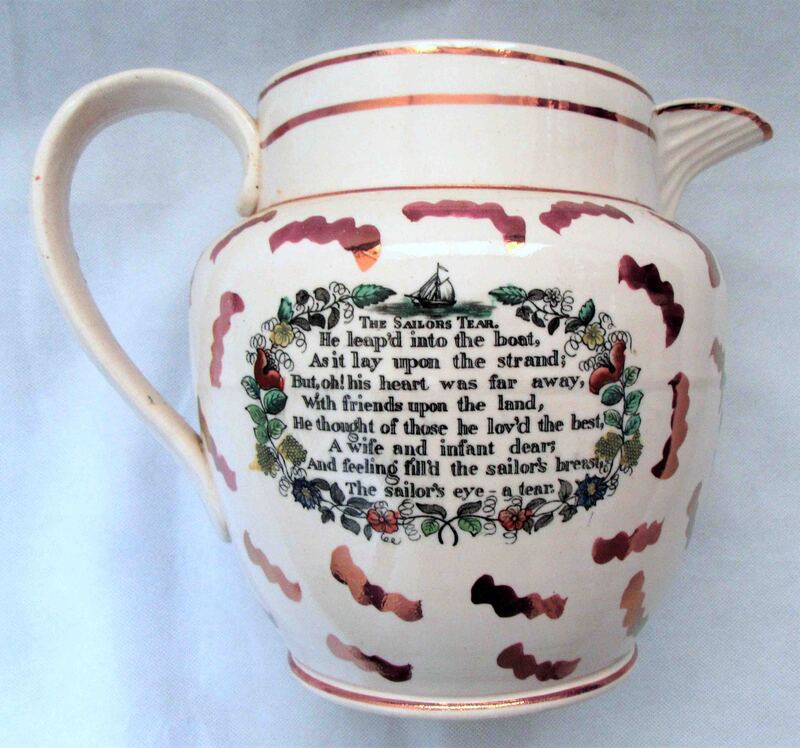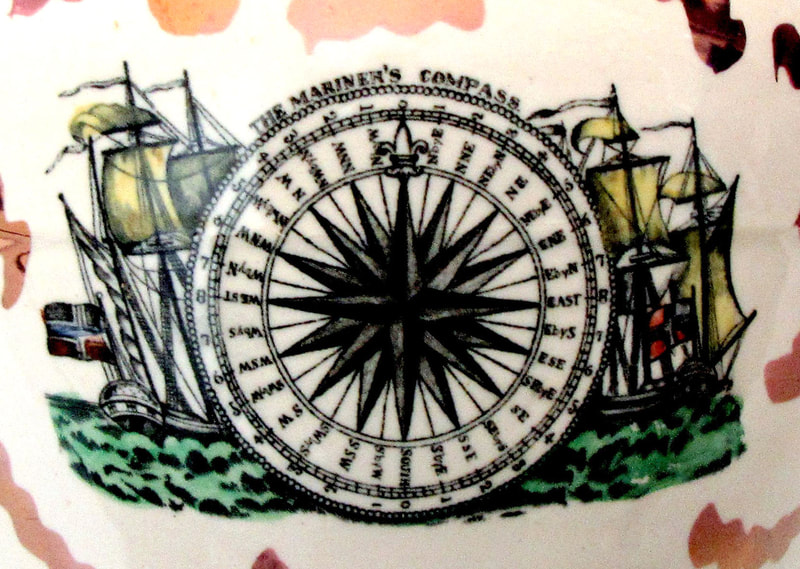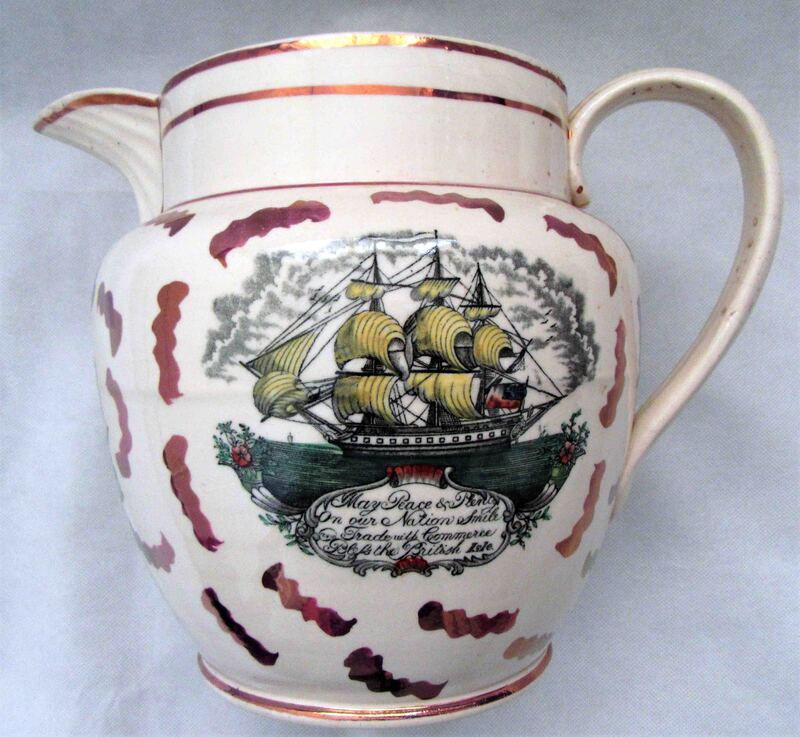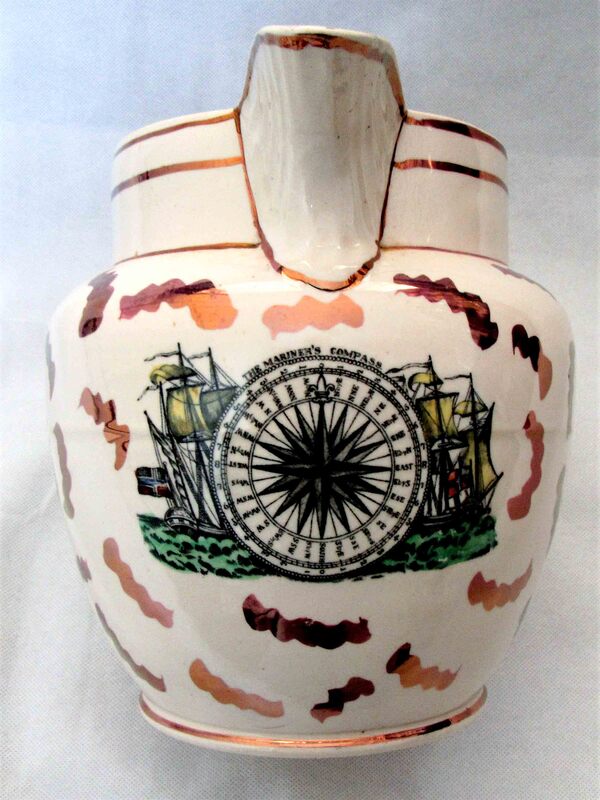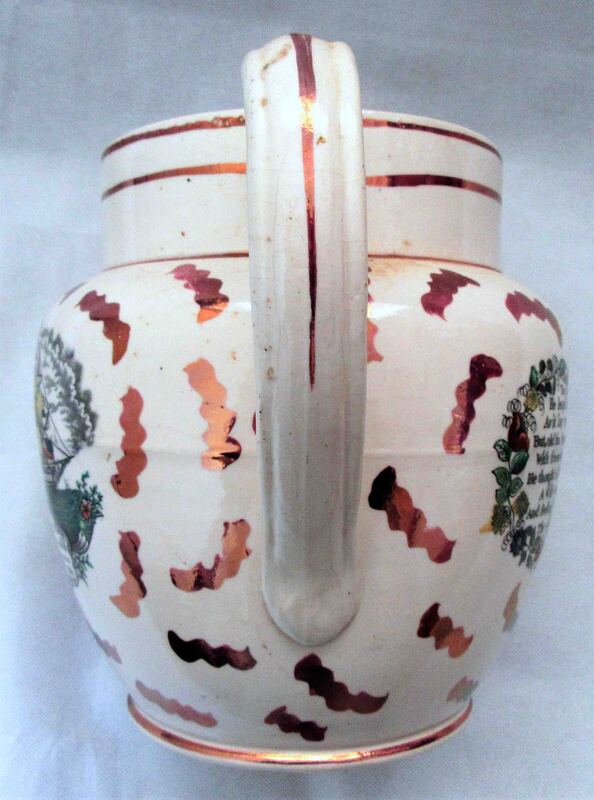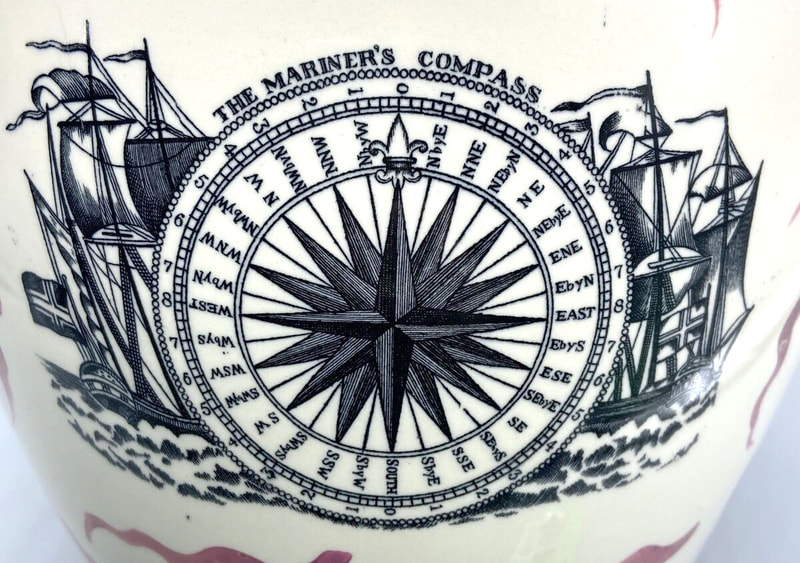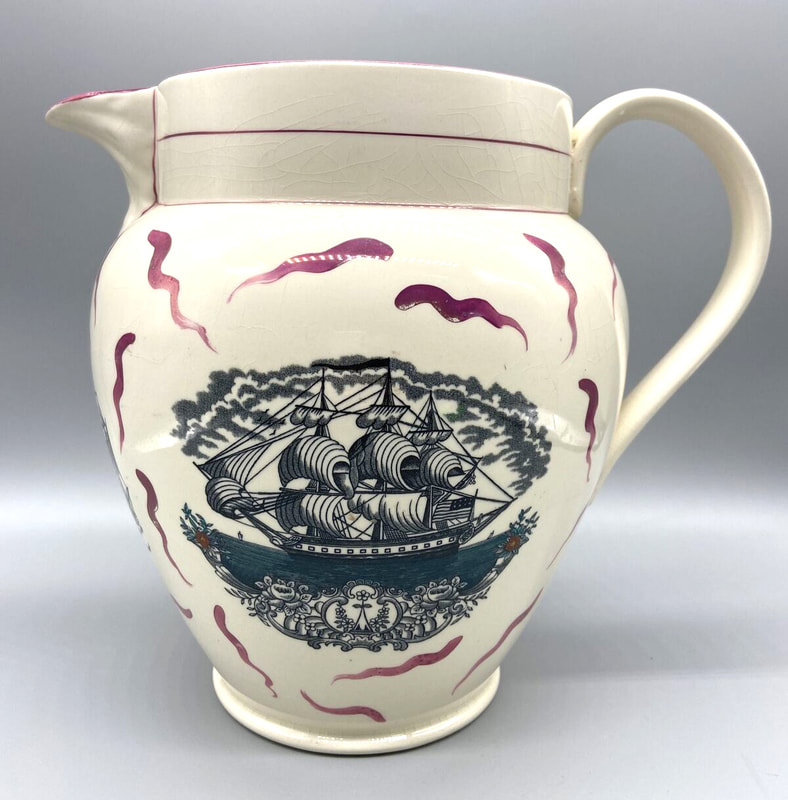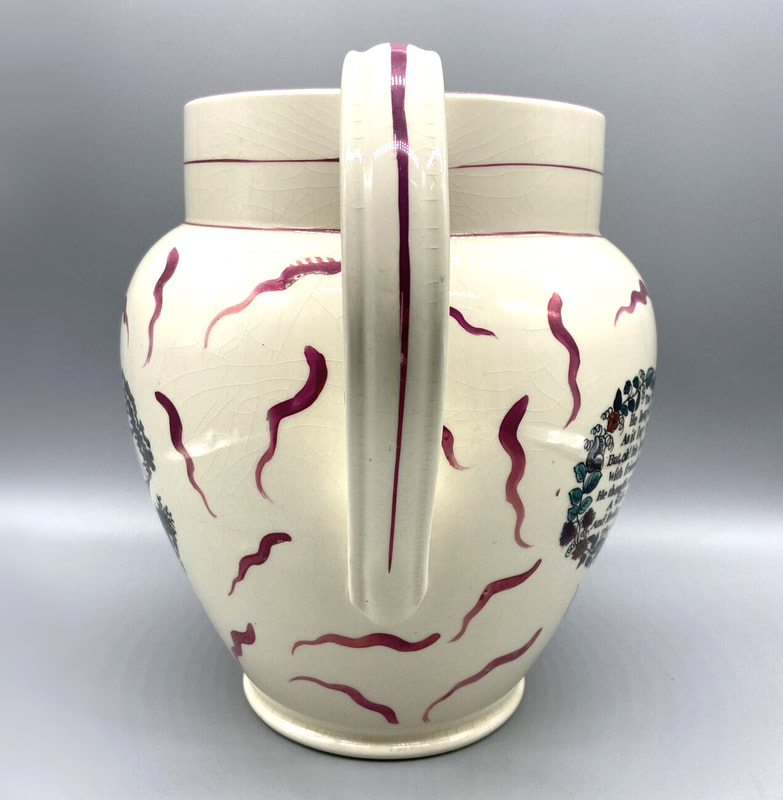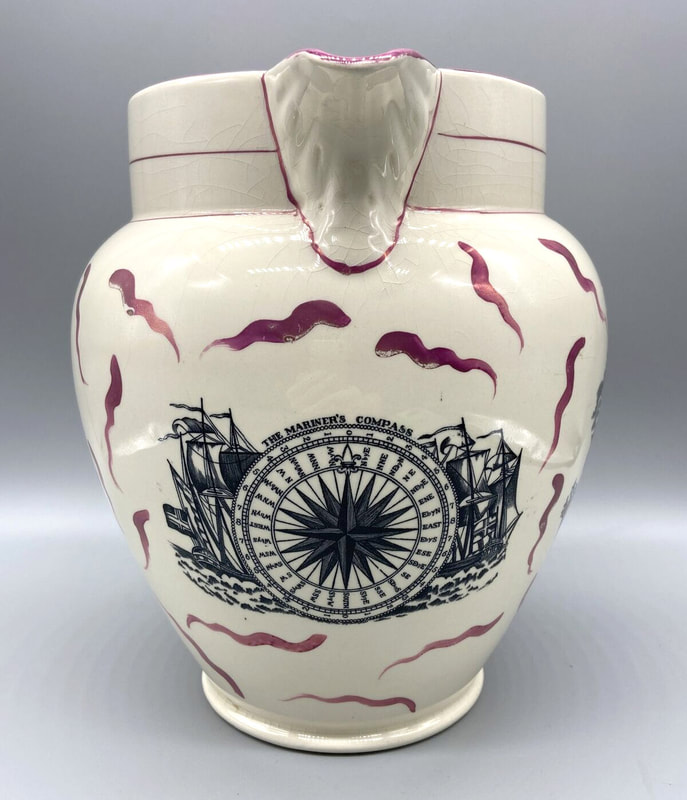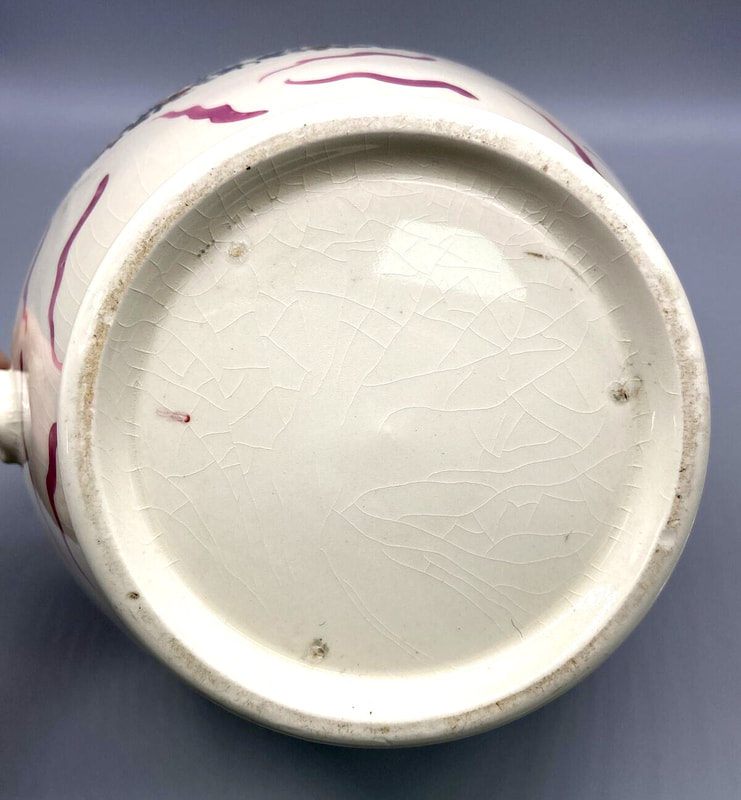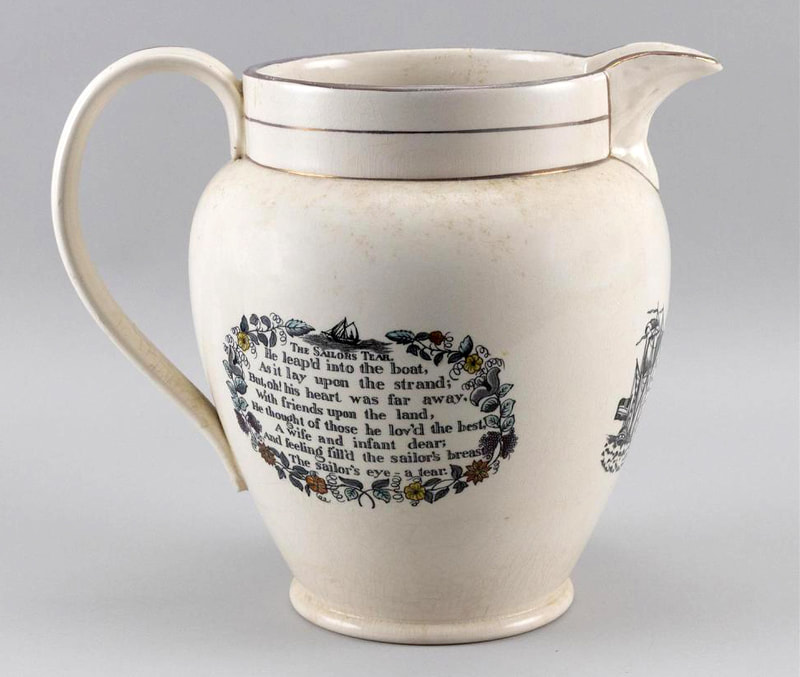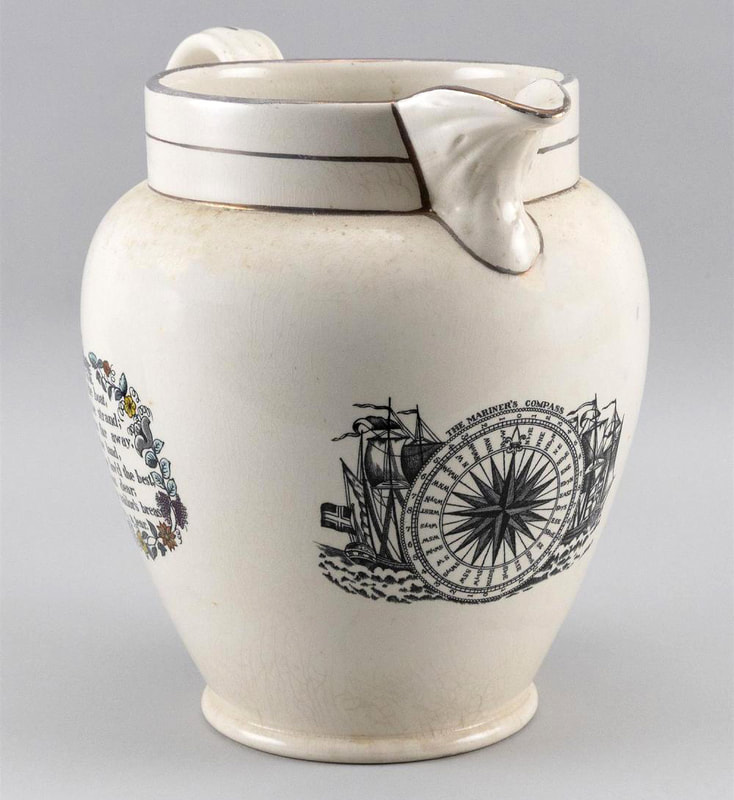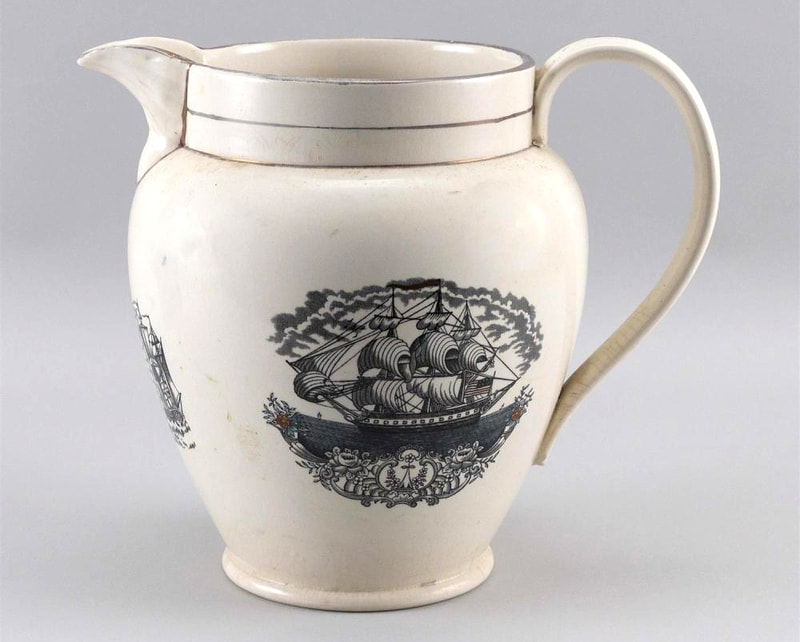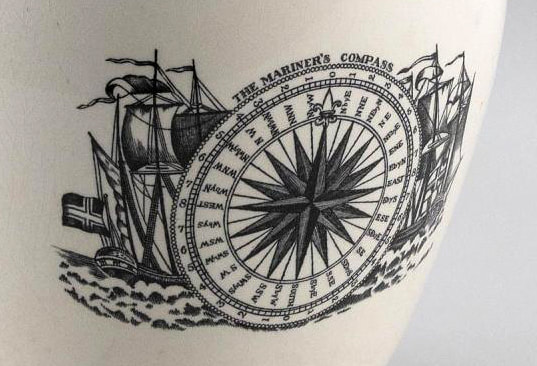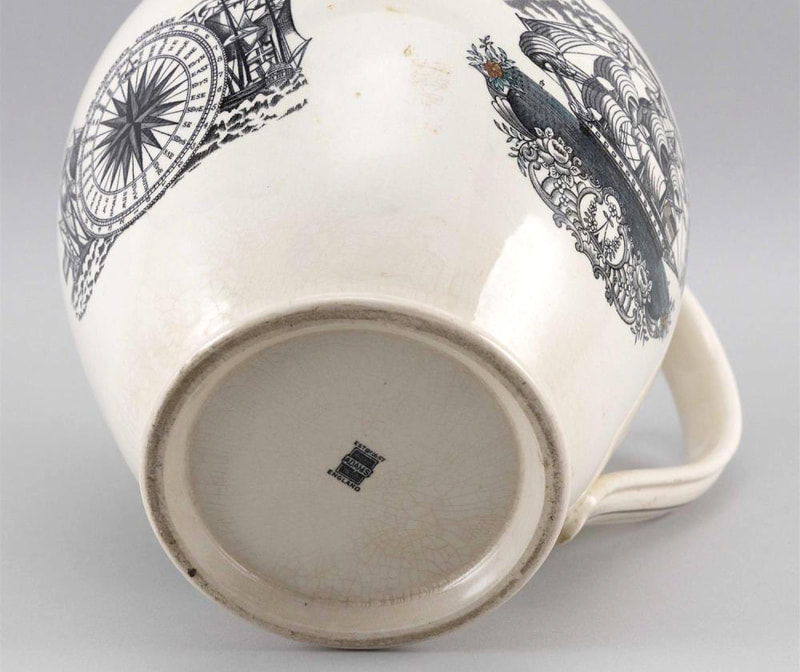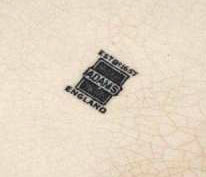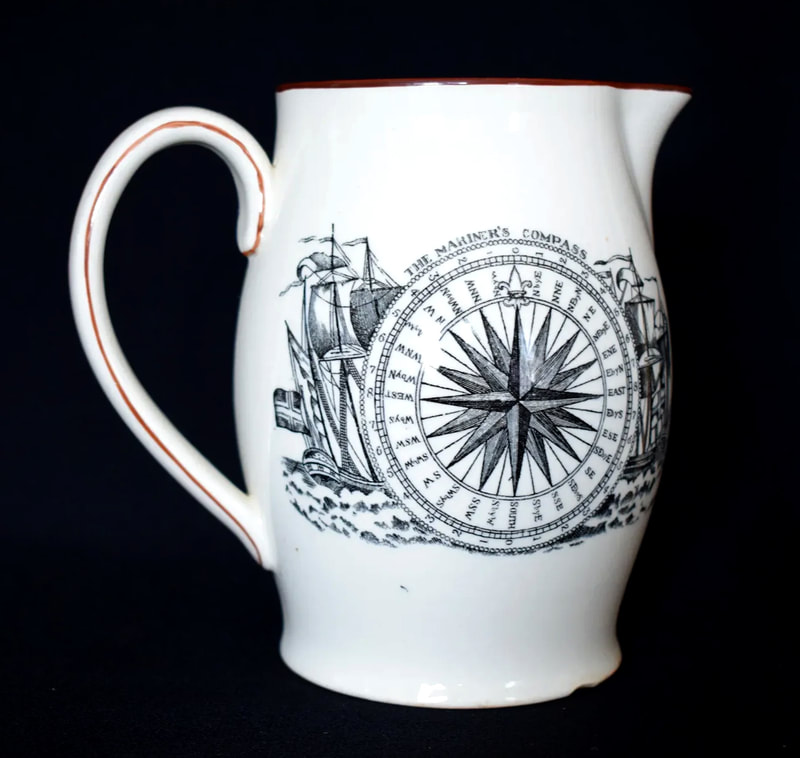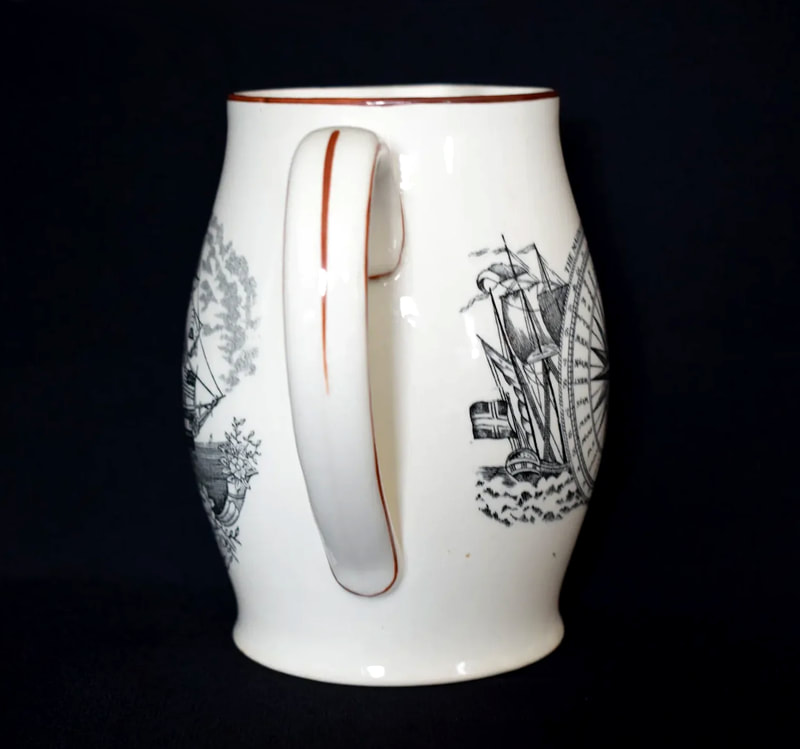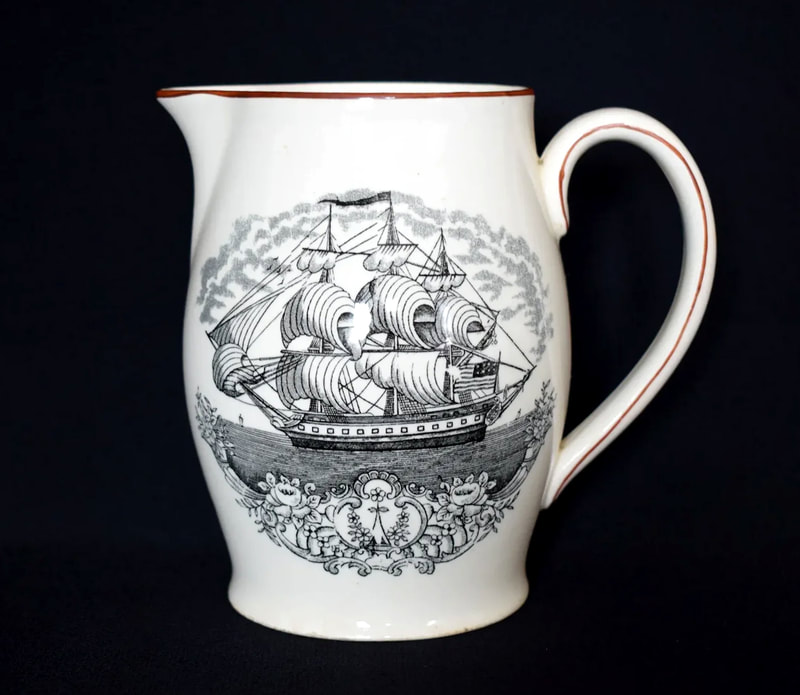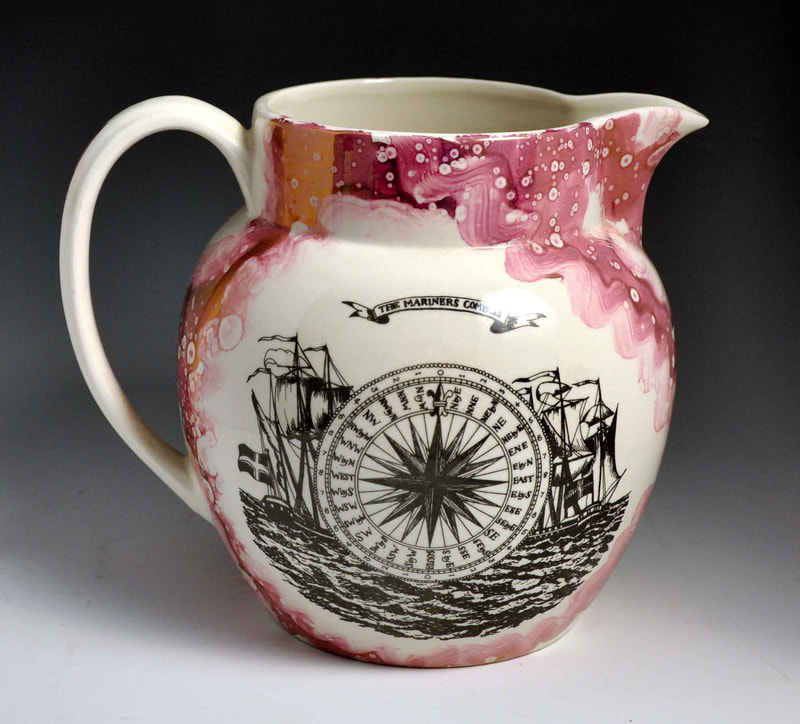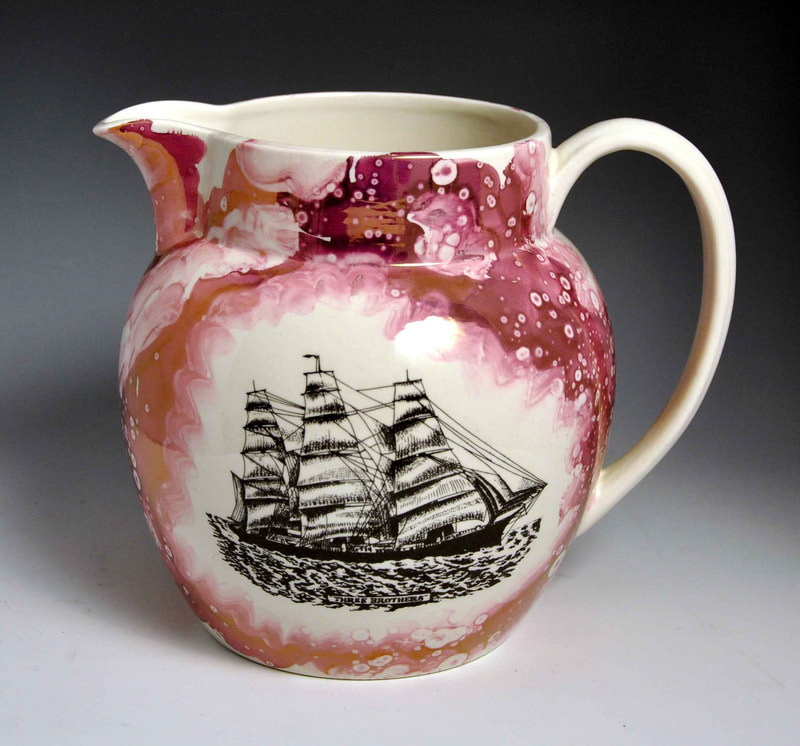Mariner's Compass – Sunderland
Garrison Pottery 1
This transfer, with ships on either side of the compass, appears on typical Dixon plaques with impressed marks.
More unusual versions with coloured enamels and on a circular plaque form.
The rare loving cup below appears to have the same version of the transfer. The frog is typical of items from the 1840s.
A jug with the transfer and an inscription for 1848, and a frog mug with a similar frog to the loving cup above.
Garrison Pottery 2
This transfer is almost identical to the one above. However, note the shading of the flag on the right. There's a small nick above the point SE.
The bowl has the Dixon Phillips anchor impress used before 1850.
The small nick is clearer on the jug below (bottom right detail).
Garrison Pottery 3
This transfer appears on items with bright enamel decoration. It is very similar to those above, except there is no full stop after the word compass.
Below, a wash bowl with a 'Dixon Co' impressed mark, used from about 1850. Typically, the transfers on the outside of the bowl are not decorated with coloured enamels.
On the bowl below, the apostrophe appears to have been trimmed, with its tail is just visible.
On the first row below are images showing the other transfers on the bowl. On the second row is a similar bowl with typical Dixon transfers. Beneath that is a large pedestal bowl, c1860.
Note the the cross-shaded marks under black marks under the compass. The first detail is from the mug above, which looks to be the earliest imprint. The middle detail is from the first bowl, and the final detail is from the Crimea jug below.
Moore's Wear Pottery
Below a particularly well-decorated Moore jug and a punch bowl with the transfer. The bowl has the New Bridge (opened 1859) transfer and the cable laying ship Agamemnon in a storm (1858), so the items were made c1860.
A Moore impressed punch bowl with transfers of dogs, and similar enamelling to the Mariners' compass transfer to the items above.
A Scott & Sons, Southwick Pottery, 1828–1841
The Scott version of the transfer is easy to spot because the masts of the ships are painted in black and white stripes. The sea has very distinctive hatching. The mug has a number 6 printed below the handle.
Below, a jug with very similar decoration, c1830. The horizontal brushstrokes of pink lustre in irregular patches are typical of Scott's during the 1820s and early 30s.
Scott appears to have used this transfer more rarely than the other Sunderland potteries. I have seen no examples from beyond the 1830s.
Mariner's Compass – Tyneside
Thomas Fell, St Peter's Pottery
The jug, c1840, is attributed to Fell on the basis of the distinctive lustre decoration, elements of which are found on plaques with the Fell impress. The over-glaze transfers of Fell items from this period have a sooty quality.
NB no apostrophe or full stop in the title.
NB no apostrophe or full stop in the title.
Unidentified pottery, perhaps Carr and Patton, Low Lights, North Shields
Unlike the Carr examples that follow, the possessive apostrophe in 'Mariner's' comes before the 's'. The heavy lustre on this high-waisted jug suggests Tyneside rather than Wearside. The bridge transfer (bridge 26) is similar to those used by Dixon and Carr.
Attributed to Carr and Patton, Low Lights, North Shields
A heavily lustred jug from the 1840s typical of Carr and Patton. See the Mariner's Compass (ships 2) page for earlier Carr and Patton examples with printed marks.
Attributed to John Carr and Sons, Low Lights, North Shields 1
This bowl from the 1850s comes from the same copper plate as the Carr and Patton jug above.
This transfer is easily identified by a diagonal scratch to the left of the 'T' in the title (see top right above). These bowls could easily be mistaken for wares from Dixon, Phillips & Co's Garrison Pottery. The lustre decoration is of a fine quality and the bowl is lightly potted.
The apostrophe after 'Mariners' is clearer on the second bowl below.
The details below are from the last two bowls above and the jug below, respectively. Again, note the diagonal scratch to the upper left of the 'T' in the title. Also, the way the '4' is etched, and the heavy full stop on the 'W' beside it. All three come from the same copper plate, but the third imprint is after restoration and re-etching. Details have been added at a later date, such as the vertical marks on the sails.
Attributed to John Carr and Sons, Low Lights, North Shields 2
This version of the transfer has rows of vertical marks on the sails. I am informed by Ian Holmes that these are called 'reefing lines'. The lustre decoration to the collar of the second jug appears to be particular to North Shields. The third jug is dated 1851.
This appears to be a later imprint of the transfer above, c1870. Note that the marks on the sail in the top right detail (reefing lines) are now peppered with small random scratches. These were mistaken for part of the design in the next round of engraving (see plate 3 below).
John Carr and Sons, Low Lights, North Shields 3
A bowl from c1870s with orange lustre, and a John Carr and Sons mark with stag's head. This appears to be a rude reimagining of the transfer above. Note that the vertical marks on the sails are now a random distribution of dots.
Attributed to John Carr and Sons, Low Lights, North Shields 4
Note that in this version the apostrophe is placed differently (Mariner's not Mariners'). This is possibly a later imprint from the Garrison transfer after re-engraving. See the May Peace and Plenty page for more details. Here shown on two bowls with the 'Mariners' Arms' transfer with the motto misspelt ('Deus Tabit Vela' instead of 'Deus Dabit Vela'), which appears to be unique to North Shields.
Attributed to John Carr and Sons, Low Lights, North Shields 5
This is similar to the version above with the apostrophe before the 's'. The jug, although unmarked, has typical Carr decoration, c1870s. The other sides are shown on the top row below. The transfer also appears on a huge and heavily potted, unmarked, jug with similar decoration.
James Wallace & Co, Forth Banks, Newcastle Pottery – 1838–1858
The Mason's Arms and Farmer's Arms transfers on the items below are reliably attributed to the Newcastle Pottery. These items are from c1850.
Mariner's Compass – Staffordshire
Adam's Pottery
The jugs below are technically reproductions made in Staffordshire, in the first half of the 20th century. These jugs, which only ever seem to appear with these three transfers, are very similar to late Dixon items. The yellow enamelling over the sails of the ship transfers is similar, and Dixon did on occasion use similar lustre decoration and fluted collars. The jug has a ridge running around it, suggesting that it was moulded, rather than turned on a wheel.
The quality of the lustre decoration on the jug below is very similar to the one above. NB it has a different version of the 'May Peace and Plenty' transfer with a ship with an American flag.
The jug below has an Adams' mark used between 1914 and 1930. See more examples here.
Gray's type reproduction
A common reproduction from the second half of the 20th century. These reproductions have a distinctive dark mottled lustre. You can see more examples here.
